
- 阻害剤
- 研究分野別
- PI3K/Akt/mTOR
- Epigenetics
- Methylation
- Immunology & Inflammation
- Protein Tyrosine Kinase
- Angiogenesis
- Apoptosis
- Autophagy
- ER stress & UPR
- JAK/STAT
- MAPK
- Cytoskeletal Signaling
- Cell Cycle
- TGF-beta/Smad
- 化合物ライブラリー
- Popular Compound Libraries
- Customize Library
- Clinical and FDA-approved Related
- Bioactive Compound Libraries
- Inhibitor Related
- Natural Product Related
- Metabolism Related
- Cell Death Related
- By Signaling Pathway
- By Disease
- Anti-infection and Antiviral Related
- Neuronal and Immunology Related
- Fragment and Covalent Related
- FDA-approved Drug Library
- FDA-approved & Passed Phase I Drug Library
- Preclinical/Clinical Compound Library
- Bioactive Compound Library-I
- Bioactive Compound Library-II
- Kinase Inhibitor Library
- Express-Pick Library
- Natural Product Library
- Human Endogenous Metabolite Compound Library
- Alkaloid Compound LibraryNew
- Angiogenesis Related compound Library
- Anti-Aging Compound Library
- Anti-alzheimer Disease Compound Library
- Antibiotics compound Library
- Anti-cancer Compound Library
- Anti-cancer Compound Library-Ⅱ
- Anti-cancer Metabolism Compound Library
- Anti-Cardiovascular Disease Compound Library
- Anti-diabetic Compound Library
- Anti-infection Compound Library
- Antioxidant Compound Library
- Anti-parasitic Compound Library
- Antiviral Compound Library
- Apoptosis Compound Library
- Autophagy Compound Library
- Calcium Channel Blocker LibraryNew
- Cambridge Cancer Compound Library
- Carbohydrate Metabolism Compound LibraryNew
- Cell Cycle compound library
- CNS-Penetrant Compound Library
- Covalent Inhibitor Library
- Cytokine Inhibitor LibraryNew
- Cytoskeletal Signaling Pathway Compound Library
- DNA Damage/DNA Repair compound Library
- Drug-like Compound Library
- Endoplasmic Reticulum Stress Compound Library
- Epigenetics Compound Library
- Exosome Secretion Related Compound LibraryNew
- FDA-approved Anticancer Drug LibraryNew
- Ferroptosis Compound Library
- Flavonoid Compound Library
- Fragment Library
- Glutamine Metabolism Compound Library
- Glycolysis Compound Library
- GPCR Compound Library
- Gut Microbial Metabolite Library
- HIF-1 Signaling Pathway Compound Library
- Highly Selective Inhibitor Library
- Histone modification compound library
- HTS Library for Drug Discovery
- Human Hormone Related Compound LibraryNew
- Human Transcription Factor Compound LibraryNew
- Immunology/Inflammation Compound Library
- Inhibitor Library
- Ion Channel Ligand Library
- JAK/STAT compound library
- Lipid Metabolism Compound LibraryNew
- Macrocyclic Compound Library
- MAPK Inhibitor Library
- Medicine Food Homology Compound Library
- Metabolism Compound Library
- Methylation Compound Library
- Mouse Metabolite Compound LibraryNew
- Natural Organic Compound Library
- Neuronal Signaling Compound Library
- NF-κB Signaling Compound Library
- Nucleoside Analogue Library
- Obesity Compound Library
- Oxidative Stress Compound LibraryNew
- Phenotypic Screening Library
- PI3K/Akt Inhibitor Library
- Protease Inhibitor Library
- Protein-protein Interaction Inhibitor Library
- Pyroptosis Compound Library
- Small Molecule Immuno-Oncology Compound Library
- Mitochondria-Targeted Compound LibraryNew
- Stem Cell Differentiation Compound LibraryNew
- Stem Cell Signaling Compound Library
- Natural Phenol Compound LibraryNew
- Natural Terpenoid Compound LibraryNew
- TGF-beta/Smad compound library
- Traditional Chinese Medicine Library
- Tyrosine Kinase Inhibitor Library
- Ubiquitination Compound Library
-
Cherry Picking
You can personalize your library with chemicals from within Selleck's inventory. Build the right library for your research endeavors by choosing from compounds in all of our available libraries.
Please contact us at info@selleck.co.jp to customize your library.
You could select:
- 抗体
- 新製品
- お問い合わせ
Autophagy
Autophagy製品
- All (316)
- Autophagy阻害剤 (68)
- Autophagy活性剤(212)
- Autophagy拮抗剤(1)
- Autophagy作動薬(2)
- Autophagyモジュレータ(14)
- 新製品
| 製品コード | 製品名称 | 製品説明 | 文献中Selleckの製品使用例 | お客様のフィードバック |
|---|---|---|---|---|
| S1078 | MK-2206 Dihydrochloride | MK-2206 2HCl は高い選択性をもつ Akt1/2/3 阻害剤であり、cell-free assay における IC50 はそれぞれ 8 nM/ 12 nM/ 65 nM です。一方で、他の250種におよぶキナーゼ (kinases) に対しては活性が検出されていません。MK-2206 2HCl はがん細胞におけるオートファジー (autophagy) やアポトーシス (apoptosis) に関与します。臨床第2相試験中 |
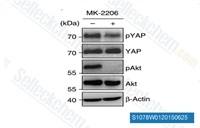
|
|
| S1039 | Rapamycin (Sirolimus) | ラパマイシン (Rapamycin (NSC-2260804,AY-22989)) は特異的 mTOR 阻害剤であり、HEK293 細胞に対する IC50 は < 0.1 nM です。 |
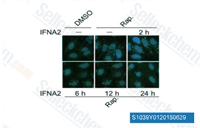
|
|
| S1105 | LY294002 | LY294002 (SF 1101, NSC 697286) は人工的に合成した分子としては初めての PI3Kα/δ/β 阻害剤であり、IC50 はそれぞれ 0.5 μM/ 0.57 μM/ 0.97 μM です。溶液中でウォルトマンニン (wortmannin) よりも安定しています。クラス I PI3K および PI3K 関連キナーゼだけでなく、一見 PI3K ファミリーには無関係にある新規のターゲットにも結合します。LY294002 は CK2 阻害剤でもあり、IC50 は 98 nM です。また LY294002 はオートファゴソーム (autophagosome) の形成をブロックする一方で、DNA-PKcs を非特異的に阻害することによりオートファジー (autophagy) を活性化し、アポトーシス (apoptosis) を誘導します。 |
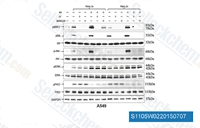
|
|
| S1060 | Olaparib (AZD2281) | オラパリブ (Olaparib (AZD2281, KU0059436)) は選択的 PARP1/2 阻害剤であり、cell-free assay における IC50 はそれぞれ 5 nM および 1 nM です。タンキラーゼ-1 (Tankyrase-1) に対しては 1/300 の効果を示します。オラパリブは BRCA に変異をきたした細胞において、マイトファジー (mitophagy) に関連した顕著なオートファジー (mitophagy) を誘発します。 |
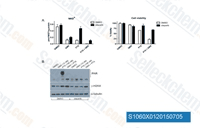
|
|
| S1460 | SP600125 | SP600125 (Nsc75890) is a broad-spectrum JNK inhibitor for JNK1, JNK2 and JNK3 with IC50 of 40 nM, 40 nM and 90 nM in cell-free assays, respectively; 10-fold greater selectivity against MKK4, 25-fold greater selectivity against MKK3, MKK6, PKB, and PKCα, and 100-fold selectivity against ERK2, p38, Chk1, EGFR etc. SP600125 is also a broad‐spectrum inhibitor of serine/threonine kinases including Aurora kinase A,FLT3 and TRKA with of IC50 of 60 nM, 90 nM and 70 nM. SP600125 inhibits autophagy and activates apoptosis. |
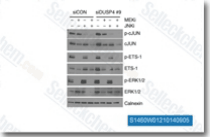
|
|
| S1049 | Y-27632 Dihydrochloride | Y-27632 2HCl は選択的 ROCK1 (p160ROCK) 阻害剤であり、cell-free assay における Ki は 140 nM です。PKC, cAMP-依存性プロテインキナーゼ, MLCK や PAK など他のキナーゼよりも ROCK1 に対して 200 倍以上の選択性を示します。 |
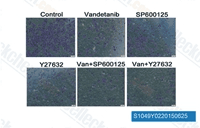
|
|
| S1013 | Bortezomib | ボルテゾミブ (Bortezomib (PS-341, LDP-341, MLM341, NSC 681239)) は強力な 20S プロテアソーム (20S proteasome) 阻害剤であり、Ki は 0.6 nM です。正常細胞に比べがん細胞に対してより高い選択性を示します。 ボルテゾミブ (PS-341) は NF-κB を阻害し ERK のリン酸化を誘導することにより、卵巣がんなどの固形腫瘍において カテプシンB (cathepsin B) を抑制し、オートファジー (autophagy) の分解過程を阻害します。 |
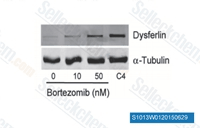
|
|
| S2767 | 3-Methyladenine (3-MA) | 3-MA (3-Methyladenine) is a selective PI3K inhibitor for Vps34 and PI3Kγ with IC50 of 25 μM and 60 μM in HeLa cells; blocks class I PI3K consistently, whereas suppression of class III PI3K is transient, and also blocks autophagosome formation. Solutions are unstable and should be fresh-prepared. |
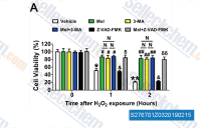
|
|
| S1263 | CHIR-99021 (Laduviglusib) | ラドゥビグルシブ (Laduviglusib (CHIR-99021、CT99021)) は GSK-3α および GSK-3β 阻害剤であり、IC50 はそれぞれ 10 nM および 6.7 nM です。 ラドゥビグルシブは、サイクリン依存性キナーゼ (CDK) に対して交差反応性を示さず、CDK と比較して GSK-3β に対して 350 倍の選択性を示します。 Laduviglusib は Wnt/β-catenin 活性化因子として機能し、オートファジー (autophagy) を誘導します。 |
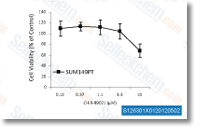
|
|
| S1120 | Everolimus (RAD001) | エベロリムス (Everolimus (RAD001, SDZ-RAD)) は FKBP12 に結合することで形成した複合体により mTOR を阻害します。Cell-free assay における IC50 は1.6 ~ 2.4 nM です。エベロリムスは アポトーシス (apoptosis) と オートファジー (autophagy) を誘発することによりがん細胞の増殖を阻害します。 |
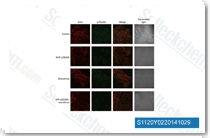
|
|
| S1102 | U0126-EtOH | U0126-EtOH is a highly selective inhibitor of MEK1/2 with IC50 of 0.07 μM/0.06 μM in cell-free assays, 100-fold higher affinity for ΔN3-S218E/S222D MEK than PD98059. U0126 inhibits autophagy and mitophagy with antiviral activity. |
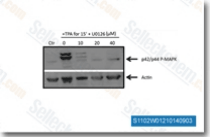
|
|
| S1025 | Gefitinib (ZD1839) | Gefitinib is an EGFR inhibitor for Tyr1173, Tyr992, Tyr1173 and Tyr992 in the NR6wtEGFR and NR6W cells with IC50 of 37 nM, 37nM, 26 nM and 57 nM, respectively. Gefitinib promotes autophagy and apoptosis of lung cancer cells via blockade of the PI3K/AKT/mTOR pathway. |
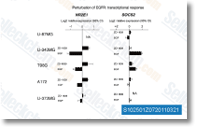
|
|
| S1166 | Cisplatin | シスプラチン (Cisplatin (NSC 119875, Cisplatinum, cis-diamminedichloroplatinum II, CDDP, cis DDP, DDP)) は無機白金錯体であり、腫瘍細胞中において DNA 付加物を形成することにより DNA 合成を阻害する能力を有します。シスプラチンはフェロトーシス (ferroptosis) を活性化し、オートファジー (autophagy) を誘導します。溶液は都度調製してください。Solutions are unstable and should be fresh-prepared.DMSO is not recommended to dissolve platinum-based drugs, which can easily lead to drug inactivation. |
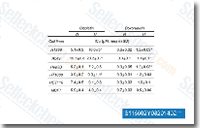
|
|
| S1267 | Vemurafenib (PLX4032) | Vemurafenib (RG7204, RO5185426,PLX4032) is a novel and potent inhibitor of B-RafV600E with IC50 of 31 nM in cell-free assay. 10-fold selective for B-RafV600E over wild-type B-Raf in enzymatic assays and the cellular selectivity can exceed 100-fold. Vemurafenib (PLX4032, RG7204) induces autophagy. |
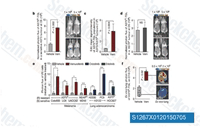
|
|
| S2924 | Laduviglusib (CHIR-99021) Hydrochloride | ラドゥビグルシブ塩酸塩 (Laduviglusib (CHIR-99021; CT99021) HCl) は CHIR-99021 の塩酸塩で、GSK-3α/β 阻害剤 (IC50 = 10 nM/6.7 nM) です。 CHIR-99021 は、最も近縁なホモログである Cdc2 および ERK2 と比較して、GSK-3 に対して 500 倍を超える選択性を示します。 CHIR-99021 は、Wnt/β-カテニン シグナル伝達経路の強力な薬理学的活性化因子です。 CHIR-99021 は、光誘発されるオートファジー (autophagy) を大幅にレスキューし、GR、RORα、およびオートファジー関連タンパク質量を増大します。 |
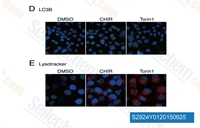
|
|
| S1378 | Ruxolitinib (INCB18424) | ルクソリチニブ (Ruxolitinib (INCB018424)) は、最初に臨床試験が行われた強力で選択的なJAK1/2 阻害剤であり、IC50 はそれぞれ 3.3 nM/ 2.8 nM、JAK1/2 に対して JAK3 の 130 倍の選択性を示します。ルクソリチニブはマイトファジー (mitophagy) によって抗腫瘍作用を示します。また、オートファジー (autophagy) を誘導し、アポトーシス (apoptosis) を促進します。 |
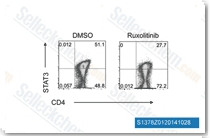
|
|
| S1023 | Erlotinib Hydrochloride | Erlotinib HCl is an EGFR inhibitor with IC50 of 2 nM in cell-free assays, >1000-fold more sensitive for EGFR than human c-Src or v-Abl. |
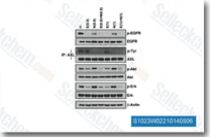
|
|
| S7786 | Erlotinib (CP-358774) | Erlotinib is an EGFR inhibitor with IC50 of 2 nM, >1000-fold more sensitive for EGFR than human c-Src or v-Abl. Erlotinib induces autophagy. |

|
|
| S8048 | Venetoclax (ABT-199) | Venetoclax (ABT-199, GDC-0199) is a Bcl-2-selective inhibitor with Ki of <0.01 nM in cell-free assays, >4800-fold more selective versus Bcl-xL and Bcl-w, and no activity to Mcl-1. Venetoclax is reported to induce cell growth suppression, apoptosis, cell cycle arrest, and autophagy in triple negative breast cancer MDA-MB-231 cells. Phase 3. |
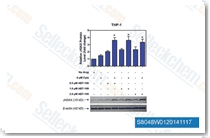
|
|
| S1047 | Vorinostat (SAHA) | Vorinostat (SAHA) is an HDAC inhibitor with IC50 of ~10 nM in a cell-free assay. Vorinostat abrogates productive HPV-18 DNA amplification. |
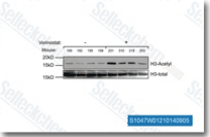
|
|
| S1021 | Dasatinib | Dasatinibは新規の強力なマルチターゲット阻害剤であり、cell-free assy における Abl, Src および c-Kit に対する IC50 はそれぞれ < 1 nM, 0.8 nM および 79 nM です。Dsatinib はオートファジー (autophagy) とアポトーシス (apoptosis) を誘発し、抗腫瘍活性を示します。 |
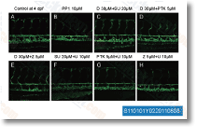
|
|
| S1250 | Enzalutamide (MDV3100) | エンザルタミド (Enzalutamide (MDV3100)) は、アンドロゲン受容体 (androgen receptor, AR) アンタゴニストで LNCaP 細胞における IC50 は36 nM です。エンザルミドはオートファジー (autophagy) を増加させることが示されています。 |
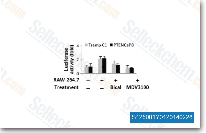
|
|
| S7397 | Sorafenib (BAY 43-9006) | Sorafenib is a multikinase inhibitor of Raf-1 and B-Raf with IC50 of 6 nM and 22 nM in cell-free assays, respectively. Sorafenib inhibits VEGFR-2, VEGFR-3, PDGFR-β, Flt-3 and c-KIT with IC50 of 90 nM, 20 nM, 57 nM, 59 nM and 68 nM, respectively. Sorafenib induces autophagy and apoptosis and activates ferroptosis with anti-tumor activity. |
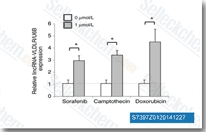
|
|
| S7306 | Dorsomorphin Dihydrochloride | Dorsomorphin 2HCl is a potent, reversible, selective AMPK inhibitor with Ki of 109 nM in cell-free assays, exhibiting no significant inhibition of several structurally related kinases including ZAPK, SYK, PKCθ, PKA, and JAK3. Also inhibits type Ⅰ BMP receptor activity. Dorsomorphin induces autophagy in cancer cell line. |
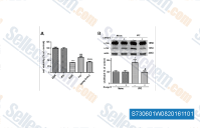
|
|
| S2111 | Lapatinib | Lapatinib is a potent EGFR and ErbB2 inhibitor with IC50 of 10.8 and 9.2 nM in cell-free assays, respectively. Lapatinib induces ferroptosis and autophagic cell death. |
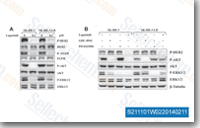
|
|
| S1009 | Dactolisib (BEZ235) | Dactolisib (BEZ235, NVP-BEZ235) is a dual ATP-competitive PI3K and mTOR inhibitor for p110α/γ/δ/β and mTOR(p70S6K) with IC50 of 4 nM /5 nM /7 nM /75 nM /6 nM in cell-free assays, respectively. Inhibits ATR with IC50 of 21 nM in 3T3TopBP1-ER cell. Dactolisib induces autophagy and suppresses HIV-1 replication. Phase 2. |
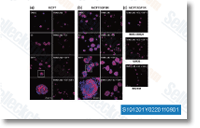
|
|
| S1065 | Pictilisib (GDC-0941) | Pictilisib (GDC-0941, RG7321) is a potent inhibitor of PI3Kα/δ with IC50 of 3 nM in cell-free assays, with modest selectivity against p110β (11-fold) and p110γ (25-fold). Pictilisib (GDC-0941) induces autophagy and apoptosis. Phase 2. |
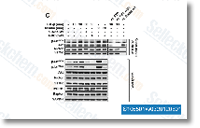
|
|
| S1068 | Crizotinib (PF-02341066) | Crizotinib is a potent inhibitor of c-Met and ALK with IC50 of 11 nM and 24 nM in cell-based assays, respectively. It is also a potent ROS1 inhibitor with Ki value less than 0.025 nM. Crizotinib induces autophagy through inhibition of the STAT3 pathway in multiple lung cancer cell lines. |
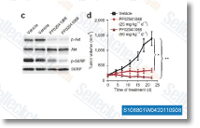
|
|
| S7840 | Dorsomorphin | Dorsomorphin is a potent, reversible, selective AMPK inhibitor with Ki of 109 nM in cell-free assays, exhibiting no significant inhibition of several structurally related kinases including ZAPK, SYK, PKCθ, PKA, and JAK3. Dorsomorphin selectively inhibits the BMP type I receptors ALK2, ALK3 and ALK6. Dorsomorphin is used in promoting specific cell differentiation and inducing cancer cell line autophagy. For animal testing, the water-soluble S7306 Dorsomorphin (Compound C) 2HCl is recommended. |
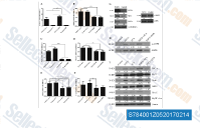
|
|
| S1053 | Entinostat (MS-275) | Entinostat (MS-275, SNDX-275) strongly inhibits HDAC1 and HDAC3 with IC50 of 0.51 μM and 1.7 μM in cell-free assays, compared with HDACs 4, 6, 8, and 10. Entinostat induces autophagy and apoptosis. Phase 3. |
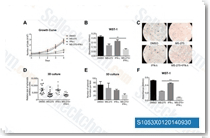
|
|
| S1150 | Paclitaxel | パクリタキセル (Paclitaxel (NSC 125973, PTX)) は微小管を安定化することで脱重合を阻害します。ヒト血管内皮細胞における IC50 は 0.1 pM です。 |
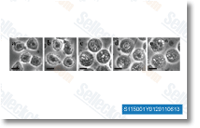
|
|
| S1413 | Bafilomycin A1 (Baf-A1) | バフィロマイシン A1 (Bafilomycin A1(Baf-A1)) は液胞 H+-ATPase 阻害剤で、IC50 は 0.44 nM です。 バフィロマイシン A1 は、オートファジー (autophagy) を阻害する一方で、アポトーシス (apoptosis) を誘導することがわかっています。 |
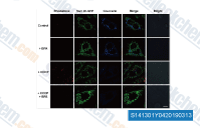
|
|
| S1030 | Panobinostat (LBH589) | Panobinostat (LBH589, NVP-LBH589) is a novel broad-spectrum HDAC inhibitor with IC50 of 5 nM in a cell-free assay. Panobinostat (LBH589) induces autophagy and apoptosis. Panobinostat effectively disrupts HIV latency in vivo. Phase 3. |
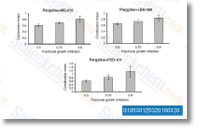
|
|
| S1011 | Afatinib (BIBW2992) | アファチニブ (Afatinib) は in vitro において EGFR/ErbB を不可逆的に阻害します。IC50 は EGFRwt, EGFR L858R , EGFR L858R/T790M ErbB2 (HER2) and ErbB4 (HER4) に対してそれぞれ 0.5, 0.4, 10, 14 および 1 nM です。アファチニブによってオートファジー (autophagy) が誘発されることが報告されています。 |
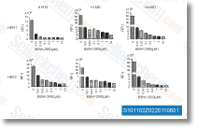
|
|
| S7110 | (+)-JQ1 | (+)-JQ1 is a BET bromodomain inhibitor, with IC50 of 77 nM/33 nM for BRD4(1/2) in cell-free assays, binding to all bromodomains of the BET family, but not to bromodomains outside the BET family. (+)-JQ1 suppresses cell proliferation via inducing autophagy. (+)-JQ1 inhibits the expression of Nuclear receptor binding SET domain protein 3 (NSD3) target genes. |
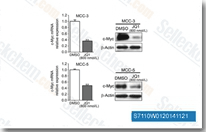
|
|
| S2215 | DAPT | DAPT (GSI-IX、LY-374973) は新規の γ-セクレターゼ 阻害剤であり、HEK 293 細胞で 20 nM の IC50 で Aβ 産生を阻害します。 DAPT はヒト舌癌細胞のアポトーシス(apoptosis) を促進し、オートファジー (autophagy) を調節します。 |
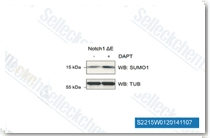
|
|
| S1133 | Alisertib (MLN8237) | Alisertib (MLN8237) is a selective Aurora A inhibitor with IC50 of 1.2 nM in a cell-free assay. It has >200-fold higher selectivity for Aurora A than Aurora B. Alisertib induces cell cycle arrest, apoptosis and autophagy. Phase 3. |
-S113303W0120130926.gif)
|
|
| S1002 | ABT-737 | ABT-737 is a BH3 mimetic inhibitor of Bcl-xL, Bcl-2 and Bcl-w with EC50 of 78.7 nM, 30.3 nM and 197.8 nM in cell-free assays, respectively; no inhibition observed against Mcl-1, Bcl-B or Bfl-1. ABT-737 induces mitochondrial pathway apoptosis and mitophagy. Phase 2. |
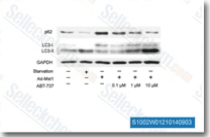
|
|
| S1092 | KU-55933 | KU-55933 is a potent and specific ATM inhibitor with IC50/Ki of 12.9 nM/2.2 nM in cell-free assays, and is highly selective for ATM as compared to DNA-PK, PI3K/PI4K, ATR and mTOR. KU‑55933 (ATM Kinase Inhibitor) inhibits the activation of autophagy‑initiating kinase ULK1 and results in a significant decrease of autophagy. |
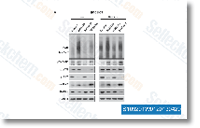
|
|
| S2758 | Wortmannin (SL-2052) | Wortmannin is the first described PI3K inhibitor with IC50 of 3 nM in a cell-free assay, with little selectivity within the PI3K family. Wortmannin blocks autophagosome formation and potently inhibits DNA-PK/ATM with IC50 of 16 nM and 150 nM in cell-free assays. Wortmannin also inhibits PLK1 activity. |

|
|
| S1006 | Saracatinib (AZD0530) | Saracatinib (AZD0530) is a potent Src inhibitor with IC50 of 2.7 nM in cell-free assays, and potent to c-Yes, Fyn, Lyn, Blk, Fgr and Lck; less active for Abl and EGFR (L858R and L861Q). Saracatinib induces autophagy. Phase 2/3. |
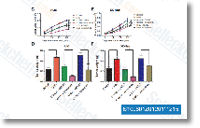
|
|
| S1225 | Etoposide | Etoposide is a semisynthetic derivative of podophyllotoxin, which inhibits DNA synthesis via topoisomerase II inhibition activity which enhances double-strand and single-strand cleavage of DNA and reversibly inhibits repair by topoisomerase II binding. Etoposide induces autophagy, mitophagy and apoptosis. |
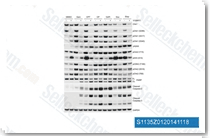
|
|
| S2475 | Imatinib | Imatinib is a multi-target inhibitor of tyrosine kinase with inhibition for v-Abl, c-Kit and PDGFR, IC50 values are 0.6 μM, 0.1 μM and 0.1 μM in cell-free or cell-based assays, respectively. Imatinib (STI571) induces autophagy. |
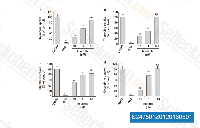
|
|
| S1109 | BI 2536 | BI-2536 is a potent Plk1 inhibitor with IC50 of 0.83 nM in a cell-free assay. BI-2536 inhibits Bromodomain 4 (BRD4) with Kd of 37 nM and potently suppresses c-Myc expression. BI-2536 induces apoptosis and attenuates autophagy. Phase 2. |
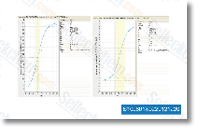
|
|
| S2226 | Idelalisib (CAL-101) | Idelalisib (CAL-101) is a selective p110δ inhibitor with IC50 of 2.5 nM in cell-free assays; shown to have 40- to 300-fold greater selectivity for p110δ than p110α/β/γ, and 400- to 4000-fold more selectivity to p110δ than C2β, hVPS34, DNA-PK and mTOR. Idelalisib also stimulates autophagy. |
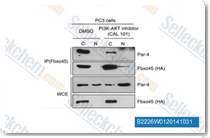
|
|
| S1040 | Sorafenib tosylate | Sorafenib tosylate is a multikinase inhibitor of Raf-1 and B-Raf with IC50 of 6 nM and 22 nM in cell-free assays, respectively. Sorafenib Tosylate inhibits VEGFR-2, VEGFR-3, PDGFR-β, Flt-3 and c-KIT with IC50 of 90 nM, 20 nM, 57 nM, 59 nM and 68 nM, respectively. Sorafenib Tosylate induces autophagy and apoptosis and activates ferroptosis with anti-tumor activity. |
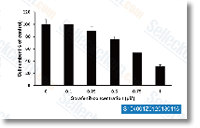
|
|
| S1555 | AZD8055 | AZD8055 is a novel ATP-competitive mTOR inhibitor with IC50 of 0.8 nM in MDA-MB-468 cells with excellent selectivity (∼1,000-fold) against PI3K isoforms and ATM/DNA-PK. AZD8055 induces caspase-dependent apoptosis and also induces autophagy. Phase 1. |
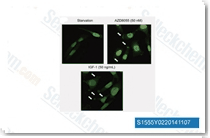
|
|
| S1714 | Gemcitabine | Gemcitabine, a nucleic acid synthesis inhibitor, is a very potent and specific deoxycytidine analogue, used as chemotherapy. Gemcitabine induces a potent p53-dependent apoptosis. |
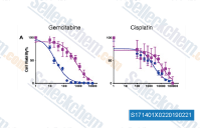
|
|
| S1026 | Imatinib (STI571) Mesylate | Imatinib Mesylate is an orally bioavailability mesylate salt of Imatinib, which is a multi-target inhibitor of v-Abl, c-Kit and PDGFR with IC50 of 0.6 μM, 0.1 μM and 0.1 μM in cell-free or cell-based assays, respectively. Imatinib Mesylate (STI571) induces autophagy. |
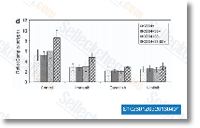
|
|
| S1004 | Veliparib (ABT-888) | Veliparib (ABT-888, NSC 737664) is a potent inhibitor of PARP1 and PARP2 with Ki of 5.2 nM and 2.9 nM in cell-free assays, respectively. It is inactive to SIRT2. Veliparib increases autophagy and apoptosis. Phase 3. |
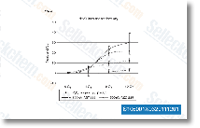
|
|
| S8037 | Necrostatin-1 (Nec-1) | Necrostatin-1 (Nec-1) is a specific RIP1 (RIPK1) inhibitor and inhibits TNF-α-induced necroptosis with EC50 of 490 nM in 293T cells. Necrostatin-1 also blocks IDO and suppresses autophagy and apoptosis. |
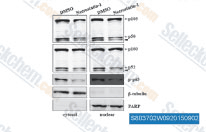
|
|
| S7781 | Sunitinib (SU-11248) | Sunitinib is a multi-targeted RTK inhibitor targeting VEGFR2 (Flk-1) and PDGFRβ with IC50 of 80 nM and 2 nM, and also inhibits c-Kit. Sunitinib is also a dose-dependent inhibitor of the autophosphorylation activity of IRE1α. Sunitinib induces autophagy and apoptosis. |

|
|
| S2827 | Torin 1 | Torin 1 is a potent inhibitor of mTORC1/2 with IC50 of 2 nM/10 nM in cell-free assays; exhibits 1000-fold selectivity for mTOR than PI3K. |
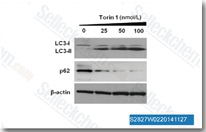
|
|
| S2853 | Carfilzomib (PR-171) | Carfilzomib (PR-171) is an irreversible proteasome inhibitor with IC50 of <5 nM in ANBL-6 cells, displayed preferential in vitro inhibitory potency against the ChT-L activity in the β5 subunit, but little or no effect on the PGPH and T-L activities. Carfilzomib activates prosurvival autophagy and induces cell apoptosis. |
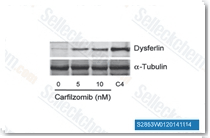
|
|
| S1224 | Oxaliplatin | Oxaliplatin is a DNA alkylating agent that activates autophagy. Oxaliplatin inhibits DNA synthesis by conforming DNA adducts in RT4, TCCSUP, A2780, HT-29, U-373MG, U-87MG, SK-MEL-2, and HT-144 cells.Solutions are unstable and should be fresh-prepared.DMSO is not recommended to dissolve platinum-based drugs, which can easily lead to drug inactivation. |
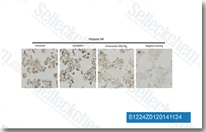
|
|
| S1490 | Ponatinib (AP24534) | Ponatinib is a novel, potent multi-target inhibitor of Abl, PDGFRα, VEGFR2, FGFR1 and Src with IC50 of 0.37 nM, 1.1 nM, 1.5 nM, 2.2 nM and 5.4 nM in cell-free assays, respectively. Ponatinib (AP24534) inhibits autophagy. |
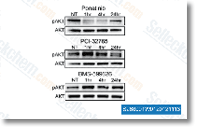
|
|
| S1178 | Regorafenib (BAY 73-4506) | Regorafenibは VEGFR1, VEGFR2, VEGFR3, PDGFRβ, Kit (c-Kit), RET (c-RET) および Raf-1 に対するマルチターゲット阻害剤であり、cell-free assay における IC50 はそれぞれ 13 nM/4.2 nM/46 nM, 22 nM, 7 nM, 1.5 nM, 2.5 nM です。Regorafenib はオートファジーを誘導します。 |
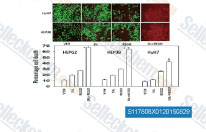
|
|
| S4157 | Chloroquine diphosphate | Chloroquine diphosphate is a 4-aminoquinoline anti-malarial and anti-rheumatoid agent, also acting as an ATM activator. Chloroquine is also an inhibitor of toll-like receptors (TLRs). |
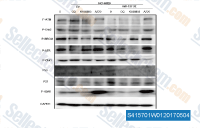
|
|
| S1237 | TMZ(Temozolomide) | テモゾロミド (Temozolomide (NSC 362856,TMZ,CCRG 81045,Methazolastone)) はDNA 環上の窒素原子と環外酸素を修飾することが可能な単官能性 SN1 アルキル化剤であり、中間体である MTIC を経て、活性代謝産物であるメチルジアゾニウムカチオン (methyl diazoniumcation) に分解されると、生理学的 pH において DNA にメチル基を転移します。テモゾロミドはアポトーシス (apoptosis) を誘発し、抗がん活性を呈します。L-1210 細胞および L-1210/BCNU 細胞における DNA 損傷誘導剤です。 |
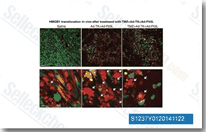
|
|
| S5243 | Ruxolitinib (INCB18424) Phosphate | Ruxolitinib Phosphate (INCB018424, INC424) is the phosphate salt form of Ruxolitinib. Ruxolitinib is the first potent, selective, JAK1/2 inhibitor to enter the clinic with IC50 of 3.3 nM/2.8 nM in cell-free assays, >130-fold selectivity for JAK1/2 versus JAK3. Ruxolitinib kills tumor cells through toxic mitophagy. Ruxolitinib induces autophagy and enhances apoptosis. | ||
| S1130 | Sepantronium Bromide (YM155) | Sepantronium Bromide(YM155) is a potent survivin suppressant by inhibiting Survivin promoter activity with IC50 of 0.54 nM in HeLa-SURP-luc and CHO-SV40-luc cells; does not significantly inhibit SV40 promoter activity, but is observed to slightly inhibit the interaction of Survivin with XIAP. YM155 down-regulates survivin and XIAP, modulates autophagy and induces autophagy-dependent DNA damage in breast cancer cells. Phase 2. |
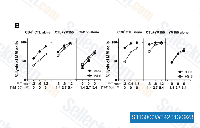
|
|
| S1129 | SRT1720 HCl | SRT1720 HCl is a selective SIRT1 activator with EC50 of 0.16 μM in a cell-free assay, but is >230-fold less potent for SIRT2 and SIRT3. SRT1720 induces autophagy. |
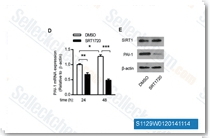
|
|
| S1077 | SB202190 | SB202190 is a potent p38 MAPK inhibitor targeting p38α/β with IC50 of 50 nM/100 nM in cell-free assays, sometimes used instead of SB 203580 to investigate potential roles for SAPK2a/p38 in vivo. SB202190 inhibits endothelial cell apoptosis via induction of autophagy and heme oxygenase-1. SB202190 significantly suppresses Erastin‐dependent ferroptosis. |
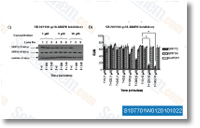
|
|
| S1149 | Gemcitabine Hydrochloride | ゲムシタビンは、DNA合成および修復を阻害し、細胞のオートファジーとアポトーシスを誘導するピリミジンヌクレオシド類似体の抗腫瘍薬です。主に膵臓がんや非小細胞肺がんなどの様々な固形腫瘍の治療に使用され、効果を高めるために化学療法と併用されることがよくあります。 |
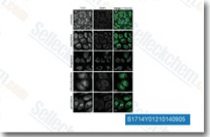
|
|
| S7810 | Afatinib Dimaleate | Afatinib Dimaleate irreversibly inhibits EGFR/HER2 including EGFR(wt), EGFR(L858R), EGFR(L858R/T790M) and HER2 with IC50 of 0.5 nM, 0.4 nM, 10 nM and 14 nM, respectively; 100-fold more active against Gefitinib-resistant L858R-T790M EGFR mutant. Afatinib (BIBW2992) Dimaleate induces autophagy. |

|
|
| S1582 | H-89 Dihydrochloride | H 89 2HCl is a potent PKA inhibitor with Ki of 48 nM in a cell-free assay, 10-fold selective for PKA than PKG,500-fold greater selectivity than PKC, MLCK, calmodulin kinase II and casein kinase I/II. H 89 2HCl induces autophagy. |
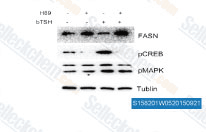
|
|
| S1191 | Fulvestrant (ICI-182780) | フルベストラント (Fulvestrant (ICI-182780, ZD 9238, ZM 182780)) はエストロゲン受容体 (estrogen receptor, ER) アンタゴニストであり、cell-free assay における IC50 は 0.94 nM です。フルベストラントはまたオートファジー (autophagy) とアポトーシス (apoptosis) を誘導し、抗腫瘍活性を呈します。 |
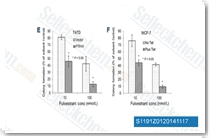
|
|
| S2449 | Forskolin (Colforsin) | コルホルチン (Forskolin (Colforsin)) は、広範な細胞腫における真核生物のアデニル酸シクラーゼ (adenylate cyclase, AC) の遍在する活性化因子であり、細胞生理学の研究において cAMP のレベルを上げるために一般的に使用されています。ホルスコリン (Forskolin) は、PXR と FXR も活性化します。 ホルスコリンはオートファジー (autophagy) を刺激します。 |
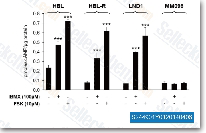
|
|
| S1033 | Nilotinib | Nilotinib is a selective Bcr-Abl inhibitor with IC50 less than 30 nM in Murine myeloid progenitor cells. Nilotinib induces autophagy through AMPK activition. |
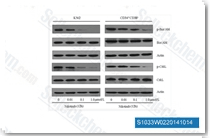
|
|
| S2248 | Silmitasertib (CX-4945) | Silmitasertib (CX-4945) is a potent and selective inhibitor of CK2 (casein kinase 2) with IC50 of 1 nM in a cell-free assay, less potent to Flt3, Pim1 and CDK1 (inactive in cell-based assay). Silmitasertib induces autophagy and promotes apoptosis. Phase 1/2. |
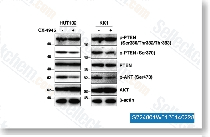
|
|
| S1141 | Tanespimycin (17-AAG) | Tanespimycin (17-AAG, CP127374, NSC-330507, KOS 953) is a potent HSP90 inhibitor with IC50 of 5 nM in a cell-free assay, having a 100-fold higher binding affinity for HSP90 derived from tumour cells than HSP90 from normal cells. Tanespimycin (17-AAG) induces apoptosis, necrosis, autophagy and mitophagy. Phase 3. |
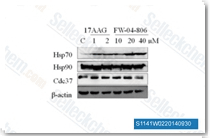
|
|
| S1014 | Bosutinib (SKI-606) | Bosutinib is a novel, dual Src/Abl inhibitor with IC50 of 1.2 nM and 1 nM in cell-free assays, respectively. Bosutinib also effectively decreases the activity of PI3K/AKT/mTOR, MAPK/ERK and JAK/STAT3 signaling pathways by blocking the phosphorylation levels of p-ERK, p-S6, and p-STAT3. Bosutinib promotes autophagy. |
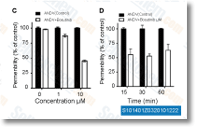
|
|
| S1048 | Tozasertib (VX-680) | Tozasertib (VX-680) is a pan-Aurora inhibitor, mostly against Aurora A with Kiapp of 0.6 nM in a cell-free assay, less potent towards Aurora B/Aurora C and 100-fold more selective for Aurora A than 55 other kinases. The only exceptions are Fms-related tyrosine kinase-3 (FLT-3) and BCR-ABL tyrosine kinase, which are inhibited by the Tozasertib with both Ki of 30 nM. Tozasertib induces apoptosis and autophagy. Phase 2. |
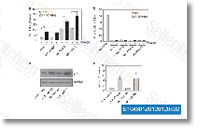
|
|
| S1786 | Verteporfin | ベルテポルフィン (Verteporfin (CL 318952)) は、TEAD-YAP 相互作用 と YAP による肝肥大を阻害します。 また、ポルフィリンに由来する強力な第 2 世代の光増感剤でもあります。ベルテポルフィンはオートファジー (autophagy) 阻害剤です。 ベルテポルフィンは細胞増殖を阻害し、アポトーシス (apoptosis) を誘導します。 |

|
|
| S6999 | Chloroquine | Chloroquine is an antimalarial drug and autophagy/lysosome inhibitor. Chloroquine also suppresses Toll-like receptor-9 (TLR9) protein expression. Chloroquine is highly effective agianst SARS-CoV-2 (COVID-19) infection with EC50 of 1.13 μM in Vero E6 cells. Chloroquine has anti-HIV-1 activity. | ||
| S2704 | LY2109761 | LY2109761 is a novel selective TGF-β receptor type I/II (TβRI/II) dual inhibitor with Ki of 38 nM and 300 nM in a cell-free assay, respectively; shown to negatively affect the phosphorylation of Smad2. LY2109761 blocks autophagy and induces apoptosis. |
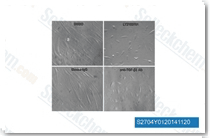
|
|
| S1230 | Flavopiridol (Alvocidib) | Flavopiridol (Alvocidib) competes with ATP to inhibit CDKs including CDK1, CDK2, CDK4, CDK6, and CDK9 with IC50 values in the 20-100 nM range. It is more selective for CDK1, 2, 4, 6, 9 versus CDK7. Flavopiridol is initially found to inhibit EGFR and PKA. Flavopiridol induces autophagy and ER stress. Flavopiridol blocks HIV-1 replication. Phase 1/2. |
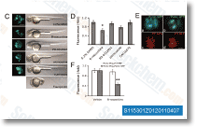
|
|
| S2929 | Pifithrin-α (PFTα) Hhydrobromide | Pifithrin-α is an inhibitor of p53, inhibiting p53-dependent transactivation of p53-responsive genes. Pifithrin-α is also a potent agonist of the aryl hydrocarbon receptor (AhR). |
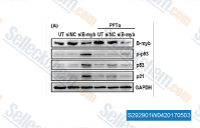
|
|
| S1113 | GSK690693 | GSK690693 is a pan-Akt inhibitor targeting Akt1/2/3 with IC50 of 2 nM/13 nM/9 nM in cell-free assays, also sensitive to the AGC kinase family: PKA, PrkX and PKC isozymes. GSK690693 also potently inhibits AMPK and DAPK3 from the CAMK family with IC50 of 50 nM and 81 nM, respectively. GSK690693 affects Unc-51-like autophagy activating kinase 1 (ULK1) activity, robustly inhibits STING-dependent IRF3 activation. Phase 1. |
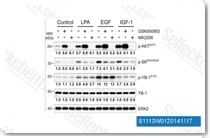
|
|
| S1241 | Vincristine sulfate | Vincristine sulfate is an inhibitor of polymerization of microtubules by binding to tubulin with IC50 of 32 μM in a cell-free assay. Vincristine sulfate induces apoptosis. |
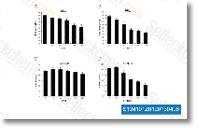
|
|
| S1057 | Obatoclax Mesylate (GX15-070) | Obatoclax Mesylate (GX15-070) is an antagonist of Bcl-2 with Ki of 0.22 μM in a cell-free assay, can assist in overcoming MCL-1 mediated resistance to apoptosis. |
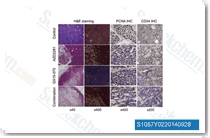
|
|
| S1046 | Vandetanib | Vandetanib is a potent inhibitor of VEGFR2 with IC50 of 40 nM in a cell-free assay. It also inhibits VEGFR3 and EGFR with IC50 of 110 nM and 500 nM, respectively. Not sensitive to PDGFRβ, Flt1, Tie-2 and FGFR1 with IC50 of 1.1-3.6 μM. No activity against MEK, CDK2, c-Kit, erbB2, FAK, PDK1, Akt and IGF-1R with IC50 above 10 μM. Vandetanib (ZD6474) increases apoptosis and induces autophagy by increasing the level of reactive oxygen species (ROS). |
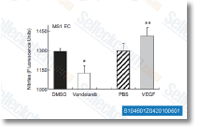
|
|
| S1122 | Mocetinostat (MGCD0103) | Mocetinostat (MGCD0103, MG0103) is a potent HDAC inhibitor with most potency for HDAC1 with IC50 of 0.15 μM in a cell-free assay, 2- to 10- fold selectivity against HDAC2, 3, and 11, and no activity to HDAC4, 5, 6, 7, and 8. Mocetinostat (MGCD0103) induces apoptosis and autophagy. Phase 2. |
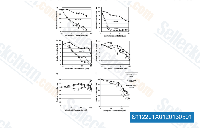
|
|
| S1069 | Luminespib (NVP-AUY922) | Luminespib (AUY-922, NVP-AUY922, VER-52296) is a highly potent HSP90 inhibitor for HSP90α/β with IC50 of 13 nM /21 nM in cell-free assays, weaker potency against the HSP90 family members GRP94 and TRAP-1, exhibits the tightest binding of any small-molecule HSP90 ligand. Luminespib (AUY-922, NVP-AUY922) effectively downregulates and destabilizes the IGF-1Rβ protein and results in growth inhibition, autophagy and apoptosis. Phase 2. |
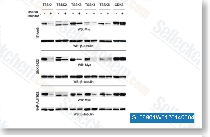
|
|
| S1782 | Azacitidine (5-Azacytidine) | Azacitidine (5-Azacytidine, 5-AzaC, Ladakamycin, AZA, 5-Aza, CC-486,NSC 102816) is a nucleoside analogue of cytidine that specifically inhibits DNA methylation by trapping DNA methyltransferases. Azacitidine induces mitochondrial apoptosis and autophagy. |
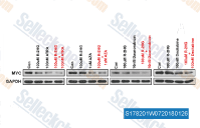
|
|
| S1038 | PI-103 | PI-103 is a multi-targeted PI3K inhibitor for p110α/β/δ/γ with IC50 of 2 nM/3 nM/3 nM/15 nM in cell-free assays, less potent to mTOR/DNA-PK with IC50 of 30 nM/23 nM. PI-103 induces apoptosis in murine T-cell Lymphoma. |
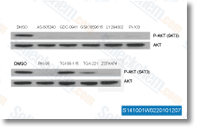
|
|
| S2775 | Nocodazole | Nocodazole is a rapidly-reversible inhibitor of microtubule polymerization, also inhibits Abl, Abl(E255K) and Abl(T315I) with IC50 of 0.21 μM, 0.53 μM and 0.64 μM in cell-free assays, respectively. Nocodazole induces apoptosis. |

|
|
| S4430 | Hydroxychloroquine (HCQ) Sulfate | Hydroxychloroquine (HCQ) Sulfate is an antimalarial agent used for the treatment of systemic lupus erythematosus, rheumatoid arthritis and other autoimmune, inflammatory and dermatologic conditions. Also acts as an inhibitor of autophagy and toll-like receptor (TLR) 7/9. |
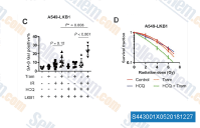
|
|
| S7153 | 10058-F4 | 10058-F4 is a c-Myc inhibitor that specificallly inhibits the c-Myc-Max interaction and prevents transactivation of c-Myc target gene expression. 10058-F4 promotes a caspase-3-dependent apoptosis and modulates autophagy. |
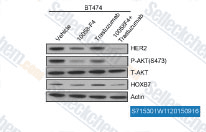
|
|
| S1044 | Temsirolimus | Temsirolimus is a specific mTOR inhibitor with IC50 of 1.76 μM in a cell-free assay. Temsirolimus induces autophagy and apoptosis. |
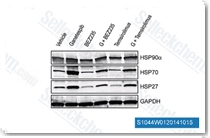
|
|
| S1085 | Belinostat (PXD101) | Belinostat is a novel HDAC inhibitor with IC50 of 27 nM in a cell-free assay, with activity demonstrated in cisplatin-resistant tumors. Belinostat (PXD101) induces autophagy. |
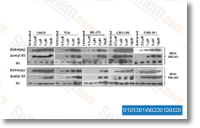
|
|
| S2218 | Torkinib (PP242) | Torkinib (PP242) is a selective mTOR inhibitor with IC50 of 8 nM in cell-free assays; targets both mTOR complexes with >10- and 100-fold selectivity for mTOR than PI3Kδ or PI3Kα/β/γ, respectively. Torkinib (PP242) induces mitophagy and apoptosis. |
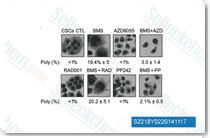
|
|
| S7152 | C646 | C646 is an inhibitor for histone acetyltransferase, and inhibits p300 with a Ki of 400 nM in a cell-free assay. Preferentially selective for p300 versus other acetyltransferases. C646 induces cell cycle arrest, apoptosis and autophagy. |

|
|
| S1322 | Dexamethasone | Dexamethasone is a potent synthetic member of the glucocorticoid class of steroid drugs, and an interleukin receptor modulator that has anti-inflammatory and immunosuppressant effects. Dexamethasone induces autophagy and mitophagy. Dexamethasone is tested in hospitalized patients with COVID-19 and is found to have benefits for critically ill patients. |
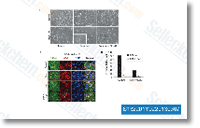
|
|
| S8075 | GANT61 | GANT61 (NSC 136476) is an inhibitor for GLI1 as well as GLI2-induced transcription, inhibits hedgehog with IC50 of 5 μM in GLI1 expressing HEK293T cell, displays selectivity over other pathways, such as TNF and glucocorticoid receptor gene transactivation. GANT61 induces apoptosis and activates protective autophagy in LX-2 cells. |
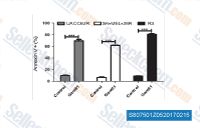
|
|
| S1075 | SB216763 | SB216763 is a potent and selective GSK-3 inhibitor with IC50 of 34.3 nM for GSK-3α and equally effective at inhibiting human GSK-3β. SB216763 activates autophagy. |
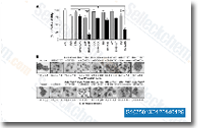
|
|
| S8049 | Tubastatin A | Tubastatin A is a potent and selective HDAC6 inhibitor with IC50 of 15 nM in a cell-free assay. It is selective against all the other isozymes (1000-fold) except HDAC8 (57-fold). Tubastatin A promotes autophagy and increases apoptosis. |
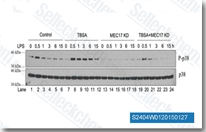
|
|
| S5003 | Tacrolimus (FK506) | Tacrolimus (FK506) is a 23-membered macrolide lactone, it reduces peptidyl-prolyl isomerase activity in T cells by binding to the immunophilin FKBP12 (FK506 binding protein) creating a new complex. Tacrolimus also inhibits the phosphatase activity of calcineurin. Tacrolimus induces vascular endothelial autophagy. |
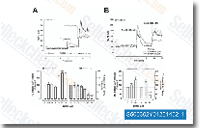
|
|
| S1950 | Metformin Hydrochloride | Metformin HCl (1,1-Dimethylbiguanide HCl) decreases hyperglycemia in hepatocytes primarily by suppressing glucose production by the liver (hepatic gluconeogenesis). Metformin promotes mitophagy in mononuclear cells. Metformin induces apoptosis of lung cancer cells through activating JNK/p38 MAPK pathway and GADD153. |
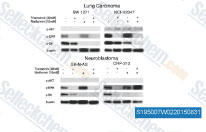
|
|
| S7007 | Binimetinib (MEK162) | Binimetinib (MEK162, ARRY-162, ARRY-438162) is a potent inhibitor of MEK1/2 with IC50 of 12 nM in a cell-free assay. Binimetinib induces G1 cell cycle arrest and apoptosis in human NSCLC cell lines and induces autophagy. Phase 3. |
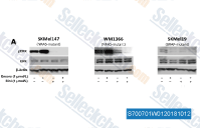
|
|
| S2783 | Vistusertib (AZD2014) | Vistusertib (AZD2014) is a novel mTOR inhibitor with IC50 of 2.8 nM in a cell-free assay; highly selective against multiple PI3K isoforms (α/β/γ/δ). AZD2014 showed no or weak binding to the majority of kinases when tested at 1 μM. AZD2014 induces proliferation suppression, apoptosis, cell cycle arrest, and autophagy in HCC cells with antitumor activity. |
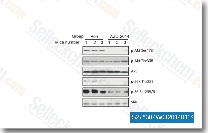
|
|
| S7655 | Telaglenastat (CB-839) | CB-839 (Telaglenastat) is a potent, selective, and orally bioavailable glutaminase inhibitor with IC50 of 24 nM for recombinant human GAC. CB-839(Telaglenastat) inudces autophagy and has antitumor activity. Phase 1. |
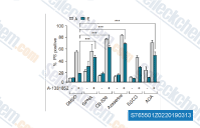
|
|
| S2626 | Rabusertib (LY2603618) | Rabusertib (LY2603618, IC-83) is a highly selective Chk1 inhibitor with potential anti-tumor activity in a cell-free assay. IC50=7 nM, showing approximately 100-fold more potent against Chk1 than against any of the other protein kinases evaluated. Rabusertib (LY2603618) induces cell cycle arrest, DNA damage response and autophagy in cancer cells. Rabusertib (LY2603618) induces bak-dependent apoptosis in AML cell lines. |
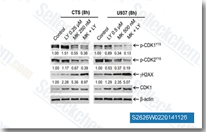
|
|
| S1648 | Cytarabine | Cytarabine is an antimetabolic agent and DNA synthesis inhibitor with IC50 of 16 nM in wild-type CCRF-CEM cells. Cytarabine induces autophagy and apoptosis. |
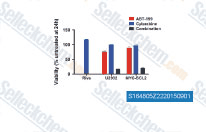
|
|
| S7307 | GSK2606414 | GSK2606414 is an orally available, potent, and selective PERK inhibitor with IC50 of 0.4 nM, displaying at least 100-fold selectivity over the other EIF2AKs assayed. GSK2606414 impairs GANT-61 induced autophagy in NB cells with MYCN amplification. GSK2606414 exacerbates ER stress-induced apoptosis in HCT116 cells while reduces the apoptosis in SIL1 KD HeLa cells. |
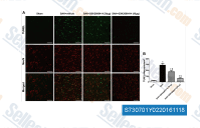
|
|
| S1233 | 2-Methoxyestradiol (2-MeOE2) | 2-Methoxyestradiol (2-MeOE2, NSC 659853, 2-ME2) depolymerizes microtubules and blocks HIF-1α nuclear accumulation and HIF-transcriptional activity. 2-Methoxyestradiol induces both autophagy and apoptosis in various carcinogenic cell lines. |
-S123306W0220150907.gif)
|
|
| S8059 | Nutlin-3a | Nutlin-3a ((-)-Nutlin-3), the active enantiomer of Nutlin-3, inhibits the p53/MDM2 interaction with IC50 of 90 nM in a cell-free assay. Nutlin-3a induces autophagy and apoptosis in a p53-dependent manner. |
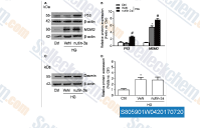
|
|
| S1573 | Fasudil HCl | Fasudil HCl, a potent and selective inhibitor of Rho kinase, displays less potent inhibiton over PKA, PKG, PKC and MLCK with Ki of 1.6, 1.6, 3.3, and 36 μM in cell-free assays, respectively. Fasudil is also a calcium channel blocker. |
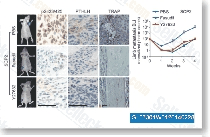
|
|
| S3012 | Pazopanib | Pazopanib (GW786034) is a novel multi-target inhibitor of VEGFR1, VEGFR2, VEGFR3, PDGFR, FGFR, c-Kit and c-Fms/CSF1R with IC50 of 10 nM, 30 nM, 47 nM, 84 nM, 74 nM, 140 nM and 146 nM in cell-free assays, respectively. Pazopanib induces cathepsin B activation and autophagy. |
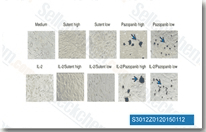
|
|
| S7811 | MHY1485 | MHY1485 is a potent, and cell-permeable mTOR activator, and also potently inhibits autophagy. |
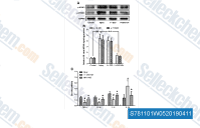
|
|
| S1274 | BX-795 | BX-795 is a potent and specific PDK1 inhibitor with IC50 of 6 nM, 140- and 1600-fold more selective for PDK1 than PKA and PKC in cell-free assays, respectively. Meanwhile, in comparison to GSK3β more than 100-fold selectivity observed for PDK1. BX-795 modulates autophagy via inhibiting ULK1. BX-795 also is a potent TBK1 inhibitor that blocks both TBK1 and IKKε with IC 50 values of 6 nM and 41 nM, respectively. |
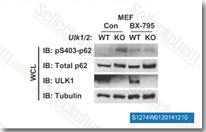
|
|
| S5742 | Deferoxamine mesylate | Deferoxamine mesylate is the mesylate salt of Deferoxamine, which forms iron complexes and is used as a chelating agent. Deferoxamine is a ferroptosis inhibitor that stabilizes HIF-1α expression and improves HIF-1α transactivity in hypoxic and hyperglycemic states in vitro. Deferoxamine decreases beta-amyloid (Aβ) deposition and induces autophagy.Please do not prepare stock solutions with normal saline or PBS, as precipitation may occur. | ||
| S1017 | Cediranib (AZD2171) | Cediranib (AZD2171, NSC-732208) is a highly potent VEGFR(KDR) inhibitor with IC50 of <1 nM, also inhibits Flt1/4 with IC50 of 5 nM/≤3 nM, similar activity against c-Kit and PDGFRβ, 36-, 110-fold and >1000-fold selective more for VEGFR than PDGFR-α, CSF-1R and Flt3 in HUVEC cells. Cediranib (AZD2171) induces autophagic vacuole accumulation. Phase 3. |
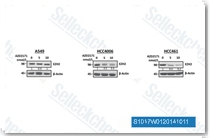
|
|
| S2180 | Ixazomib (MLN2238) | Ixazomib (MLN2238) inhibits the chymotrypsin-like proteolytic (β5) site of the 20S proteasome with IC50 and Ki of 3.4 nM and 0.93 nM in cell-free assays, respectively, also inhibits the caspase-like (β1) and trypsin-like (β2) proteolytic sites, with IC50 of 31 and 3500 nM. Ixazomib (MLN2238) induces autophagy. Phase 3. |
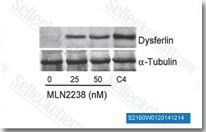
|
|
| S4908 | SN-38 | SN-38 (NK012) is an active metabolite of CPT-11, inhibits DNA topoisomerase I, DNA synthesis and causes frequent DNA single-strand breaks. SN-38 induces autophagy. |
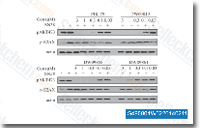
|
|
| S1396 | Resveratrol (trans-Resveratrol) | Resveratrol has a wide spectrum of targets including cyclooxygenases(i.e. COX, IC50=1.1 μM), lipooxygenases(LOX, IC50=2.7 μM), kinases, sirtuins and other proteins. It has anti-cancer, anti-inflammatory, blood-sugar-lowering and other beneficial cardiovascular effects. Resveratrol induces mitophagy/autophagy and autophagy-dependent apoptosis. |
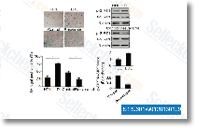
|
|
| S7046 | Brefeldin A (BFA) | Brefeldin A (BFA) is a lactone antibiotic and ATPase inhibitor for protein transport with IC50 of 0.2 μM in HCT 116 cells, induces cancer cell differentiation and apoptosis. It could also improve the HDR(homology-directed repair) efficiency and be an enhancer of CRISPR-mediated HDR. Brefeldin A is also an inhibitor of autophagy and mitophagy. |
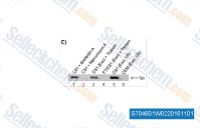
|
|
| S2285 | Cryptotanshinone (Tanshinone C) | Cryptotanshinone (Tanshinone C) is a STAT3 inhibitor with IC50 of 4.6 μM in a cell-free assay, strongly inhibits phosphorylation of STAT3 Tyr705, with a small effect on STAT3 Ser727, but none against STAT1 nor STAT5. Cryptotanshinone induces ROS-dependent autophagy and mitochondria-mediated apoptosis. |
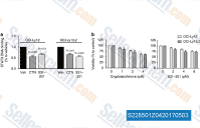
|
|
| S2817 | Torin 2 | Torin 2 is a potent and selective mTOR inhibitor with IC50 of 0.25 nM in p53−/− MEFs cell line; 800-fold greater selectivity for mTOR than PI3K and improved pharmacokinetic properties. Inhibition of ATM/ATR/DNA-PK with EC50 of 28 nM/35 nM/118 nM,in PC3 cell lines respectively. Torin 2 decreases cell viability and induces autophagy and apoptosis. |
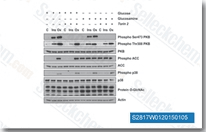
|
|
| S5190 | Crizotinib hydrochloride | Crizotinib (PF-02341066) hydrochloride (Xalkori) inhibits tyrosine phosphorylation of c-Met and nucleophosmin (NPM)-anaplastic lymphoma kinase (ALK) with IC50 of of 11 nM and 24 nM in cell-based assays, respectively. Crizotinib hydrochloride is also a potent ROS1 inhibitor with Ki less than 0.025 nM. Crizotinib induces autophagy through inhibition of the STAT3 pathway in multiple lung cancer cell lines. | ||
| S1792 | Simvastatin | Simvastatin is a competitive inhibitor of HMG-CoA reductase with Ki of 0.1-0.2 nM in cell-free assays. Simvastatin induces ferroptosis, mitophagy, autophagy and apoptosis. |
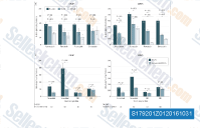
|
|
| S2556 | Rosiglitazone (BRL-49653) | Rosiglitazone is a potent antihyperglycemic agent and a potent thiazolidinedione insulin sensitizer with IC50 of 12, 4 and 9 nM for rat, 3T3-L1 and human adipocytes, respectively. Rosiglitazone is a pure ligand of PPAR-gamma, and has no PPAR-alpha-binding action. Rosiglitazone modulates TRP channels and induces autophagy. Rosiglitazone prevents ferroptosis. |
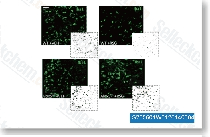
|
|
| S1080 | SU11274 | SU11274 (PKI-SU11274) is a selective Met (c-Met) inhibitor with IC50 of 10 nM in cell-free assays, no effects on PGDFRβ, EGFR or Tie2. SU11274 induces autophagy, apoptosis and cell cycle arrest. |
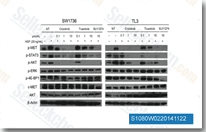
|
|
| S2799 | FK866 (Daporinad) | Daporinad (FK866) effectively inhibits nicotinamide phosphoribosyltransferase (NMPRTase; Nampt) with IC50 of 0.09 nM in a cell-free assay. Daporinad (FK866, APO866) triggers autophagy. Phase 1/2. |
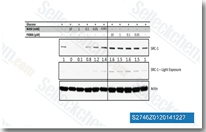
|
|
| S1035 | Pazopanib HCl | Pazopanib HCl is a novel multi-target inhibitor of VEGFR1, VEGFR2, VEGFR3, PDGFR, FGFR, c-Kit and c-Fms with IC50 of 10 nM, 30 nM, 47 nM, 84 nM, 74 nM, 140 nM and 146 nM in cell-free assays, respectively. Pazopanib induces autophagic Type II cell death. |
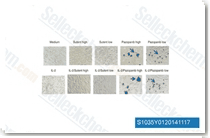
|
|
| S2679 | Flavopiridol (Alvocidib) HCl | Flavopiridol (Alvocidib) HClcompetes with ATP to inhibit CDKs including CDK1, CDK2, CDK4 and CDK6 with IC50 of ~ 40 nM in cell-free assays. It is 7.5-fold more selective for CDK1/2/4/6 than CDK7. Flavopiridol is initially found to inhibit EGFR and PKA. Flavopiridol HCl induces autophagy and ER stress. Flavopiridol HCl blocks HIV-1 replication. Phase 1/2. |
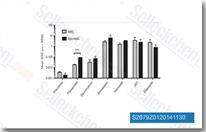
|
|
| S2658 | Omipalisib (GSK2126458) | Omipalisib (GSK2126458, GSK458) is a highly selective and potent inhibitor of p110α/β/δ/γ, mTORC1/2 with Ki of 0.019 nM/0.13 nM/0.024 nM/0.06 nM and 0.18 nM/0.3 nM in cell-free assays, respectively. Omipalisib induces autophagy. Phase 1. |
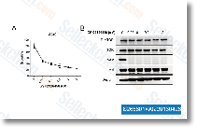
|
|
| S1238 | Tamoxifen | Tamoxifen is an orally active, selective estrogen receptor modulator (SERM) which exhibits both estrogenic agonist and antagonist effects. It blocks estrogen action in breast cells and can activate estrogen activity in other cells, such as bone, liver, and uterine cells. Tamoxifen is a potent Hsp90 activator and enhances the Hsp90 molecular chaperone ATPase activity. |
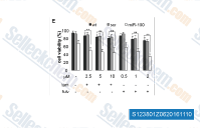
|
|
| S1314 | Zoledronic acid (Zoledronate) | Zoledronic acid (Zoledronate), a potent osteoclast inhibitor, induces apoptosis in osteoclasts by inhibiting enzymes of the mevalonate pathway and preventing the isoprenylation of small GTP-binding proteins such as Ras and Rho. Zoledronic acid (ZA) also induces autophagy. |
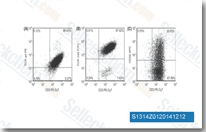
|
|
| S2843 | BI-D1870 | BI-D1870 is an ATP-competitive inhibitor of S6 ribosome for RSK1/2/3/4 with IC50 of 31 nM/24 nM/18 nM/15 nM in cell-free assays, respectively; 10- to 100-fold selectivity for RSK than MST2, GSK-3β, MARK3, CK1 and Aurora B. BI-D1870 exhibits anticancer attributes including the generation of reactive oxygen species (ROS) and increases in endoplasmic reticulum (ER) stress and autophagy. |
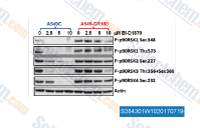
|
|
| S2163 | PF-4708671 | PF-4708671 is a cell-permeable inhibitor of p70 ribosomal S6 kinase (S6K1 isoform) with Ki/IC50 of 20 nM/160 nM in cell-free assays, 400-fold greater selectivity for S6K1 than S6K2, and 4- and >20-fold selectivity for S6K1 than MSK1 and RSK1/2, respectively. First S6K1-specific inhibitor to be reported. |
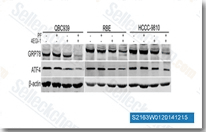
|
|
| S7164 | GSK343 | GSK343 is a potent and selective EZH2 inhibitor with IC50 of 4 nM in a cell-free assay, showing 60 fold selectivity against EZH1, and >1000 fold selectivity against other histone methyltransferases. GSK343 induces autophagy. |
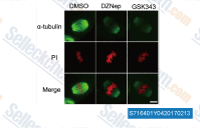
|
|
| S7130 | PR-619 | PR-619 is a non-selective, reversible inhibitor of the deubiquitinylating enzymes (DUBs) with EC50 of 1-20 μM in a cell-free assay. PR-619 activates autophagy. |
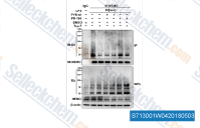
|
|
| S8047 | Dynasore | Dynasore is a cell-permeable, reversible non-competitive dynamin inhibitor of GTPase activity of dynamin 1/2, with IC50 of 15 μM in a cell-free assay, also inhibits the mitochondrial dynamin Drp1, with no effect against other small GTPase. Dynasore suppresses mTORC1 activity and induces autophagy. Dynasore inhibits the entry of several viruses, including herpes simplex virus (HSV). |
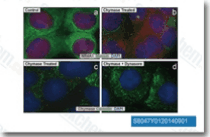
|
|
| S7842 | LY3009120 | LY03009120 (DP-4978) is a potent pan-Raf inhibitor with IC50 of 44 nM, 31-47 nM, and 42 nM for A-raf, B-Raf, and C-Raf in A375 cells, respectively. LY03009120 induces autophagy. Phase 1. |
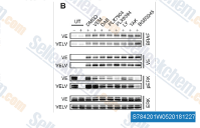
|
|
| S1190 | Bicalutamide | Bicalutamide is an androgen receptor (AR) antagonist with IC50 of 0.16 μM in LNCaP/AR(cs)cell line. Bicalutamide promotes autophagy. |
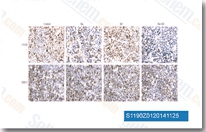
|
|
| S2061 | Lovastatin | Lovastatin is an inhibitor of HMG-CoA reductase with IC50 of 3.4 nM in a cell-free assay, used for lowering cholesterol (hypolipidemic agent). Lovastatin triggers autophagy. |
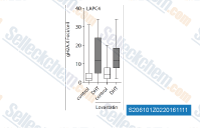
|
|
| S1590 | TWS119 | TWS119 is a GSK-3β inhibitor with IC50 of 30 nM in a cell-free assay; capable of inducing neuronal differentiation and may be useful to stem cell biology. GSK-3β inhibition triggers autophagy. |
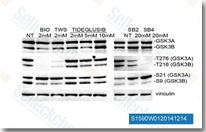
|
|
| S1228 | Idarubicin HCl | Idarubicin HCl (4-demethoxydaunorubicin (NSC256439, 4-DMDR) HCl) is a hydrochloride salt form of Idarubicin which is an anthracycline antibiotic and a DNA topoisomerase II (topo II) inhibitor for MCF-7 cells with IC50 of 3.3 ng/mL in a cell-free assay. Idarubicin induces mTOR-dependent cytotoxic autophagy. |
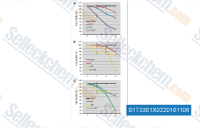
|
|
| S3042 | Purmorphamine | Purmorphamine (Shh Signaling Antagonist VI), which directly binds and activates Smoothened, blocks BODIPY-cyclopamine binding to Smo with IC50 of ~ 1.5 μM in HEK293T cell and also is an inducer of osteoblast differentiation with EC50 of 1 μM. Purmorphamine can reduce both basal and induced autophagy. |

|
|
| S1231 | Topotecan HCl | Topotecan HCl is a topoisomerase I inhibitor for MCF-7 Luc cells and DU-145 Luc cells with IC50 of 13 nM and 2 nM in cell-free assays, respectively. Topotecan HCl induces autophagy and apoptosis. |
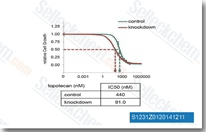
|
|
| S7423 | KN-93 Phosphate | KN-93 Phosphate is a potent and specific inhibitor of Ca2+/calmodulin-dependent protein kinase II (CaMKII) with Ki of 0.37 μM, no remarkable inhibitory effects on APK, PKC, MLCK or Ca2+-PDE activities. KN-93 attenuates CaMKII-induced autophagy.This product is not soluble in saline. Please do not dissolve it in saline for administration. |
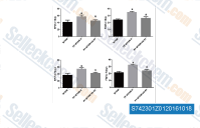
|
|
| S2219 | Momelotinib (CYT387) | Momelotinib (CYT387, LM-1149 , CYT11387) is an ATP-competitive inhibitor of JAK1/JAK2 with IC50 of 11 nM/18 nM, ~10-fold selectivity versus JAK3. Momelotinib (CYT387) induces apoptosis and autophagy. Phase 3. |
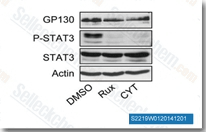
|
|
| S7998 | Entrectinib | Entrectinib is an orally bioavailable pan-TrkA/B/C, ROS1 and ALK inhibitor with IC50 ranging between 0.1 and 1.7 nM. Entrectinib (RXDX-101) induces autophagy. Phase 2. |
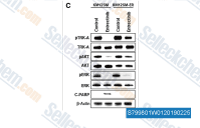
|
|
| S3030 | Niclosamide | Niclosamide can inhibit DNA replication and inhibit STAT3 with IC50 of 0.7 μM in a cell-free assay. Niclosamide selectively inhibited the phosphorylation of STAT3 and had no obvious inhibition against the activation of other homologues (e.g., STAT1 and STAT5). |
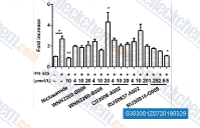
|
|
| S7455 | Resatorvid (TAK-242) | Resatorvid (TAK-242, CLI-095) is a small-molecule-specific inhibitor of Toll-like receptor (TLR) 4 signaling, blocking LPS-induced production of NO, TNF-α and IL-6 in macrophages with IC50 of 1.8 nM, 1.9 nM and 1.3 nM, respectively. Resatorvid downregulates expression of TLR4 downstream signaling molecules MyD88 and TRIF. Resatorvid inhibits autophagy. | ||
| S1107 | Danusertib (PHA-739358) | Danusertib (PHA-739358) is an Aurora kinase inhibitor for Aurora A/B/C with IC50 of 13 nM/79 nM/61 nM in cell-free assays, modestly potent to Abl, TrkA, c-RET and FGFR1, and less potent to Lck, VEGFR2/3, c-Kit, CDK2, etc. Danusertib induces apoptosis, cell cycle arrest, and autophagy. Phase 2. |
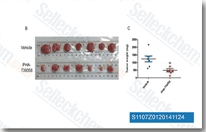
|
|
| S2198 | SGI-1776 free base | SGI-1776 free base is a novel ATP competitive inhibitor of Pim1 with IC50 of 7 nM in a cell-free assay, 50- and 10-fold selective versus Pim2 and Pim3, also potent to Flt3 and haspin. SGI-1776 induces apoptosis and autophagy. |
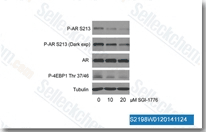
|
|
| S2243 | Degrasyn (WP1130) | Degrasyn (WP1130) is a selective deubiquitinase (DUB: USP5, UCH-L1, USP9x, USP14, and UCH37) inhibitor and also suppresses Bcr/Abl, also a JAK2 transducer (without affecting 20S proteasome) and activator of transcription (STAT). Degrasyn (WP1130) induces apoptosis and blocks autophagy. |
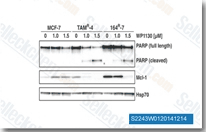
|
|
| S8006 | BIX-01294 trihydrochloride | BIX-01294 trihydrochloride is an inhibitor of G9a histone methyltransferase with IC50 of 2.7 μM in a cell-free assay, reduces H3K9me2 of bulk histones, also weakly inhibits GLP (primarily H3K9me3), no significant activity observed at other histone methyltransferases. BIX01294 induces autophagy. BIX01294 also inhibits H3K36 methylation by oncoproteins NSD1, NSD2 and NSD3. |
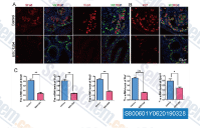
|
|
| S1135 | Pemetrexed disodium | Pemetrexed disodium is a novel antifolate and antimetabolite for TS, DHFR and GARFT with Ki of 1.3 nM, 7.2 nM and 65 nM in cell-free assays, respectively. Pemetrexed induces autophagy and apoptosis. |
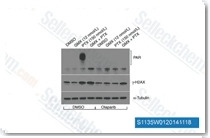
|
|
| S1848 | Curcumin | Curcumin (Diferuloylmethane, Natural Yellow 3, Turmeric yellow) is the principal curcuminoid of the popular Indian spice turmeric, which is a member of the ginger family (Zingiberaceae). It is an inhibitor of p300 histone acetylatransferase(IC50~25 μM)and Histone deacetylase (HDAC); activates Nrf2 pathway and supresses the activation of NF-κB. Curcumin induces mitophagy, autophagy, apoptosis, and cell cycle arrest with antitumor activity. Curcumin reduces renal damage associated with rhabdomyolysis by decreasing ferroptosis-mediated cell death. Curcumin exhibits anti-infective properties against various human pathogens like the influenza virus, hepatitis C virus, HIV and so on. |
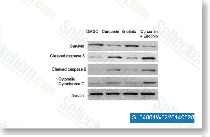
|
|
| S7033 | GSK2656157 | GSK2656157 is an ATP-competitive and highly selective inhibitor of PERK with IC50 of 0.9 nM in a cell-free assay, 500-fold greater against a panel of 300 kinases. GSK2656157 decreases apoptosis and inhibits excessive autophagy. |
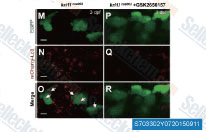
|
|
| S7483 | DMOG (Dimethyloxallyl Glycine) | DMOG (Dimethyloxalylglycine) is an antagonist of α-ketoglutarate cofactor and inhibitor for HIF prolylhydroxylase, leading to stabilisation and accumulation of HIF-1α protein in the nucleus. DMOG enhances autophagy.Solutions are unstable and should be fresh-prepared. |
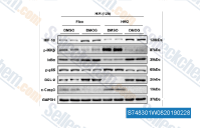
|
|
| S7751 | VER155008 | VER155008 is a potent Hsp70 family inhibitor with IC50 of 0.5 μM, 2.6 μM, and 2.6 μM in cell-free assays for HSP70, HSC70, and GRP78 (HSPA5, Bip), respectively, >100-fold selectivity over HSP90. VER155008 inhibits autophagy and causes reduced levels of HSP90 client proteins. |
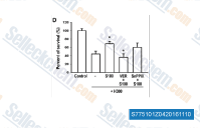
|
|
| S7146 | DMH1 | DMH1 is a selective BMP receptor inhibitor with IC50 of 107.9 nM for ALK2, exhibiting no inhibition on AMPK, ALK5, KDR (VEGFR-2) or PDGFR. DMH1 inhibits autophagy. |
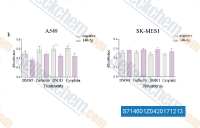
|
|
| S1896 | Hydroxyurea | Hydroxyurea is an antineoplastic agent that inhibits DNA synthesis through the inhibition of ribonucleoside diphosphate reductase. Hydroxyurea activates apoptosis and autophagy. Hydroxyurea is used to treat HIV infection. |
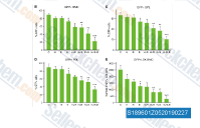
|
|
| S7888 | Spautin-1 | Spautin-1 is a potent and specific autophagy inhibitor, and inhibits the deubiquitinating activity of USP10 and USP13 with IC50 of ∼0.6-0.7 μM. Spautin-1 enhances apoptosis. |
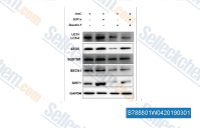
|
|
| S2624 | OSI-027 | OSI-027 (ASP4786, CERC 006, AEVI-006) is a selective and potent dual inhibitor of mTORC1 and mTORC2 with IC50 of 22 nM and 65 nM in cell-free assays, and more than 100-fold selectivity observed for mTOR than PI3Kα, PI3Kβ, PI3Kγ or DNA-PK. OSI-027 induces autophagy in cancer cells. |
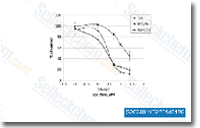
|
|
| S2476 | Itraconazole | Itraconazole is a relatively potent inhibitor of CYP3A4 with IC50 of 6.1 nM, used as a triazole antifungal agent. Itraconazole is a potent antagonist of the Hedgehog (Hh) signaling pathway. Itraconazole suppresses the growth of glioblastoma through induction of autophagy. |
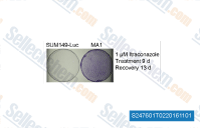
|
|
| S4505 | Vinblastine sulfate | Vinblastine sulfate inhibits microtubule formation and suppresses nAChR activity with IC50 of 8.9 μM in a cell-free assay, used to treat certain kinds of cancer. Vinblastine sulfate induces autophagy and apoptosis. | ||
| S4269 | Vinorelbine ditartrate | Vinorelbine ditartrate is a semi-synthetic vinca alkaloid, and inhibits mitosis through interaction with tubulin. Vinorelbine Tartrate exhibits anti-tumor activities via inducing the mitotic apoptosis, autophagy and inflammation. |
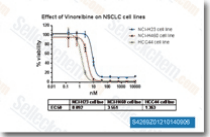
|
|
| S1235 | Letrozole | Letrozole is a third generation inhibitor of aromatase with IC50 of 0.07-20 nM in cell-free assays.It has no effect on the plasma levels of 17α-OH progesterone, thyroid-stimulating hormone (TSH), luteinizing hormone (LH), follicle-stimulating hormone (FSH), or androstenedione and does not affect normal urine electrolyte excretion or thyroid function in clinical studies. Letrozole induces autophagy. |
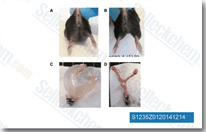
|
|
| S2770 | MK-5108 | MK-5108 is a highly selective Aurora A inhibitor with IC50 of 0.064 nM in a cell-free assay and is 220- and 190-fold more selective for Aurora A than Aurora B/C, while it inhibits TrkA with less than 100-fold selectivity. MK-5108 (VX-689) induces autophagy. Phase 1. |
-S277001W0220130927.gif)
|
|
| S7104 | AZD1208 | AZD1208 is a potent, and orally available Pim kinase inhibitor with IC50 of 0.4 nM, 5 nM, and 1.9 nM for Pim1, Pim2, and Pim3 in cell-free assays, respectively. AZD1208 induces autophagy, cell cycle arrest and apoptosis. Phase 1. |
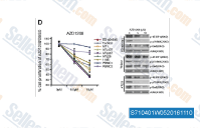
|
|
| S7949 | MRT68921 HCl | MRT68921 is a potent and dual autophagy kinase ULK1/2 inhibitor with IC50 of 2.9 nM and 1.1 nM, respectively. |
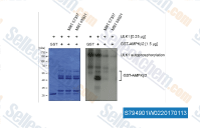
|
|
| S7885 | SBI-0206965 | SBI-0206965 is a highly selective autophagy kinase ULK1 inhibitor with IC50 of 108 nM, about 7-fold selectivity over ULK2. SBI-0206965 inhibits autophagy and enhances apoptosis in human glioblastoma and lung cancer cells. |
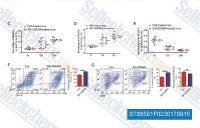
|
|
| S7785 | Pemetrexed Disodium Hydrate | Pemetrexed Disodium Hydrate (LY-231514) is a novel antifolate and antimetabolite for TS, DHFR and GARFT with Ki of 1.3 nM, 7.2 nM and 65 nM, respectively. Pemetrexed Disodium Hydrate stimulates autophagy and apoptosis. |

|
|
| S8222 | AS1842856 | AS1842856 is a cell-permeable inhibitor that blocks the transcription activity of Foxo1 with IC50 of 33 nM. It could directly bind to the active Foxo1, but not the Ser256-phosphorylated form. AS1842856 suppresses autophagy. |
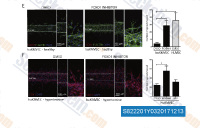
|
|
| S2713 | Geldanamycin | Geldanamycin is a natural existing HSP90 inhibitor with Kd of 1.2 μM, specifically disrupts glucocorticoid receptor (GR)/HSP association. Geldanamycin attenuates virus infection-induced ALI (acute lung injury)/ARDS (acute respiratory distress syndrome) by reducing the host's inflammatory responses. |
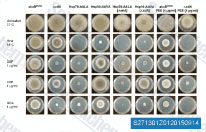
|
|
| S1003 | Linifanib (ABT-869) | Linifanib (ABT-869, AL39324, RG3635) is a novel, potent ATP-competitive VEGFR/PDGFR inhibitor for KDR, CSF-1R, Flt-1/3 and PDGFRβ with IC50 of 4 nM, 3 nM, 3 nM/4 nM and 66 nM respectively, mostly effective in mutant kinase-dependent cancer cells (i.e. FLT3). Linifanib (ABT-869) induces autophagy and apoptosis. Phase 3. |
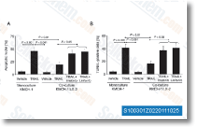
|
|
| S1168 | Valproic Acid sodium | Valproic Acid sodium is a HDAC inhibitor by selectively inducing proteasomal degradation of HDAC2, used in the treatment of epilepsy, bipolar disorder and prevention of migraine headaches. Valproic acid induces Notch1 signaling in small cell lung cancer (SCLC) cells. Valproic acid is under investigation for treatment of HIV and various cancers. Valproic acid (VPA) induces autophagy and mitophagy by upregulation of BNIP3 and mitochondrial biogenesis by upregulating PGC-1α. |
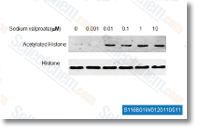
|
|
| S2696 | Apitolisib (GDC-0980) | Apitolisib (GDC-0980, RG7422, GNE 390) is a potent, class I PI3K inhibitor for PI3Kα/β/δ/γ with IC50 of 5 nM/27 nM/7 nM/14 nM in cell-free assays, respectively. Also a mTOR inhibitor with Ki of 17 nM in a cell-free assay, and highly selective versus other PIKK family kinases. Apitolisib activates autophagy and apoptosis simultaneously in pancreatic cancer cells. Phase 2. |
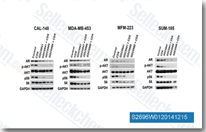
|
|
| S2635 | CCT128930 | CCT128930 is a potent, ATP-competitive and selective inhibitor of Akt2 with IC50 of 6 nM in a cell-free assay, 28-fold greater selectivity for Akt2 than the closely related PKA kinase. CCT128930 induces cell cycle arrest, DNA damage, and autophagy independent of Akt inhibition. High dose of CCT128930 triggers cell apoptosis in HepG2 cells. |
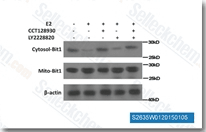
|
|
| S1204 | Melatonin | Melatonin is a MT receptor agonist, used as a dietary supplement. Melatonin is a selective ATF-6 inhibitor and downregulates COX-2. Melatonin enhances mitophagy and regulates the homeostasis of apoptosis and autophagy. |
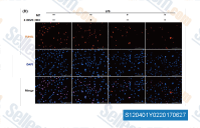
|
|
| S3944 | VPA (Valproic acid) | VPA (Valproic acid) is a fatty acid with anticonvulsant properties used in the treatment of epilepsy. It is also a histone deacetylase (HDAC) inhibitor and is under investigation for treatment of HIV and various cancers. Valproic acid (VPA) induces autophagy and mitophagy by upregulation of BNIP3 and mitochondrial biogenesis by upregulating PGC-1α. Valproic acid activates Notch-1 signaling. | ||
| S7682 | SAR405 | SAR405 is a low-molecular-mass kinase inhibitor of PIK3C3/Vps34 (KD 1.5 nM) showing high selectivity and not be active up to 10 μM on class I and class II PI3Ks as well as on mTOR. SAR405 prevents autophagy and synergizes with MTOR (mechanistic target of rapamycin) inhibition in tumor cells. |
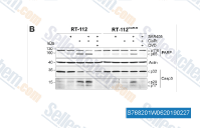
|
|
| S2310 | Honokiol | Honokiol is the active principle of magnolia extract that inhibits Akt-phosphorylation and promotes ERK1/2 phosphorylation. Honokiol causes G0/G1 phase arrest, induces apoptosis, and autophagy via the ROS/ERK1/2 signaling pathway. Honokiol inhibits hepatitis C virus (HCV) infection. Phase 3. |
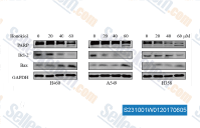
|
|
| S4028 | Dexamethasone Sodium Phosphate | Dexamethasone (Dexamethasone 21-phosphate disodium salt) is a potent synthetic member of the glucocorticoid class of steroid drugs, and an interleukin receptor modulator that has anti-inflammatory and immunosuppressant effects. |

|
|
| S8078 | Bardoxolone Methyl | Bardoxolone Methyl (RTA 402, TP-155, NSC 713200, CDDO Methyl Ester, CDDO-Me) is an IKK inhibitor, showing potent proapoptotic and anti-inflammatory activities; Also a potent Nrf2 activator and nuclear factor-κB (NF-κB) inhibitor. Bardoxolone Methyl abrogates ferroptosis. Bardoxolone methyl induces apoptosis and autophagy in cancer cells. |
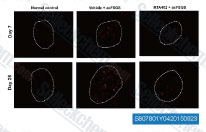
|
|
| S7980 | VPS34-IN1 | Vps34-IN1 is a potent and highly selective Vps34 inhibitor with IC50 of 25 nM invitro,which does not significantly inhibit the isoforms of class I as well as class II PI3Ks. Vps34-IN1 modulates autophagy. |
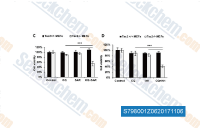
|
|
| S2782 | GW4064 | GW4064 is an agonist of farnesoid X receptor (FXR) with EC50 of 65 nM in CV1 cell line and displays no activity at other nuclear receptors at concentrations up to 1 μM. GW4064 stimulates autophagy in MCF-7 cells. |
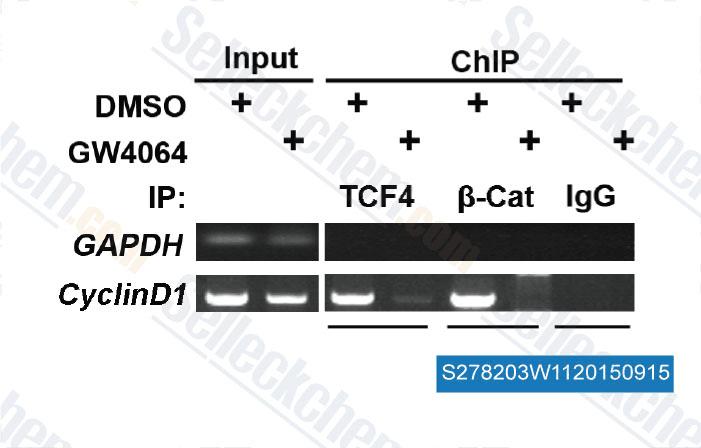
|
|
| S7381 | Pepstatin A | Pepstatin A (Pepstatin) is a potent aspartic protease inhibitor, and also inhibits HIV replication. Pepstatin A is also an inhibitor of cathepsins D and cathepsins E. Pepstatin A inhibits autophagy by suppressing lysosomal proteases. | ||
| S2505 | Rosiglitazone maleate | Rosiglitazone maleate, a member of the thiazolidinedione class of antihyperglycaemic agents, is a high-affinity selective agonist of the peroxisome proliferator-activated receptor-γ (PPAR-γ) with IC50 of 42 nM. Rosiglitazone maleate also modulates TRP channels and induces autophagy. Rosiglitazone prevents ferroptosis. |
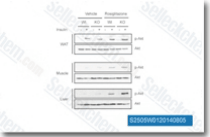
|
|
| S1999 | Sodium butyrate | Sodium butyrate (NaB, Butanoic acid sodium salt), sodium salt of butyric acid, is a histone deacetylase inhibitor and competitively binds to the zinc sites of class I and II histone deacetylases (HDACs). Sodium butyrate (NaB) inhibits cell cycle progression, promotes differentiation, and induces apoptosis and autophagy in several types of cancer cells. |
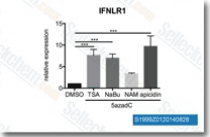
|
|
| S7165 | UNC1999 | UNC1999 is a potent, orally bioavailable and selective inhibitor of EZH2 and EZH1 with IC50 of 2 nM and 45 nM in cell-free assays, respectively, showing >1000-fold selectivity over a broad range of epigenetic and non-epigenetic targets. UNC1999 is a potent autophagy inducer. UNC1999 specifically suppresses H3K27me3/2 and induces a range of anti-leukemia effects including anti-proliferation, differentiation, and apoptosis. |
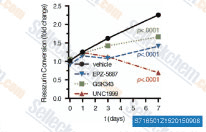
|
|
| S7177 | PF-543 hydrochloride | PF-543 hydrochloride, a novel sphingosine-competitive inhibitor of SphK1, inhibits SphK1 with IC50 and Ki of 2.0 nM and 3.6 nM, exhibits >100-fold selectivity over the SphK2 isoform. PF-543 hydrochloride induces apoptosis, necrosis, and autophagy. |
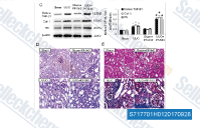
|
|
| S7289 | PFK15 | PFK15 (PFK-015) is a potent and selective 6-phosphofructo-2-kinase (PFKFB3) inhibitor with IC50 of 207 nM. |
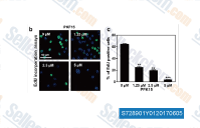
|
|
| S2290 | DHA (Dihydroartemisinin) | DHA (Dihydroartemisinin) is a semi-synthetic derivative of artemisinin and isolated from the traditional Chinese herb Artemisia annua. Dihydroartemisinin induces autophagy and apoptosis by suppressing NF-κB activation. |
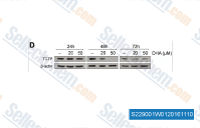
|
|
| S7680 | SP2509 | SP2509 (HCI-2509) is a selective histone demethylase LSD1 inhibitor with IC50 of 13 nM, showing no activity against MAO-A, MAO-B, lactate dehydrogenase and glucose oxidase. SP2509 induces apoptosis and promotes autophagy. |
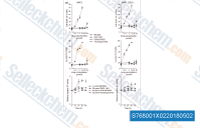
|
|
| S3022 | Cabazitaxel | Cabazitaxel is a semi-synthetic derivative of a natural taxoid that kills cancer cells by inhibiting cell division and growth. Cabazitaxel exerts its effects by inhibiting microtubule growth and assembly, processes that are essential for cells to divide. Cabazitaxel induces autophagy via the PI3K/Akt/mTOR pathway. |
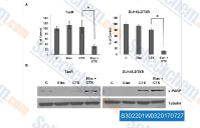
|
|
| S2606 | Mifepristone (RU486) | Mifepristone is a remarkably active antagonist of progesterone receptor and glucocorticoid receptor with IC50 of 0.2 nM and 2.6 nM, respectively. Mifepristone promotes cell autophagy and apoptosis, decreases Bcl-2 level and increases Beclin1 level, accompanied by weakened interaction between Bcl-2 and Beclin1.Mifepristone (RU486) can be used to induce animal models of Spontaneous Abortion. |
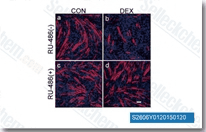
|
|
| S3017 | Aspirin | Aspirin (NSC 27223, Acetylsalicylic acid, ASA) is a salicylate, and irreversible COX1 and COX2 inhibitor, used as an analgesic to relieve minor aches and pains, as an antipyretic to reduce fever, and as an anti-inflammatory medication. Aspirin induces autophagy and stimulates mitophagy. | ||
| S5971 | Pemetrexed | Pemetrexed (LY231514) is a novel antifolate and antimetabolite for thymidylate synthase (TS), dihydrofolate reductase (DHFR) and glycinamide ribonucleotide formyltransferase (GARFT) with Ki of 1.3 nM, 7.2 nM and 65 nM in cell-free assays, respectively. Pemetrexed induces autophagy and apoptosis. | ||
| S1835 | Azithromycin | Azithromycin is an antibiotic by inhibiting protein synthesis, used for the treatment of bacterial infections. | ||
| S2930 | Pifithrin-μ | Pifithrin-μ (NSC 303580, PFTμ, 2-Phenylethynesulfonamide) is a specific p53 inhibitor by reducing its affinity to Bcl-xL and Bcl-2, and also inhibits HSP70 function and autophagy. |
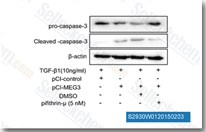
|
|
| S5248 | Apatinib | Apatinib (Rivoceranib, YN968D1) is a potent inhibitor of the VEGF signaling pathway with IC50 values of 1 nM, 13 nM, 429 nM and 530 nM for VEGFR-2, Ret (c-Ret), c-Kit and c-Src, respectively. Apatinib induces both autophagy and apoptosis. | ||
| S1346 | Heparin sodium | Heparin sodium, a sulfated polysaccharide belonging to the family of glycosaminoglycans, has numerous important biological activities associated with its interaction with diverse proteins. Heparin is used as an anticoagulant primarily through its interaction with AT III by enhancing AT-IIImediated inhibition of blood coagulation factors, including thrombin and factor Xa. Heparin prevents the induction of autophagy. | ||
| S1290 | Celastrol | Celastrol is a potent proteasome inhibitor for the chymotrypsin-like activity of a purified 20S proteasome with IC50 of 2.5 μM. Celastrol induces apoptosis and autophagy via the ROS/JNK signaling pathway. Celastrol inhibits dopaminergic neuronal death of Parkinson's disease through activating mitophagy. |
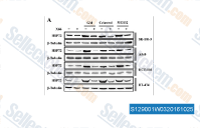
|
|
| S5715 | Atorvastatin | Atorvastatin is a lipid lowering agent. It is a competitive inhibitor of hydroxymethylglutaryl-coenzyme A (HMG-CoA) reductase, the rate-determining enzyme in cholesterol biosynthesis via the mevalonate pathway. Atorvastatin activates autophagy. | ||
| S1759 | Pitavastatin calcium | Pitavastatin calcium, a novel member of the medication class of statins, is a calcium salt formulation of pitavastatin which is a highly effective HMG-CoA reductase inhibitor. Pitavastatin Calcium attenuates AGEs-induced mitophagy via inhibition of ROS generation. Pitavastatin Calcium induces autophagy and apoptosis. |
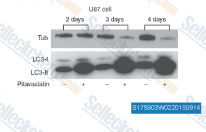
|
|
| S1218 | Clofarabine | Clofarabine (Clolar) inhibits the enzymatic activities of ribonucleotide reductase (RNR) (IC50 = 65 nM) and DNA polymerase. Clofarabine induces autophagy and apoptosis. |
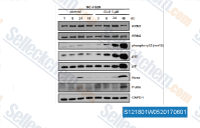
|
|
| S7134 | IU1 | IU1 is a cell-permeable, reversible and selective proteasome inhibitor of human USP14 with IC50 of 4.7 μ M, 25-fold selective to IsoT. IU1 induces autophagy. |
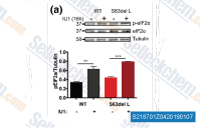
|
|
| S7683 | PIK-III | PIK-III (VPS34-IN2), which is a selective inhibitor of VPS34 enzymatic activity, inhibits autophagy and de novo lipidation of LC3 and leads to the stabilization of autophagy substrates. |
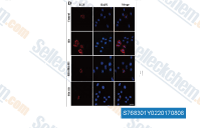
|
|
| S1972 | Tamoxifen Citrate | Tamoxifen Citrate is a selective estrogen receptor modulator (SERM). Tamoxifen Citrate is also a potent Hsp90 activator and enhances the Hsp90 molecular chaperone ATPase activity. Tamoxifen induces apoptosis and autophagy. |
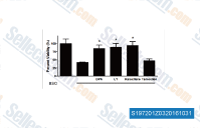
|
|
| S1312 | Streptozotocin (STZ) | STZ (Streptozotocin) is a glucosamine-nitrosourea compound derived from Streptomyces achromogenes, which is a DNA-methylating, carcinogenic, antibiotic and diabetes inducing agent. Streptozotocin induces autophagy and apoptosis. Streptozotocin (STZ) can be used to induce animal models of Diabetes Mellitus. Solutions are unstable and should be fresh-prepared. |
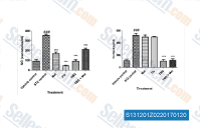
|
|
| S7724 | Eprenetapopt (APR-246) | Eprenetapopt (APR-246, PRIMA-1MET) is a small organic molecule that has been shown to restore tumour-suppressor function primarily to mutant p53 and also to induce cell death in various cancer types. APR-246 induces apoptosis and autophagy. | ||
| S7660 | Obeticholic Acid (INT-747) | Obeticholic Acid (INT-747) is a potent and selective farnesoid X receptor (FXR) agonist with EC50 of 99 nM. Obeticholic Acid inhibits autophagy. Phase 3. |
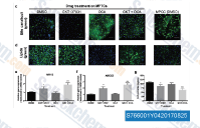
|
|
| S2812 | (R)-(-)-Gossypol (AT-101) acetic acid | (R)-(-)-Gossypol (AT-101) acetic acid, the R-(-) enantiomer of Gossypol acetic acid, binds with Bcl-2, Bcl-xL and Mcl-1 with Ki of 0.32 μM, 0.48 μM and 0.18 μM in cell-free assays; does not inhibit BIR3 domain and BID. AT-101 simultaneously triggers apoptosis and a cytoprotective type of autophagy. Phase 2. |
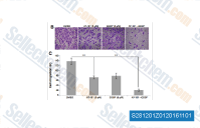
|
|
| S3031 | Linagliptin (GSK2118436) | Linagliptin (GSK2118436) is a highly potent, selective DPP-4 inhibitor with IC50 of 1 nM and exhibits a 10,000-fold higher selectivity for DPP-4 than for other dipeptidyl peptidases such as DPP-2, DPP-8, and DPP-9. Linagliptin activates glomerular autophagy in a model of type 2 diabetes. DPP4 mediates ferroptosis in TP53-deficient CRC cells. |
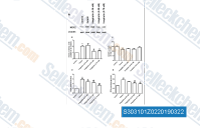
|
|
| S1576 | Sulfasalazine | Sulfasalazine is a sulfa derivative of mesalazine, used as an anti-inflammatory agent to treat bowel disease and rheumatoid arthritis. Sulfasalazine is a potent and specific inhibitor of nuclear factor kappa B (NF-κB), TGF-β and COX-2. Sulfasalazine induces ferroptosis, apoptosis and autophagy. | ||
| S7793 | Purvalanol A | Purvalanol A is a potent, and cell-permeable CDK inhibitor with IC50 of 4 nM, 70 nM, 35 nM, and 850 nM for cdc2-cyclin B, cdk2-cyclin A, cdk2-cyclin E, and cdk4-cyclin D1, respectively. Purvalanol A induces endoplasmic reticulum stress-mediated apoptosis and autophagy. |
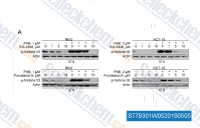
|
|
| S2751 | Milciclib | Milciclib (PHA-848125) is a potent, ATP-competitive CDK inhibitor for CDK2 with IC50 of 45 nM. It is >3-fold more selective for CDK2 than CDK1, 2, 4, 5, and 7, it's also an inhibitor of TRKA with IC50 of 53nM. Milciclib (PHA-848125) induces cell death through autophagy. Phase 2. |
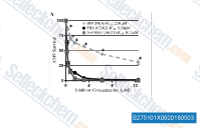
|
|
| S1219 | YM201636 | YM201636 is a selective PIKfyve inhibitor with IC50 of 33 nM, less potent to p110α and insensitive to Fabl (yeast orthologue). YM-201636 suppresses the growth of liver cancer via the induction of autophagy. |
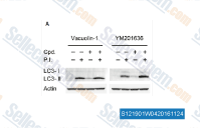
|
|
| S1351 | Ivermectin | Ivermectin is a glutamate-gated chloride channel (GluCls) activator, used as a broad-spectrum antiparasitic drug. Ivermectin (MK-933, IVM) is a specific positive allosteric effector of P2X4 and α7 nicotinic acetylcholine receptors (nAChRs). Ivermectin (MK-933) is a specific inhibitor of Impα/β1-mediated nuclear import and has potent antiviral activity towards both HIV-1 and dengue virus. Ivermectin induces autophagy through the AKT/mTOR signaling pathway and mitophagy. | ||
| S7948 | MRT67307 HCl | MRT67307 is a potent and dual IKKϵ and TBK1 inhibitor with IC50 of 160 and 19 nM, respectively. MRT67307 potently inhibits ULK1 and ULK2 and blocks autophagy. |
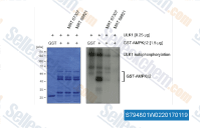
|
|
| S1847 | Clemastine fumarate | Clemastine fumarate is a selective histamine H1 receptor antagonist with IC50 of 3 nM. Clemastine stimulates autophagy via mTOR pathway. |
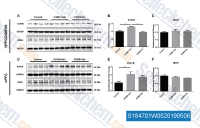
|
|
| S1794 | Fenofibrate | Fenofibrate is a compound of the fibrate class and fibric acid derivative. Fenofibrate is a selective agonist of PPARα with EC50 of 30 μM. Fenofibrate binds to and inhibits cytochrome P450 epoxygenase (CYP)2C with IC50 of 0.2 μM, 0.7 μM and 9.7 μM for CYP2C19, CYP2B6 and CYP2C9, respectively. Fenofibrate induces autophagy. |
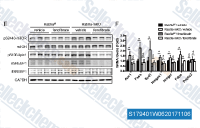
|
|
| S7343 | URMC-099 | URMC-099 is an orally bioavailable, brain penetrant mixed lineage kinase (MLK) inhibitor with IC50 of 19 nM, 42 nM, 14 nM, and 150 nM, for MLK1, MLK2, MLK3, and DLK, respectively, and also inhibits LRRK2 activity with IC50 of 11 nM. URMC-099 also inhibits ABL1 with IC50 of 6.8 nM. URMC-099 induces autophagy. | ||
| S8274 | STO-609 | STO-609 is a specific inhibitor of the Ca2+/Calmodulin-dependent protein kinase kinase(CaM-KK) that inhibits the activities of recombinant CaM-KKα and CaM-KKβ isoforms, with Ki values of 80 and 15 ng/ml, respectively, and also inhibits their autophosphorylation activities. STO-609 inhibits AMPKK activity and inhibits autophagy. | ||
| S8808 | DC661 | DC661 is capable of deacidifying the lysosome and inhibiting autophagy significantly better than HCQ. DC661 induces apoptosis. | ||
| S3592 | 4-PBA (4-Phenylbutyric acid) | 4-PBA (4-Phenylbutyric acid) is a histone deacetylase (HDAC) inhibitor and a key epigenetic inducer of anti-HCV hepatic hepcidin. 4-Phenylbutyric acid inhibits LPS-induced inflammation through regulating endoplasmic-reticulum (ER) stress and autophagy in acute lung injury models. | ||
| S1403 | Tigecycline | Tigecycline is bacteriostatic and is a protein synthesis inhibitor by binding to the 30S ribosomal subunit of bacteria and thereby blocking entry of Aminoacyl-tRNA into the A site of the ribosome during prokaryotic translation. Tigecycline induces autophagy by downregulating the PI3K-AKT-mTOR pathway. |
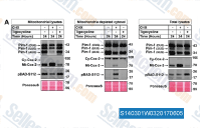
|
|
| S1627 | Nitazoxanide | Nitazoxanide is a synthetic nitrothiazolyl-salicylamide derivative and an antiprotozoal agent(IC50 for canine influenza virus ranges from 0.17 to 0.21 μM). Nitazoxanide modulates autophagy and inhibits mTORC1 signaling. | ||
| S1979 | Amiodarone HCl | Amiodarone HCl is a sodium/potassium-ATPase inhibitor and an autophagy activator, used to treat various types of cardiac dysrhythmias. |

|
|
| S4895 | Nilotinib hydrochloride monohydrate | Nilotinib (AMN-107, Tasigna) hydrochloride monohydrate is a selective and orally bioavailable inhibitor of Bcr-Abl with IC50 < 30 nM in Murine myeloid progenitor cells. Nilotinib induces autophagy through AMPK activition. | ||
| S8793 | ULK-101 | ULK-101 is a potent and selective ULK1 inhibitor with IC50 values of 8.3 nM and 30 nM for ULK1 and ULK2, respectively. | ||
| S2077 | Atorvastatin Calcium (CI-981) | Atorvastatin Calcium is an inhibitor of HMG-CoA reductase used as a cholesterol-lowering medication that blocks the production of cholesterol. Atorvastatin Calcium induces apoptosis and autophagy. |
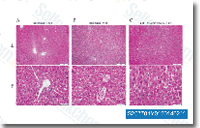
|
|
| S7684 | Salirasib | Salirasib (Farnesylthiosalicylic acid, FTS) is a potent competitive prenylated protein methyltransferase (PPMTase) inhibitor with Ki of 2.6 μM, which inhibits Ras methylation. Salirasib exerts antitumor effects and induces autophagy. Phase 2. | ||
| S8317 | 3BDO | 3BDO, a butyrolactone derivative, could target FKBP1A and activate the mTOR signaling pathway. It inhibits autophagy in HUVECs. 3BDO inhibits oxLDL-induced apoptosis. | ||
| S4211 | Montelukast Sodium | Montelukast Sodium selectively antagonizes leukotriene D4 (LTD4) by binding to it so that block the action of leukotriene D4 on the cysteinyl leukotriene receptor CysLT1. Montelukast improves macroautophagy but not the chaperone-mediated autophagy pathway. Solutions are unstable and should be fresh-prepared. | ||
| S8595 | Tat-beclin 1 | Tat-beclin 1 (Tat-BECN1), a peptide known to stimulate autophagy through mobilization of endogenous Beclin 1, induces autophagy in vitro and in vivo and improves clinical outcomes. | ||
| S8369 | Lys05 | Lys05 is a new lysosomal autophagy inhibitor which potently accumulates within and deacidifies the lysosome of both cells and tumors, resulting in sustained inhibition of autophagy and tumor growth. | ||
| S2480 | Loperamide HCl | Loperamide HCl (ADL 2-1294,R-18553 hydrochloride) is a selective μ-opioid receptor agonist opioid with Ki of 3.3 nM, 15-fold and 350-fold selective over the δ subtype and the κ subtype of the opioid receptor, used against diarrhea resulting from gastroenteritis or inflammatory bowel disease. |
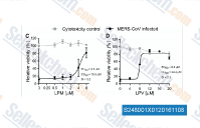
|
|
| S8596 | Autophinib | Autophinib is a potent autophagy inhibitor with a novel chemotype with IC50 values of 90 and 40 nM for autophagy in starvation induced autophagy assay and rapamycin induced autophagy assay. The IC50 value for Vps34 is 19 nM in vitro. | ||
| S8807 | PFK158 | PFK158 is a potent and selective inhibitor of PFKFB3. It has improved PK properties and causes ~80% growth inhibition in several mouse models of human-derived tumors. | ||
| S1389 | Omeprazole | Omeprazole is a proton pump inhibitor that blocks H(+)-K(+)-ATPase, used to treat dyspepsia, peptic ulcer disease, gastroesophageal reflux disease, laryngopharyngeal reflux, and Zollinger–Ellison syndrome. | ||
| S7106 | AZD3463 | AZD3463 is a novel orally bioavailable ALK inhibitor with Ki of 0.75 nM, which also inhibits IGF1R with equivalent potency. AZD3463 suppresses cell viability by inducing both cell apoptosis and autophagy. |
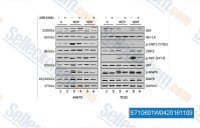
|
|
| S4484 | Trametinib DMSO solvate | Trametinib DMSO solvate is a highly specific and potent MEK1/2 inhibitor with IC50 of 0.92 nM/1.8 nM in cell-free assay. Trametinib activates autophagy and induces apoptosis. | ||
| S2181 | Ixazomib Citrate (MLN9708) Analogue | Ixazomib Citrate (MLN9708) Analogue is the analogue of Ixazomib Citrate (MLN9708) from WO2016165677A1. Ixazomib Citrate (MLN9708) immediately hydrolyzed to Ixazomib (MLN2238), the biologically active form, on exposure to aqueous solutions or plasma. Ixazomib (MLN2238) inhibits the chymotrypsin-like proteolytic (β5) site of the 20S proteasome with IC50/Ki of 3.4 nM/0.93 nM in cell-free assays, less potent to β1 and little activity to β2. Ixazomib (MLN2238) induces autophagy. Phase 3. |
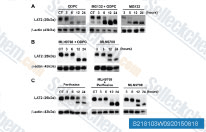
|
|
| S1693 | Carbamazepine | Carbamazepine (Carbatrol, NSC 169864) is a sodium channel blocker with IC50 of 131 μM in rat brain synaptosomes. | ||
| S7648 | OTS964 | OTS964 is a potent TOPK inhibitor with high affinity and selectivity and IC50 value is 28 nM. OTS964 is also a potent inhibitor of the cyclin-dependent kinase CDK11 with Kd of 40 nM. OTS964 treatment activates autophagy in glioma cells and induces apoptosis of human lung cancer cells in mouse xenografts. | ||
| S8240 | SMER28 | SMER28 is a small-molecule enhancer (SMER) of autophagy, inducing autophagy independently of rapamycin in mammalian cells. | ||
| S5144 | Neferine | Neferine ((R)-1,2-Dimethoxyaporphine), a natural component of Nelumbo nucifera, has antitumor efficiency. Neferine induces apoptosis in renal cancer cells. Neferine prevents autophagy through activation of Akt/mTOR pathway and Nrf2 in muscle cells. Neferine strongly inhibits NF-κB activation. Neferine possesses a number of therapeutic effects such as anti-diabetic, anti-aging, anti-microbial, anti-thrombotic, anti-arrhythmic, anti-inflammatory and even anti-HIV. | ||
| S1733 | Methylprednisolone | Methylprednisolone (NSC-19987,U 7532) is a synthetic glucocorticoid receptor agonist, used to achieve prompt suppression of inflammation. Methylprednisolone activates ACE2 and reduces IL-6 levels, thus improves severe or critical COVID-19. Methylprednisolone markedly reduces autophagy and apoptosis. |
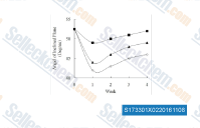
|
|
| S1747 | Nimodipine | Nimodipine (BAY E 9736) is a dihydropyridine calcium channel blocker and an autophagy inhibitor, used in the treatment of high blood pressure. |
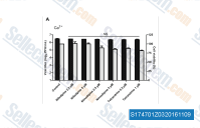
|
|
| S8597 | LYN-1604 | LYN-1604 is a potential ULK1 agonist with IC50 of 1.66 μM against MDA-MB-231 cells and it binds to wild-type ULK1 with a binding affinity in the nanomole range (Kd=291.4 nM). The ULK1 (Y89A) mutant protein caused a sharp decrease in binding affinity with lower response and Kd than wild-type ULK1, ULK1 (K50A) and ULK1 (L53A) mutants. | ||
| S6912 | Vacuolin-1 | Vacuolin-1 is a potent and cell-permeable inhibitor that blocks the Ca(2+)-dependent exocytosis of lysosomes and prevents the release of lysosomal content without affecting the process of resealing. Vacuolin-1 is also a potent and selective PIKfyve inhibitor, and inhibits autophagy by impairing lysosomal maturation via PIKfyve inhibition. | ||
| S3653 | Spermidine trihydrochloride | Spermidine (4-Azaoctamethylenediamine), a natural polyamine produced from putrescine and decarboxylated S-adenosylmethionine (dcSAM) by spermidine synthase, is a novel autophagy inducer and negatively modulates N-methyl-d-aspartate (NMDA). | ||
| S3758 | Sinomenine hydrochloride | Sinomenine (SN, Cucoline, Kukoline, Sabianine A), extracted from the Chinese medicinal plant, sinomenium acutum, is a potent anti-inflammatory and neuroprotective agent. | ||
| S8432 | Troglitazone (CS-045) | Troglitazone is a potent agonist for the peroxisome proliferator-activated receptor-(PPAR) that is a ligand activated transcription factor regulating cell differentiation and growth. Troglitazone induces autophagy, apoptosis and necroptosis in bladder cancer cells. Troglitazone prevents RSL3-induced ferroptosis and lipid peroxidation in Pfa1 cells. | ||
| S1837 | Flubendazole | Flubendazole (Flumoxanal, NSC 313680) is an autophagy inducer by targeting Atg4B, used to treat internal parasite and worm infection. |
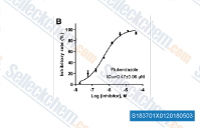
|
|
| S0709 | Tubastatin A TFA | Tubastatin A TFA (Tubastatin A trifluoroacetate salt) is a potent and selective HDAC6 inhibitor with IC50 of 15 nM in a cell-free assay. It is selective against all the other isozymes (1000-fold) except HDAC8 (57-fold). Tubastatin A promotes autophagy and increases apoptosis. | ||
| S8576 | EAD1 | EAD1 is a potent autophagy inhibitor with an IC50 of 5.8 μM in the BxPC3 cells. It has antiproliferative activities in lung and pancreatic cancer cells. | ||
| S6650 | EN6 | EN6 is a novel covalent autophagy activator and targets cysteine 277 in the ATP6V1A subunit of the lysosomal v-ATPase with an IC50 of 1.7 μM for recombinant human ATP6V1A protein. | ||
| S8527 | ROC-325 | ROC-325 is an orally available novel inhibitor of lysosomal-mediated autophagy which diminishes AML cell viability with the IC50 range of 0.7-2.2 μM. | ||
| S6847 | ML-9 HCl | ML-9 HCl (ML-9 hydrochloride) is a selective and potent inhibitor of Akt kinase, myosin light chain kinase (MLCK) and stromal interaction molecule 1 (STIM1). ML-9 HCl is also a potent inhibitor of Ca2+-permeable channels. ML-9 HCl is a lysosomotropic agent targeting autophagy and cell death. | ||
| S6889 | Monomethyl Fumarate | Monomethyl Fumarate (MMF, Monomethylfumarate, Fumaric acid monomethyl ester, Methyl hydrogen fumarate), the active metabolite of the psoriasis drug Fumaderm, is a potent GPR109A agonist. Monomethyl Fumarate prevents major dysfunctions associated with neurodegenerative diseases: oxidative stress, mitochondrial dysfunction, apoptosis and autophagy. | ||
| S6716 | NSC 185058 | NSC185058 inhibits ATG4B, the lipidation of LC3B, and autophagy without affecting the MTOR or PtdIns3K pathways. | ||
| S6301 | MPP+ iodide | MPP+ iodide (N-Methyl-4-Phenylpyridinium Iodide), the metabolite of a neurotoxin MPTP, causes symptom of Parkinson's disease (PD) in animal models by selectively destroying dopaminergic neurons in substantia nigra. MPP+ induces autophagic cell death in SH-SY5Y cells. MPP+ induces dopamine transporter (DAT) externalization in dopaminergic (DA) neurons, but internalization of serotonin transporter (SERT) in serotonergic (5-HT) neurons. | ||
| S1041 | STF-62247 | STF-62247 is a molecule targeting VHL-deficient renal cell carcinoma that induces autophagy. STF-62247 shows selective toxicity and growth inhibition of renal cells lacking VHL; 25-fold greater sensitivity observed for cells with VHL deficiency compared to wild-type (VHL+). |
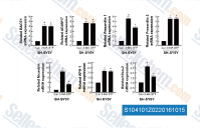
|
|
| S2458 | Clonidine HCl | Clonidine HCl(Kapvay) is a direct-acting α2 adrenergic agonist with an ED50 of 0.02±0.01 mg/kg. | ||
| S8764 | IITZ-01 | IITZ-01 is a potent autophagy inhibitor, enhancing autophagosome accumulation but inhibiting autophagosomal degradation by impairing lysosomal function. | ||
| S8943 | VLX600 | VLX600 is a novel iron-chelating inhibitor of oxidative phosphorylation (OXPHOS), potentiates the effect of radiation in tumor spheroids in a synergistic manner. VLX600 shows enhanced cytotoxic activity under conditions of nutrient starvation. VLX600 induces autophagy and mitochondrial inhibition with antitumor activity. | ||
| S3698 | Nortriptyline hydrochloride | Nortriptyline hydrochloride (Desitriptyline, ELF-101, EN-7048, Desmethylamitriptyline) is the hydrochloride salt form of nortriptyline, a tricyclic antidepressant agent used for short-term treatment of various forms of depression. | ||
| S6797 | QX77 | QX77 is a novel activator of chaperone-mediated autophagy (CMA). QX77 induces the up-regulation of Rab11 expression and up-regulates LAMP2A expression. | ||
| S6919 | Brevilin A | Brevilin A (6-O-Angeloylplenolina), a sesquiterpene lactone isolated from Centipeda minima, is a selective inhibitor of STAT3 and attenuates the JAKs activity by blocking the JAKs tyrosine kinase domain JH1. Brevilin A induces apoptosis and autophagy of colon adenocarcinoma cell CT26 via mitochondrial pathway and PI3K/AKT/mTOR inactivation. | ||
| S4081 | Sulfacetamide Sodium | Sulfacetamide Sodium is an anti-biotic. | ||
| S5920 | CA-5f | CA-5f is a potent late-stage macroautophagy/autophagy inhibitor via inhibiting autophagosome-lysosome fusion. | ||
| S6078 | ICCB-19 hydrochloride | ICCB-19 hydrochloride is an inhibitor of TNFRSF1A Associated Via Death Domain (TRADD) with IC50 of 1.12 μM and 2.01 μM for protecting Velcade-induced apoptosis in Jurkat cells and protecting RDA in MEFs, respectively. ICCB-19 indirectly inhibits Receptor-interacting serine/threonine-protein kinase 1 (RIPK1). ICCB-19 effectively induces autophagy. | ||
| S6471 | Lucanthone | Lucanthone is a novel autophagic inhibitor and also an orally available thioxanthone-based DNA intercalator and inhibitor of the DNA repair enzyme apurinic-apyrimidinic endonuclease 1. | ||
| S6395 | CA77.1 | CA77.1 (CA) is a potent, brain-penetrant and orally active activator of chaperone-mediated autophagy (CMA) for the treament of Alzheimer's disease (AD). | ||
| S9150 | Daurisoline | Daurisoline, a bis-benzylisoquinoline alkaloid isolated from the rhizomes of Menispermum dauricum, is a potent autophagy blockers with antiarrhythmic effects. | ||
| F0145 | LC3B Antibody [G7J7] | LC3B Rabbit mAb recognizes endogenous levels of total LC3B protein. | ||
| F2531 | SQSTM1/p62 Antibody [E23B2] | p62 (Sequestosome-1),p62 Ick ligand,p62/SQSTM1,SQSTM1,SQSTM1 / p62,SQSTM1/p62 | ||
| F0286 | LC3A Antibody [B6D19] | |||
| F0273 | Atg16L1 Antibody [P3K9] | Atg16L1 Rabbit mAb recognizes endogenous levels of total Atg16L1 protein. | ||
| F1073 | ATG4A Antibody [G4B5] | ATG4A Rabbit mAb recognizes endogenous levels of total ATG4A protein. | ||
| F0877 | Atg101 Antibody [C24E19] | Atg101 Rabbit mAb recognizes endogenous levels of total Atg101 protein. | ||
| F1488 | TMEM49/VMP1 Antibody [J17M11] | |||
| F2724 | SNAP29 Antibody [P6H21] | |||
| F1446 | Atg4B Antibody [N4F5] | |||
| F1683 | WIPI2 Antibody [J11P20] | |||
| S2491 | Nitrendipine | Nitrendipine (Bayotensin) is a dihydropyridine calcium channel blocker with an IC50 of 95 nM. | ||
| S4643 | KB-R7943 mesylate | KB-R7943 mesylate is a widely used inhibitor of the reverse Na+/Ca2+ exchanger (NCX(rev)) with IC50 of 5.7 μM. KB-R7943 mesylate promotes prostate cancer cell death by activating the JNK pathway and blocking autophagic flux. | ||
| S3984 | Nordihydroguaiaretic acid (NDGA) | Nordihydroguaiaretic acid (NDGA) is a phenolic antioxidant found in the leaves and twigs of the evergreen desert shrub, Larrea tridentata (Sesse and Moc. ex DC) Coville (creosote bush). It is a recognized inhibitor of lipoxygenase (LOX) and has antioxidant and free radical scavenging properties. Nordihydroguaiaretic acid (NDGA) is a cytotoxic insulin-like growth factor-I receptor (IGF-1R)/HER2 inhibitor and induces apoptosis. Nordihydroguaiaretic acid (NDGA) inhibits p300 and activates autophagy. Nordihydroguaiaretic acid (NDGA) protects cells from ferroptosis. | ||
| S5554 | Lanatoside C | Lanatoside C is a cardiac glycoside with antiviral and anti-tumor activity. Lanatoside C induces G2/M cell cycle arrest and induces autophagy and apoptosis via attenuating MAPK, Wnt, JAK-STAT, and PI3K/AKT/mTOR signaling pathways. | ||
| E4824 | Hydroxychloroquine | Hydroxychloroquine (HCQ) is an antimalarial drug that inhibits autophagy and is used to treat systemic lupus erythematosus (SLE) and rheumatoid arthritis (RA). It exhibits immunomodulatory, antithrombotic, and antiplatelet properties. It inhibits the release endothelin-1, a potent vasoconstrictor, and restores impaired angiogenesis in TNF-α-treated endothelial cells in vitro. It also reduces the production of inflammatory cytokines such as TNF-α, IFN-γ, and IL-6 from peripheral blood mononuclear cells, upregulates IL-10 and decreases platelet aggregation. | ||
| S2271 | Berberine chloride | Berberine chloride is a quaternary ammonium salt from the group of isoquinoline alkaloids. Berberine activates caspase 3 and caspase 8, cleavage of poly ADP-ribose polymerase (PARP) and the release of cytochrome c. Berberine chloride decreases the expression of c-IAP1, Bcl-2 and Bcl-XL. Berberine chloride induces apoptosis with sustained phosphorylation of JNK and p38 MAPK, as well as generation of the ROS. Berberine chloride is a dual topoisomerase I and II inhibitor. Berberine chloride is also a potential autophagy modulator. | ||
| S2391 | Quercetin (Sophoretin) | Quercetin, a natural flavonoid present in vegetables, fruit and wine, is a stimulator of recombinant SIRT1 and also a PI3K inhibitor with IC50 of 2.4-5.4 μM. Quercetin induces mitophagy, apoptosis and protective autophagy. Phase 4. |
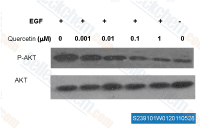
|
|
| S1027 | FL-411 | FL-411 (BRD4-IN-1) is a potent and selective inhibitor of Bromodomain-containing protein 4 (BRD4) with IC50 of 0.43 μM for BRD4(1). FL-411 induces ATG5-dependent autophagy-associated cell death (ACD) by blocking BRD4-AMPK interaction. | ||
| S5973 | Methylprednisolone Acetate | Methylprednisolone (NSC-19987, Medrol) acetate is a synthetic glucocorticoid receptor agonist, used to achieve prompt suppression of inflammation. Methylprednisolone activates ACE2 and reduces IL-6 levels, thus improves severe or critical COVID-19. Methylprednisolone markedly reduces autophagy and apoptosis. | ||
| E4809 | Piperaquine tetraphosphate tetrahydrate | Piperaquine tetraphosphate tetrahydrate is an inhibitor of autophagy . It is a bisquinoline antimalarial agent effective against Plasmodium falciparum. Piperaquine tetraphosphate tetrahydrate is useful in antimalarial research. | ||
| E8307New | Chloroquine dihydrochloride | Chloroquine dihydrochloride acts as an inhibitor of autophagy and toll-like receptors (TLRs). Chloroquine dihydrochloride is an antimalarial and anti-inflammatory agent widely used to treat malaria and rheumatoid arthritis. | ||
| S8964 | Actinomycin D (Dactinomycin) | Actinomycin D (Dactinomycin, Act D, RASP-101) is a significant polypeptide antibiotic isolated from soil bacteria of the genus Streptomyces. Actinomycin D (Dactinomycin) inhibits DNA repair and rests the cell cycle at G1 phase with IC50 of 0.42 μM and 0.4 nM, respectively. Actinomycin D is an RNA and protein synthesis inhibitor that can suppress bacterial protein synthesis. Actinomycin D is an autophagy activator, induces p53-independent cell death and prolongs survival in high-risk chronic lymphocytic leukemia.This product is a hazardous chemical (acute toxicity/flammable/skin corrosive). Please use it while wearing a protective face mask, gloves, and clothing. | ||
| S7409 | Anisomycin (Flagecidin) | Anisomycin (Flagecidin, Wuningmeisu C) is a bacterial antibiotic isolated from Streptomyces griseolus, which inhibits protein synthesis, and also act as a JNK activator. Anisomycin upregulates autophagy and increases apoptosis. |
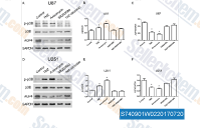
|
|
| S6957 | β-Elemene | β-Elemene ((-)-β-Elemene, Levo-β-elemene) is a sesquiterpene compound extracted from the herb Curcuma Rhizoma with antitumor activities. β-elemene can inhibit cell proliferation, arrest the cell cycle, and induce cell apoptosis or autophagy. |
||
| S4750 | Sulfacetamide sodium salt hydrate | Sulfacetamide is a sulfonamide antibiotic that blocks the synthesis of dihydrofolic acid by inhibiting the enzyme dihydropteroate synthase(DHPS) with IC50 of 9.5 μM. Sulfacetamide is a competitive inhibitor of bacterial para-aminobenzoic acid (PABA), which is required for bacterial synthesis of folic acid. | ||
| S9027 | Corynoxine | Corynoxine, a natural oxindole alkaloid, is a new autophagy enhancer. | ||
| E6578New | AS1708727 | AS1708727は経口活性型のFoxo1阻害剤で、G6PaseおよびPEPCKに対するEC50値はそれぞれ0.33 μMおよび0.59 μMである。 | ||
| S8744 | PHY34 | PHY34 is a late-stage autophagy inhibitor with nanomolar potency and significant antitumor efficacy as a single agent against HGSOC in vivo. | ||
| S9860 | BC1618 | BC1618 is an orally active Fbxo48 inhibitor that stimulates adenosine monophosphate (AMP)-activated protein kinase (Ampk)-dependent signaling. BC1618 promotes mitochondrial fission, facilitates autophagy and improves hepatic insulin sensitivity. | ||
| S9424 | Liensinine diperchlorate | Liensinine, a major isoquinoline alkaloid, inhibits late-stage autophagy/mitophagy through blocking autophagosome-lysosome fusion. It is a novel autophagy/mitophagy inhibitor. | ||
| S9611 | ABTL-0812 | ABTL0812 (α-Hydroxylinoleic acid, LP-10218, SCLN-0812) inhibits Akt/mTOR axis by inducing the overexpression of TRIB3 and activating autophagy in lung squamous carcinoma cell lines. ABTL0812 also induces AMPK activation and ROS accumulation. | ||
| S3890 | Leonurine | Leonurine, an active alkaloid extracted from Traditional Chinese Medicine Herba leonuri, exerts several biological effects, such as antidiabetic, cardiovascular, and bovine mastitis protection. | ||
| S4476 | PCNA-I1 | PCNA-I1 is a selective inhibitor of proliferating cell nuclear antigen (PCNA, a potential anticancer target). PCNA-I1 selectively binds to PCNA trimers with Kd of ~0.2 to 0.4 μM. PCNA-I1 inhibits the growth of tumor cells of various tissue types with IC50 of ~0.2 μM. PCNA-I1 induces DNA damage and apoptosis in both LNCaP and PC-3 cells. PCNA-I1 also induces autophagy in PC-3 cells. | ||
| S6851 | RA-190 | RA190, a bis-benzylidine piperidon, is a potent, selective and oral effective inhibitor of proteasome ubiquitin receptor RPN13/ADRM1 with anticancer activity. RA190 triggers ER stress response, p53/p21 signaling axis and autophagy in multiple myeloma cells. | ||
| S3569 | Spermidine | Spermidine is a natural polyamine that stimulates cytoprotective macroautophagy/autophagy. | ||
| S4546 | Xylitol | Xylitol (Adonitol, Ribitol, Xylite, D-Xylitol, Adonite) is a sugar alcohol derived from XYLOSE by reduction of the carbonyl group. It is as sweet as sucrose and used as a noncariogenic sweetener. | ||
| S0012 | E260 | E260 (Fer and FerT inhibitor E260) is a Fer kinase and FerT inhibitor that selectively evokes metabolic stress in cancer cells by imposing mitochondrial dysfunction and deformation, and onset of energy-consuming autophagy which decreases the cellular ATP level. | ||
| S9310 | Isorhychophylline | Isorhynchophylline (IsoRhy, 7-Isorhyncophylline) is a major tetracyclic oxindole alkaloid isolated from the Chinese herbal medicine Uncaria rhynchophylla (Miq.)Jacks (Gouteng in Chinese). It acts as a neuronal autophagy inducer with therapeutic potential for cardiovascular and central nervous system diseases. | ||
| E4692 | THZ-P1-2 | THZ-P1-2 is an inhibitor of PI5P4K, which covalently binds to cysteines on a disordered loop in PI5P4Kα/β/γ. It inhibits PI5P4Kα kinase activity with an IC50 of 190 nM and disrupts autophagy by impairing autophagosome clearance and increasing TFEB nuclear localization. | ||
| S6756 | Siramesine HCl | Siramesine (Lu 28-179) is a sigma receptor agonist, selective for the σ2 subtype with IC50 values of 0.12 nM and 17 nM for σ2 and σ1 receptors respectively. | ||
| E1232 | Concanavalin A | Concanavalin A is a potential anti-neoplastic agent targeting apoptosis, autophagy and anti-angiogenesis for cancer therapeutics. | ||
| S8597 | LYN-1604 | LYN-1604 is a potential ULK1 agonist with IC50 of 1.66 μM against MDA-MB-231 cells and it binds to wild-type ULK1 with a binding affinity in the nanomole range (Kd=291.4 nM). The ULK1 (Y89A) mutant protein caused a sharp decrease in binding affinity with lower response and Kd than wild-type ULK1, ULK1 (K50A) and ULK1 (L53A) mutants. | ||
| S6756 | Siramesine HCl | Siramesine (Lu 28-179) is a sigma receptor agonist, selective for the σ2 subtype with IC50 values of 0.12 nM and 17 nM for σ2 and σ1 receptors respectively. | ||
| S1105 | LY294002 | LY294002 (SF 1101, NSC 697286) は人工的に合成した分子としては初めての PI3Kα/δ/β 阻害剤であり、IC50 はそれぞれ 0.5 μM/ 0.57 μM/ 0.97 μM です。溶液中でウォルトマンニン (wortmannin) よりも安定しています。クラス I PI3K および PI3K 関連キナーゼだけでなく、一見 PI3K ファミリーには無関係にある新規のターゲットにも結合します。LY294002 は CK2 阻害剤でもあり、IC50 は 98 nM です。また LY294002 はオートファゴソーム (autophagosome) の形成をブロックする一方で、DNA-PKcs を非特異的に阻害することによりオートファジー (autophagy) を活性化し、アポトーシス (apoptosis) を誘導します。 |

|
|
| S1460 | SP600125 | SP600125 (Nsc75890) is a broad-spectrum JNK inhibitor for JNK1, JNK2 and JNK3 with IC50 of 40 nM, 40 nM and 90 nM in cell-free assays, respectively; 10-fold greater selectivity against MKK4, 25-fold greater selectivity against MKK3, MKK6, PKB, and PKCα, and 100-fold selectivity against ERK2, p38, Chk1, EGFR etc. SP600125 is also a broad‐spectrum inhibitor of serine/threonine kinases including Aurora kinase A,FLT3 and TRKA with of IC50 of 60 nM, 90 nM and 70 nM. SP600125 inhibits autophagy and activates apoptosis. |

|
|
| S1013 | Bortezomib | ボルテゾミブ (Bortezomib (PS-341, LDP-341, MLM341, NSC 681239)) は強力な 20S プロテアソーム (20S proteasome) 阻害剤であり、Ki は 0.6 nM です。正常細胞に比べがん細胞に対してより高い選択性を示します。 ボルテゾミブ (PS-341) は NF-κB を阻害し ERK のリン酸化を誘導することにより、卵巣がんなどの固形腫瘍において カテプシンB (cathepsin B) を抑制し、オートファジー (autophagy) の分解過程を阻害します。 |

|
|
| S2767 | 3-Methyladenine (3-MA) | 3-MA (3-Methyladenine) is a selective PI3K inhibitor for Vps34 and PI3Kγ with IC50 of 25 μM and 60 μM in HeLa cells; blocks class I PI3K consistently, whereas suppression of class III PI3K is transient, and also blocks autophagosome formation. Solutions are unstable and should be fresh-prepared. |

|
|
| S1102 | U0126-EtOH | U0126-EtOH is a highly selective inhibitor of MEK1/2 with IC50 of 0.07 μM/0.06 μM in cell-free assays, 100-fold higher affinity for ΔN3-S218E/S222D MEK than PD98059. U0126 inhibits autophagy and mitophagy with antiviral activity. |

|
|
| S1150 | Paclitaxel | パクリタキセル (Paclitaxel (NSC 125973, PTX)) は微小管を安定化することで脱重合を阻害します。ヒト血管内皮細胞における IC50 は 0.1 pM です。 |

|
|
| S1413 | Bafilomycin A1 (Baf-A1) | バフィロマイシン A1 (Bafilomycin A1(Baf-A1)) は液胞 H+-ATPase 阻害剤で、IC50 は 0.44 nM です。 バフィロマイシン A1 は、オートファジー (autophagy) を阻害する一方で、アポトーシス (apoptosis) を誘導することがわかっています。 |

|
|
| S1092 | KU-55933 | KU-55933 is a potent and specific ATM inhibitor with IC50/Ki of 12.9 nM/2.2 nM in cell-free assays, and is highly selective for ATM as compared to DNA-PK, PI3K/PI4K, ATR and mTOR. KU‑55933 (ATM Kinase Inhibitor) inhibits the activation of autophagy‑initiating kinase ULK1 and results in a significant decrease of autophagy. |

|
|
| S2758 | Wortmannin (SL-2052) | Wortmannin is the first described PI3K inhibitor with IC50 of 3 nM in a cell-free assay, with little selectivity within the PI3K family. Wortmannin blocks autophagosome formation and potently inhibits DNA-PK/ATM with IC50 of 16 nM and 150 nM in cell-free assays. Wortmannin also inhibits PLK1 activity. |

|
|
| S1109 | BI 2536 | BI-2536 is a potent Plk1 inhibitor with IC50 of 0.83 nM in a cell-free assay. BI-2536 inhibits Bromodomain 4 (BRD4) with Kd of 37 nM and potently suppresses c-Myc expression. BI-2536 induces apoptosis and attenuates autophagy. Phase 2. |

|
|
| S8037 | Necrostatin-1 (Nec-1) | Necrostatin-1 (Nec-1) is a specific RIP1 (RIPK1) inhibitor and inhibits TNF-α-induced necroptosis with EC50 of 490 nM in 293T cells. Necrostatin-1 also blocks IDO and suppresses autophagy and apoptosis. |

|
|
| S1490 | Ponatinib (AP24534) | Ponatinib is a novel, potent multi-target inhibitor of Abl, PDGFRα, VEGFR2, FGFR1 and Src with IC50 of 0.37 nM, 1.1 nM, 1.5 nM, 2.2 nM and 5.4 nM in cell-free assays, respectively. Ponatinib (AP24534) inhibits autophagy. |

|
|
| S4157 | Chloroquine diphosphate | Chloroquine diphosphate is a 4-aminoquinoline anti-malarial and anti-rheumatoid agent, also acting as an ATM activator. Chloroquine is also an inhibitor of toll-like receptors (TLRs). |

|
|
| S1786 | Verteporfin | ベルテポルフィン (Verteporfin (CL 318952)) は、TEAD-YAP 相互作用 と YAP による肝肥大を阻害します。 また、ポルフィリンに由来する強力な第 2 世代の光増感剤でもあります。ベルテポルフィンはオートファジー (autophagy) 阻害剤です。 ベルテポルフィンは細胞増殖を阻害し、アポトーシス (apoptosis) を誘導します。 |

|
|
| S6999 | Chloroquine | Chloroquine is an antimalarial drug and autophagy/lysosome inhibitor. Chloroquine also suppresses Toll-like receptor-9 (TLR9) protein expression. Chloroquine is highly effective agianst SARS-CoV-2 (COVID-19) infection with EC50 of 1.13 μM in Vero E6 cells. Chloroquine has anti-HIV-1 activity. | ||
| S2704 | LY2109761 | LY2109761 is a novel selective TGF-β receptor type I/II (TβRI/II) dual inhibitor with Ki of 38 nM and 300 nM in a cell-free assay, respectively; shown to negatively affect the phosphorylation of Smad2. LY2109761 blocks autophagy and induces apoptosis. |

|
|
| S1113 | GSK690693 | GSK690693 is a pan-Akt inhibitor targeting Akt1/2/3 with IC50 of 2 nM/13 nM/9 nM in cell-free assays, also sensitive to the AGC kinase family: PKA, PrkX and PKC isozymes. GSK690693 also potently inhibits AMPK and DAPK3 from the CAMK family with IC50 of 50 nM and 81 nM, respectively. GSK690693 affects Unc-51-like autophagy activating kinase 1 (ULK1) activity, robustly inhibits STING-dependent IRF3 activation. Phase 1. |

|
|
| S2775 | Nocodazole | Nocodazole is a rapidly-reversible inhibitor of microtubule polymerization, also inhibits Abl, Abl(E255K) and Abl(T315I) with IC50 of 0.21 μM, 0.53 μM and 0.64 μM in cell-free assays, respectively. Nocodazole induces apoptosis. |

|
|
| S4430 | Hydroxychloroquine (HCQ) Sulfate | Hydroxychloroquine (HCQ) Sulfate is an antimalarial agent used for the treatment of systemic lupus erythematosus, rheumatoid arthritis and other autoimmune, inflammatory and dermatologic conditions. Also acts as an inhibitor of autophagy and toll-like receptor (TLR) 7/9. |

|
|
| S7811 | MHY1485 | MHY1485 is a potent, and cell-permeable mTOR activator, and also potently inhibits autophagy. |

|
|
| S7046 | Brefeldin A (BFA) | Brefeldin A (BFA) is a lactone antibiotic and ATPase inhibitor for protein transport with IC50 of 0.2 μM in HCT 116 cells, induces cancer cell differentiation and apoptosis. It could also improve the HDR(homology-directed repair) efficiency and be an enhancer of CRISPR-mediated HDR. Brefeldin A is also an inhibitor of autophagy and mitophagy. |

|
|
| S3042 | Purmorphamine | Purmorphamine (Shh Signaling Antagonist VI), which directly binds and activates Smoothened, blocks BODIPY-cyclopamine binding to Smo with IC50 of ~ 1.5 μM in HEK293T cell and also is an inducer of osteoblast differentiation with EC50 of 1 μM. Purmorphamine can reduce both basal and induced autophagy. |

|
|
| S7423 | KN-93 Phosphate | KN-93 Phosphate is a potent and specific inhibitor of Ca2+/calmodulin-dependent protein kinase II (CaMKII) with Ki of 0.37 μM, no remarkable inhibitory effects on APK, PKC, MLCK or Ca2+-PDE activities. KN-93 attenuates CaMKII-induced autophagy.This product is not soluble in saline. Please do not dissolve it in saline for administration. |

|
|
| S7455 | Resatorvid (TAK-242) | Resatorvid (TAK-242, CLI-095) is a small-molecule-specific inhibitor of Toll-like receptor (TLR) 4 signaling, blocking LPS-induced production of NO, TNF-α and IL-6 in macrophages with IC50 of 1.8 nM, 1.9 nM and 1.3 nM, respectively. Resatorvid downregulates expression of TLR4 downstream signaling molecules MyD88 and TRIF. Resatorvid inhibits autophagy. | ||
| S2243 | Degrasyn (WP1130) | Degrasyn (WP1130) is a selective deubiquitinase (DUB: USP5, UCH-L1, USP9x, USP14, and UCH37) inhibitor and also suppresses Bcr/Abl, also a JAK2 transducer (without affecting 20S proteasome) and activator of transcription (STAT). Degrasyn (WP1130) induces apoptosis and blocks autophagy. |

|
|
| S7033 | GSK2656157 | GSK2656157 is an ATP-competitive and highly selective inhibitor of PERK with IC50 of 0.9 nM in a cell-free assay, 500-fold greater against a panel of 300 kinases. GSK2656157 decreases apoptosis and inhibits excessive autophagy. |

|
|
| S7751 | VER155008 | VER155008 is a potent Hsp70 family inhibitor with IC50 of 0.5 μM, 2.6 μM, and 2.6 μM in cell-free assays for HSP70, HSC70, and GRP78 (HSPA5, Bip), respectively, >100-fold selectivity over HSP90. VER155008 inhibits autophagy and causes reduced levels of HSP90 client proteins. |

|
|
| S7146 | DMH1 | DMH1 is a selective BMP receptor inhibitor with IC50 of 107.9 nM for ALK2, exhibiting no inhibition on AMPK, ALK5, KDR (VEGFR-2) or PDGFR. DMH1 inhibits autophagy. |

|
|
| S7888 | Spautin-1 | Spautin-1 is a potent and specific autophagy inhibitor, and inhibits the deubiquitinating activity of USP10 and USP13 with IC50 of ∼0.6-0.7 μM. Spautin-1 enhances apoptosis. |

|
|
| S7949 | MRT68921 HCl | MRT68921 is a potent and dual autophagy kinase ULK1/2 inhibitor with IC50 of 2.9 nM and 1.1 nM, respectively. |

|
|
| S7885 | SBI-0206965 | SBI-0206965 is a highly selective autophagy kinase ULK1 inhibitor with IC50 of 108 nM, about 7-fold selectivity over ULK2. SBI-0206965 inhibits autophagy and enhances apoptosis in human glioblastoma and lung cancer cells. |

|
|
| S8222 | AS1842856 | AS1842856 is a cell-permeable inhibitor that blocks the transcription activity of Foxo1 with IC50 of 33 nM. It could directly bind to the active Foxo1, but not the Ser256-phosphorylated form. AS1842856 suppresses autophagy. |

|
|
| S7682 | SAR405 | SAR405 is a low-molecular-mass kinase inhibitor of PIK3C3/Vps34 (KD 1.5 nM) showing high selectivity and not be active up to 10 μM on class I and class II PI3Ks as well as on mTOR. SAR405 prevents autophagy and synergizes with MTOR (mechanistic target of rapamycin) inhibition in tumor cells. |

|
|
| S7381 | Pepstatin A | Pepstatin A (Pepstatin) is a potent aspartic protease inhibitor, and also inhibits HIV replication. Pepstatin A is also an inhibitor of cathepsins D and cathepsins E. Pepstatin A inhibits autophagy by suppressing lysosomal proteases. | ||
| S7289 | PFK15 | PFK15 (PFK-015) is a potent and selective 6-phosphofructo-2-kinase (PFKFB3) inhibitor with IC50 of 207 nM. |

|
|
| S1835 | Azithromycin | Azithromycin is an antibiotic by inhibiting protein synthesis, used for the treatment of bacterial infections. | ||
| S2930 | Pifithrin-μ | Pifithrin-μ (NSC 303580, PFTμ, 2-Phenylethynesulfonamide) is a specific p53 inhibitor by reducing its affinity to Bcl-xL and Bcl-2, and also inhibits HSP70 function and autophagy. |

|
|
| S1346 | Heparin sodium | Heparin sodium, a sulfated polysaccharide belonging to the family of glycosaminoglycans, has numerous important biological activities associated with its interaction with diverse proteins. Heparin is used as an anticoagulant primarily through its interaction with AT III by enhancing AT-IIImediated inhibition of blood coagulation factors, including thrombin and factor Xa. Heparin prevents the induction of autophagy. | ||
| S7683 | PIK-III | PIK-III (VPS34-IN2), which is a selective inhibitor of VPS34 enzymatic activity, inhibits autophagy and de novo lipidation of LC3 and leads to the stabilization of autophagy substrates. |

|
|
| S7660 | Obeticholic Acid (INT-747) | Obeticholic Acid (INT-747) is a potent and selective farnesoid X receptor (FXR) agonist with EC50 of 99 nM. Obeticholic Acid inhibits autophagy. Phase 3. |

|
|
| S7948 | MRT67307 HCl | MRT67307 is a potent and dual IKKϵ and TBK1 inhibitor with IC50 of 160 and 19 nM, respectively. MRT67307 potently inhibits ULK1 and ULK2 and blocks autophagy. |

|
|
| S8274 | STO-609 | STO-609 is a specific inhibitor of the Ca2+/Calmodulin-dependent protein kinase kinase(CaM-KK) that inhibits the activities of recombinant CaM-KKα and CaM-KKβ isoforms, with Ki values of 80 and 15 ng/ml, respectively, and also inhibits their autophosphorylation activities. STO-609 inhibits AMPKK activity and inhibits autophagy. | ||
| S8808 | DC661 | DC661 is capable of deacidifying the lysosome and inhibiting autophagy significantly better than HCQ. DC661 induces apoptosis. | ||
| S8793 | ULK-101 | ULK-101 is a potent and selective ULK1 inhibitor with IC50 values of 8.3 nM and 30 nM for ULK1 and ULK2, respectively. | ||
| S8317 | 3BDO | 3BDO, a butyrolactone derivative, could target FKBP1A and activate the mTOR signaling pathway. It inhibits autophagy in HUVECs. 3BDO inhibits oxLDL-induced apoptosis. | ||
| S8369 | Lys05 | Lys05 is a new lysosomal autophagy inhibitor which potently accumulates within and deacidifies the lysosome of both cells and tumors, resulting in sustained inhibition of autophagy and tumor growth. | ||
| S8596 | Autophinib | Autophinib is a potent autophagy inhibitor with a novel chemotype with IC50 values of 90 and 40 nM for autophagy in starvation induced autophagy assay and rapamycin induced autophagy assay. The IC50 value for Vps34 is 19 nM in vitro. | ||
| S8807 | PFK158 | PFK158 is a potent and selective inhibitor of PFKFB3. It has improved PK properties and causes ~80% growth inhibition in several mouse models of human-derived tumors. | ||
| S1733 | Methylprednisolone | Methylprednisolone (NSC-19987,U 7532) is a synthetic glucocorticoid receptor agonist, used to achieve prompt suppression of inflammation. Methylprednisolone activates ACE2 and reduces IL-6 levels, thus improves severe or critical COVID-19. Methylprednisolone markedly reduces autophagy and apoptosis. |

|
|
| S6912 | Vacuolin-1 | Vacuolin-1 is a potent and cell-permeable inhibitor that blocks the Ca(2+)-dependent exocytosis of lysosomes and prevents the release of lysosomal content without affecting the process of resealing. Vacuolin-1 is also a potent and selective PIKfyve inhibitor, and inhibits autophagy by impairing lysosomal maturation via PIKfyve inhibition. | ||
| S3758 | Sinomenine hydrochloride | Sinomenine (SN, Cucoline, Kukoline, Sabianine A), extracted from the Chinese medicinal plant, sinomenium acutum, is a potent anti-inflammatory and neuroprotective agent. | ||
| S8576 | EAD1 | EAD1 is a potent autophagy inhibitor with an IC50 of 5.8 μM in the BxPC3 cells. It has antiproliferative activities in lung and pancreatic cancer cells. | ||
| S8527 | ROC-325 | ROC-325 is an orally available novel inhibitor of lysosomal-mediated autophagy which diminishes AML cell viability with the IC50 range of 0.7-2.2 μM. | ||
| S6716 | NSC 185058 | NSC185058 inhibits ATG4B, the lipidation of LC3B, and autophagy without affecting the MTOR or PtdIns3K pathways. | ||
| S8764 | IITZ-01 | IITZ-01 is a potent autophagy inhibitor, enhancing autophagosome accumulation but inhibiting autophagosomal degradation by impairing lysosomal function. | ||
| S3698 | Nortriptyline hydrochloride | Nortriptyline hydrochloride (Desitriptyline, ELF-101, EN-7048, Desmethylamitriptyline) is the hydrochloride salt form of nortriptyline, a tricyclic antidepressant agent used for short-term treatment of various forms of depression. | ||
| S5920 | CA-5f | CA-5f is a potent late-stage macroautophagy/autophagy inhibitor via inhibiting autophagosome-lysosome fusion. | ||
| S6471 | Lucanthone | Lucanthone is a novel autophagic inhibitor and also an orally available thioxanthone-based DNA intercalator and inhibitor of the DNA repair enzyme apurinic-apyrimidinic endonuclease 1. | ||
| S9150 | Daurisoline | Daurisoline, a bis-benzylisoquinoline alkaloid isolated from the rhizomes of Menispermum dauricum, is a potent autophagy blockers with antiarrhythmic effects. | ||
| S4643 | KB-R7943 mesylate | KB-R7943 mesylate is a widely used inhibitor of the reverse Na+/Ca2+ exchanger (NCX(rev)) with IC50 of 5.7 μM. KB-R7943 mesylate promotes prostate cancer cell death by activating the JNK pathway and blocking autophagic flux. | ||
| E4824 | Hydroxychloroquine | Hydroxychloroquine (HCQ) is an antimalarial drug that inhibits autophagy and is used to treat systemic lupus erythematosus (SLE) and rheumatoid arthritis (RA). It exhibits immunomodulatory, antithrombotic, and antiplatelet properties. It inhibits the release endothelin-1, a potent vasoconstrictor, and restores impaired angiogenesis in TNF-α-treated endothelial cells in vitro. It also reduces the production of inflammatory cytokines such as TNF-α, IFN-γ, and IL-6 from peripheral blood mononuclear cells, upregulates IL-10 and decreases platelet aggregation. | ||
| S5973 | Methylprednisolone Acetate | Methylprednisolone (NSC-19987, Medrol) acetate is a synthetic glucocorticoid receptor agonist, used to achieve prompt suppression of inflammation. Methylprednisolone activates ACE2 and reduces IL-6 levels, thus improves severe or critical COVID-19. Methylprednisolone markedly reduces autophagy and apoptosis. | ||
| E4809 | Piperaquine tetraphosphate tetrahydrate | Piperaquine tetraphosphate tetrahydrate is an inhibitor of autophagy . It is a bisquinoline antimalarial agent effective against Plasmodium falciparum. Piperaquine tetraphosphate tetrahydrate is useful in antimalarial research. | ||
| E8307New | Chloroquine dihydrochloride | Chloroquine dihydrochloride acts as an inhibitor of autophagy and toll-like receptors (TLRs). Chloroquine dihydrochloride is an antimalarial and anti-inflammatory agent widely used to treat malaria and rheumatoid arthritis. | ||
| E6578New | AS1708727 | AS1708727は経口活性型のFoxo1阻害剤で、G6PaseおよびPEPCKに対するEC50値はそれぞれ0.33 μMおよび0.59 μMである。 | ||
| S8744 | PHY34 | PHY34 is a late-stage autophagy inhibitor with nanomolar potency and significant antitumor efficacy as a single agent against HGSOC in vivo. | ||
| S9424 | Liensinine diperchlorate | Liensinine, a major isoquinoline alkaloid, inhibits late-stage autophagy/mitophagy through blocking autophagosome-lysosome fusion. It is a novel autophagy/mitophagy inhibitor. | ||
| E1232 | Concanavalin A | Concanavalin A is a potential anti-neoplastic agent targeting apoptosis, autophagy and anti-angiogenesis for cancer therapeutics. | ||
| S1078 | MK-2206 Dihydrochloride | MK-2206 2HCl は高い選択性をもつ Akt1/2/3 阻害剤であり、cell-free assay における IC50 はそれぞれ 8 nM/ 12 nM/ 65 nM です。一方で、他の250種におよぶキナーゼ (kinases) に対しては活性が検出されていません。MK-2206 2HCl はがん細胞におけるオートファジー (autophagy) やアポトーシス (apoptosis) に関与します。臨床第2相試験中 |

|
|
| S1039 | Rapamycin (Sirolimus) | ラパマイシン (Rapamycin (NSC-2260804,AY-22989)) は特異的 mTOR 阻害剤であり、HEK293 細胞に対する IC50 は < 0.1 nM です。 |

|
|
| S1060 | Olaparib (AZD2281) | オラパリブ (Olaparib (AZD2281, KU0059436)) は選択的 PARP1/2 阻害剤であり、cell-free assay における IC50 はそれぞれ 5 nM および 1 nM です。タンキラーゼ-1 (Tankyrase-1) に対しては 1/300 の効果を示します。オラパリブは BRCA に変異をきたした細胞において、マイトファジー (mitophagy) に関連した顕著なオートファジー (mitophagy) を誘発します。 |

|
|
| S1049 | Y-27632 Dihydrochloride | Y-27632 2HCl は選択的 ROCK1 (p160ROCK) 阻害剤であり、cell-free assay における Ki は 140 nM です。PKC, cAMP-依存性プロテインキナーゼ, MLCK や PAK など他のキナーゼよりも ROCK1 に対して 200 倍以上の選択性を示します。 |

|
|
| S1263 | CHIR-99021 (Laduviglusib) | ラドゥビグルシブ (Laduviglusib (CHIR-99021、CT99021)) は GSK-3α および GSK-3β 阻害剤であり、IC50 はそれぞれ 10 nM および 6.7 nM です。 ラドゥビグルシブは、サイクリン依存性キナーゼ (CDK) に対して交差反応性を示さず、CDK と比較して GSK-3β に対して 350 倍の選択性を示します。 Laduviglusib は Wnt/β-catenin 活性化因子として機能し、オートファジー (autophagy) を誘導します。 |

|
|
| S1120 | Everolimus (RAD001) | エベロリムス (Everolimus (RAD001, SDZ-RAD)) は FKBP12 に結合することで形成した複合体により mTOR を阻害します。Cell-free assay における IC50 は1.6 ~ 2.4 nM です。エベロリムスは アポトーシス (apoptosis) と オートファジー (autophagy) を誘発することによりがん細胞の増殖を阻害します。 |

|
|
| S1025 | Gefitinib (ZD1839) | Gefitinib is an EGFR inhibitor for Tyr1173, Tyr992, Tyr1173 and Tyr992 in the NR6wtEGFR and NR6W cells with IC50 of 37 nM, 37nM, 26 nM and 57 nM, respectively. Gefitinib promotes autophagy and apoptosis of lung cancer cells via blockade of the PI3K/AKT/mTOR pathway. |

|
|
| S1166 | Cisplatin | シスプラチン (Cisplatin (NSC 119875, Cisplatinum, cis-diamminedichloroplatinum II, CDDP, cis DDP, DDP)) は無機白金錯体であり、腫瘍細胞中において DNA 付加物を形成することにより DNA 合成を阻害する能力を有します。シスプラチンはフェロトーシス (ferroptosis) を活性化し、オートファジー (autophagy) を誘導します。溶液は都度調製してください。Solutions are unstable and should be fresh-prepared.DMSO is not recommended to dissolve platinum-based drugs, which can easily lead to drug inactivation. |

|
|
| S1267 | Vemurafenib (PLX4032) | Vemurafenib (RG7204, RO5185426,PLX4032) is a novel and potent inhibitor of B-RafV600E with IC50 of 31 nM in cell-free assay. 10-fold selective for B-RafV600E over wild-type B-Raf in enzymatic assays and the cellular selectivity can exceed 100-fold. Vemurafenib (PLX4032, RG7204) induces autophagy. |

|
|
| S1378 | Ruxolitinib (INCB18424) | ルクソリチニブ (Ruxolitinib (INCB018424)) は、最初に臨床試験が行われた強力で選択的なJAK1/2 阻害剤であり、IC50 はそれぞれ 3.3 nM/ 2.8 nM、JAK1/2 に対して JAK3 の 130 倍の選択性を示します。ルクソリチニブはマイトファジー (mitophagy) によって抗腫瘍作用を示します。また、オートファジー (autophagy) を誘導し、アポトーシス (apoptosis) を促進します。 |

|
|
| S1023 | Erlotinib Hydrochloride | Erlotinib HCl is an EGFR inhibitor with IC50 of 2 nM in cell-free assays, >1000-fold more sensitive for EGFR than human c-Src or v-Abl. |

|
|
| S7786 | Erlotinib (CP-358774) | Erlotinib is an EGFR inhibitor with IC50 of 2 nM, >1000-fold more sensitive for EGFR than human c-Src or v-Abl. Erlotinib induces autophagy. |

|
|
| S8048 | Venetoclax (ABT-199) | Venetoclax (ABT-199, GDC-0199) is a Bcl-2-selective inhibitor with Ki of <0.01 nM in cell-free assays, >4800-fold more selective versus Bcl-xL and Bcl-w, and no activity to Mcl-1. Venetoclax is reported to induce cell growth suppression, apoptosis, cell cycle arrest, and autophagy in triple negative breast cancer MDA-MB-231 cells. Phase 3. |

|
|
| S1047 | Vorinostat (SAHA) | Vorinostat (SAHA) is an HDAC inhibitor with IC50 of ~10 nM in a cell-free assay. Vorinostat abrogates productive HPV-18 DNA amplification. |

|
|
| S1021 | Dasatinib | Dasatinibは新規の強力なマルチターゲット阻害剤であり、cell-free assy における Abl, Src および c-Kit に対する IC50 はそれぞれ < 1 nM, 0.8 nM および 79 nM です。Dsatinib はオートファジー (autophagy) とアポトーシス (apoptosis) を誘発し、抗腫瘍活性を示します。 |

|
|
| S1250 | Enzalutamide (MDV3100) | エンザルタミド (Enzalutamide (MDV3100)) は、アンドロゲン受容体 (androgen receptor, AR) アンタゴニストで LNCaP 細胞における IC50 は36 nM です。エンザルミドはオートファジー (autophagy) を増加させることが示されています。 |

|
|
| S7397 | Sorafenib (BAY 43-9006) | Sorafenib is a multikinase inhibitor of Raf-1 and B-Raf with IC50 of 6 nM and 22 nM in cell-free assays, respectively. Sorafenib inhibits VEGFR-2, VEGFR-3, PDGFR-β, Flt-3 and c-KIT with IC50 of 90 nM, 20 nM, 57 nM, 59 nM and 68 nM, respectively. Sorafenib induces autophagy and apoptosis and activates ferroptosis with anti-tumor activity. |

|
|
| S7306 | Dorsomorphin Dihydrochloride | Dorsomorphin 2HCl is a potent, reversible, selective AMPK inhibitor with Ki of 109 nM in cell-free assays, exhibiting no significant inhibition of several structurally related kinases including ZAPK, SYK, PKCθ, PKA, and JAK3. Also inhibits type Ⅰ BMP receptor activity. Dorsomorphin induces autophagy in cancer cell line. |

|
|
| S2111 | Lapatinib | Lapatinib is a potent EGFR and ErbB2 inhibitor with IC50 of 10.8 and 9.2 nM in cell-free assays, respectively. Lapatinib induces ferroptosis and autophagic cell death. |

|
|
| S1009 | Dactolisib (BEZ235) | Dactolisib (BEZ235, NVP-BEZ235) is a dual ATP-competitive PI3K and mTOR inhibitor for p110α/γ/δ/β and mTOR(p70S6K) with IC50 of 4 nM /5 nM /7 nM /75 nM /6 nM in cell-free assays, respectively. Inhibits ATR with IC50 of 21 nM in 3T3TopBP1-ER cell. Dactolisib induces autophagy and suppresses HIV-1 replication. Phase 2. |

|
|
| S1065 | Pictilisib (GDC-0941) | Pictilisib (GDC-0941, RG7321) is a potent inhibitor of PI3Kα/δ with IC50 of 3 nM in cell-free assays, with modest selectivity against p110β (11-fold) and p110γ (25-fold). Pictilisib (GDC-0941) induces autophagy and apoptosis. Phase 2. |

|
|
| S1068 | Crizotinib (PF-02341066) | Crizotinib is a potent inhibitor of c-Met and ALK with IC50 of 11 nM and 24 nM in cell-based assays, respectively. It is also a potent ROS1 inhibitor with Ki value less than 0.025 nM. Crizotinib induces autophagy through inhibition of the STAT3 pathway in multiple lung cancer cell lines. |

|
|
| S7840 | Dorsomorphin | Dorsomorphin is a potent, reversible, selective AMPK inhibitor with Ki of 109 nM in cell-free assays, exhibiting no significant inhibition of several structurally related kinases including ZAPK, SYK, PKCθ, PKA, and JAK3. Dorsomorphin selectively inhibits the BMP type I receptors ALK2, ALK3 and ALK6. Dorsomorphin is used in promoting specific cell differentiation and inducing cancer cell line autophagy. For animal testing, the water-soluble S7306 Dorsomorphin (Compound C) 2HCl is recommended. |

|
|
| S1053 | Entinostat (MS-275) | Entinostat (MS-275, SNDX-275) strongly inhibits HDAC1 and HDAC3 with IC50 of 0.51 μM and 1.7 μM in cell-free assays, compared with HDACs 4, 6, 8, and 10. Entinostat induces autophagy and apoptosis. Phase 3. |

|
|
| S1030 | Panobinostat (LBH589) | Panobinostat (LBH589, NVP-LBH589) is a novel broad-spectrum HDAC inhibitor with IC50 of 5 nM in a cell-free assay. Panobinostat (LBH589) induces autophagy and apoptosis. Panobinostat effectively disrupts HIV latency in vivo. Phase 3. |

|
|
| S1011 | Afatinib (BIBW2992) | アファチニブ (Afatinib) は in vitro において EGFR/ErbB を不可逆的に阻害します。IC50 は EGFRwt, EGFR L858R , EGFR L858R/T790M ErbB2 (HER2) and ErbB4 (HER4) に対してそれぞれ 0.5, 0.4, 10, 14 および 1 nM です。アファチニブによってオートファジー (autophagy) が誘発されることが報告されています。 |

|
|
| S7110 | (+)-JQ1 | (+)-JQ1 is a BET bromodomain inhibitor, with IC50 of 77 nM/33 nM for BRD4(1/2) in cell-free assays, binding to all bromodomains of the BET family, but not to bromodomains outside the BET family. (+)-JQ1 suppresses cell proliferation via inducing autophagy. (+)-JQ1 inhibits the expression of Nuclear receptor binding SET domain protein 3 (NSD3) target genes. |

|
|
| S1133 | Alisertib (MLN8237) | Alisertib (MLN8237) is a selective Aurora A inhibitor with IC50 of 1.2 nM in a cell-free assay. It has >200-fold higher selectivity for Aurora A than Aurora B. Alisertib induces cell cycle arrest, apoptosis and autophagy. Phase 3. |
-S113303W0120130926.gif)
|
|
| S1002 | ABT-737 | ABT-737 is a BH3 mimetic inhibitor of Bcl-xL, Bcl-2 and Bcl-w with EC50 of 78.7 nM, 30.3 nM and 197.8 nM in cell-free assays, respectively; no inhibition observed against Mcl-1, Bcl-B or Bfl-1. ABT-737 induces mitochondrial pathway apoptosis and mitophagy. Phase 2. |

|
|
| S1006 | Saracatinib (AZD0530) | Saracatinib (AZD0530) is a potent Src inhibitor with IC50 of 2.7 nM in cell-free assays, and potent to c-Yes, Fyn, Lyn, Blk, Fgr and Lck; less active for Abl and EGFR (L858R and L861Q). Saracatinib induces autophagy. Phase 2/3. |

|
|
| S1225 | Etoposide | Etoposide is a semisynthetic derivative of podophyllotoxin, which inhibits DNA synthesis via topoisomerase II inhibition activity which enhances double-strand and single-strand cleavage of DNA and reversibly inhibits repair by topoisomerase II binding. Etoposide induces autophagy, mitophagy and apoptosis. |

|
|
| S2475 | Imatinib | Imatinib is a multi-target inhibitor of tyrosine kinase with inhibition for v-Abl, c-Kit and PDGFR, IC50 values are 0.6 μM, 0.1 μM and 0.1 μM in cell-free or cell-based assays, respectively. Imatinib (STI571) induces autophagy. |

|
|
| S2226 | Idelalisib (CAL-101) | Idelalisib (CAL-101) is a selective p110δ inhibitor with IC50 of 2.5 nM in cell-free assays; shown to have 40- to 300-fold greater selectivity for p110δ than p110α/β/γ, and 400- to 4000-fold more selectivity to p110δ than C2β, hVPS34, DNA-PK and mTOR. Idelalisib also stimulates autophagy. |

|
|
| S1040 | Sorafenib tosylate | Sorafenib tosylate is a multikinase inhibitor of Raf-1 and B-Raf with IC50 of 6 nM and 22 nM in cell-free assays, respectively. Sorafenib Tosylate inhibits VEGFR-2, VEGFR-3, PDGFR-β, Flt-3 and c-KIT with IC50 of 90 nM, 20 nM, 57 nM, 59 nM and 68 nM, respectively. Sorafenib Tosylate induces autophagy and apoptosis and activates ferroptosis with anti-tumor activity. |

|
|
| S1555 | AZD8055 | AZD8055 is a novel ATP-competitive mTOR inhibitor with IC50 of 0.8 nM in MDA-MB-468 cells with excellent selectivity (∼1,000-fold) against PI3K isoforms and ATM/DNA-PK. AZD8055 induces caspase-dependent apoptosis and also induces autophagy. Phase 1. |

|
|
| S1714 | Gemcitabine | Gemcitabine, a nucleic acid synthesis inhibitor, is a very potent and specific deoxycytidine analogue, used as chemotherapy. Gemcitabine induces a potent p53-dependent apoptosis. |

|
|
| S1004 | Veliparib (ABT-888) | Veliparib (ABT-888, NSC 737664) is a potent inhibitor of PARP1 and PARP2 with Ki of 5.2 nM and 2.9 nM in cell-free assays, respectively. It is inactive to SIRT2. Veliparib increases autophagy and apoptosis. Phase 3. |

|
|
| S7781 | Sunitinib (SU-11248) | Sunitinib is a multi-targeted RTK inhibitor targeting VEGFR2 (Flk-1) and PDGFRβ with IC50 of 80 nM and 2 nM, and also inhibits c-Kit. Sunitinib is also a dose-dependent inhibitor of the autophosphorylation activity of IRE1α. Sunitinib induces autophagy and apoptosis. |

|
|
| S2827 | Torin 1 | Torin 1 is a potent inhibitor of mTORC1/2 with IC50 of 2 nM/10 nM in cell-free assays; exhibits 1000-fold selectivity for mTOR than PI3K. |

|
|
| S2853 | Carfilzomib (PR-171) | Carfilzomib (PR-171) is an irreversible proteasome inhibitor with IC50 of <5 nM in ANBL-6 cells, displayed preferential in vitro inhibitory potency against the ChT-L activity in the β5 subunit, but little or no effect on the PGPH and T-L activities. Carfilzomib activates prosurvival autophagy and induces cell apoptosis. |

|
|
| S1224 | Oxaliplatin | Oxaliplatin is a DNA alkylating agent that activates autophagy. Oxaliplatin inhibits DNA synthesis by conforming DNA adducts in RT4, TCCSUP, A2780, HT-29, U-373MG, U-87MG, SK-MEL-2, and HT-144 cells.Solutions are unstable and should be fresh-prepared.DMSO is not recommended to dissolve platinum-based drugs, which can easily lead to drug inactivation. |

|
|
| S1178 | Regorafenib (BAY 73-4506) | Regorafenibは VEGFR1, VEGFR2, VEGFR3, PDGFRβ, Kit (c-Kit), RET (c-RET) および Raf-1 に対するマルチターゲット阻害剤であり、cell-free assay における IC50 はそれぞれ 13 nM/4.2 nM/46 nM, 22 nM, 7 nM, 1.5 nM, 2.5 nM です。Regorafenib はオートファジーを誘導します。 |

|
|
| S1237 | TMZ(Temozolomide) | テモゾロミド (Temozolomide (NSC 362856,TMZ,CCRG 81045,Methazolastone)) はDNA 環上の窒素原子と環外酸素を修飾することが可能な単官能性 SN1 アルキル化剤であり、中間体である MTIC を経て、活性代謝産物であるメチルジアゾニウムカチオン (methyl diazoniumcation) に分解されると、生理学的 pH において DNA にメチル基を転移します。テモゾロミドはアポトーシス (apoptosis) を誘発し、抗がん活性を呈します。L-1210 細胞および L-1210/BCNU 細胞における DNA 損傷誘導剤です。 |

|
|
| S5243 | Ruxolitinib (INCB18424) Phosphate | Ruxolitinib Phosphate (INCB018424, INC424) is the phosphate salt form of Ruxolitinib. Ruxolitinib is the first potent, selective, JAK1/2 inhibitor to enter the clinic with IC50 of 3.3 nM/2.8 nM in cell-free assays, >130-fold selectivity for JAK1/2 versus JAK3. Ruxolitinib kills tumor cells through toxic mitophagy. Ruxolitinib induces autophagy and enhances apoptosis. | ||
| S1130 | Sepantronium Bromide (YM155) | Sepantronium Bromide(YM155) is a potent survivin suppressant by inhibiting Survivin promoter activity with IC50 of 0.54 nM in HeLa-SURP-luc and CHO-SV40-luc cells; does not significantly inhibit SV40 promoter activity, but is observed to slightly inhibit the interaction of Survivin with XIAP. YM155 down-regulates survivin and XIAP, modulates autophagy and induces autophagy-dependent DNA damage in breast cancer cells. Phase 2. |

|
|
| S1129 | SRT1720 HCl | SRT1720 HCl is a selective SIRT1 activator with EC50 of 0.16 μM in a cell-free assay, but is >230-fold less potent for SIRT2 and SIRT3. SRT1720 induces autophagy. |

|
|
| S1077 | SB202190 | SB202190 is a potent p38 MAPK inhibitor targeting p38α/β with IC50 of 50 nM/100 nM in cell-free assays, sometimes used instead of SB 203580 to investigate potential roles for SAPK2a/p38 in vivo. SB202190 inhibits endothelial cell apoptosis via induction of autophagy and heme oxygenase-1. SB202190 significantly suppresses Erastin‐dependent ferroptosis. |

|
|
| S1149 | Gemcitabine Hydrochloride | ゲムシタビンは、DNA合成および修復を阻害し、細胞のオートファジーとアポトーシスを誘導するピリミジンヌクレオシド類似体の抗腫瘍薬です。主に膵臓がんや非小細胞肺がんなどの様々な固形腫瘍の治療に使用され、効果を高めるために化学療法と併用されることがよくあります。 |

|
|
| S7810 | Afatinib Dimaleate | Afatinib Dimaleate irreversibly inhibits EGFR/HER2 including EGFR(wt), EGFR(L858R), EGFR(L858R/T790M) and HER2 with IC50 of 0.5 nM, 0.4 nM, 10 nM and 14 nM, respectively; 100-fold more active against Gefitinib-resistant L858R-T790M EGFR mutant. Afatinib (BIBW2992) Dimaleate induces autophagy. |

|
|
| S1582 | H-89 Dihydrochloride | H 89 2HCl is a potent PKA inhibitor with Ki of 48 nM in a cell-free assay, 10-fold selective for PKA than PKG,500-fold greater selectivity than PKC, MLCK, calmodulin kinase II and casein kinase I/II. H 89 2HCl induces autophagy. |

|
|
| S1191 | Fulvestrant (ICI-182780) | フルベストラント (Fulvestrant (ICI-182780, ZD 9238, ZM 182780)) はエストロゲン受容体 (estrogen receptor, ER) アンタゴニストであり、cell-free assay における IC50 は 0.94 nM です。フルベストラントはまたオートファジー (autophagy) とアポトーシス (apoptosis) を誘導し、抗腫瘍活性を呈します。 |

|
|
| S2449 | Forskolin (Colforsin) | コルホルチン (Forskolin (Colforsin)) は、広範な細胞腫における真核生物のアデニル酸シクラーゼ (adenylate cyclase, AC) の遍在する活性化因子であり、細胞生理学の研究において cAMP のレベルを上げるために一般的に使用されています。ホルスコリン (Forskolin) は、PXR と FXR も活性化します。 ホルスコリンはオートファジー (autophagy) を刺激します。 |

|
|
| S1033 | Nilotinib | Nilotinib is a selective Bcr-Abl inhibitor with IC50 less than 30 nM in Murine myeloid progenitor cells. Nilotinib induces autophagy through AMPK activition. |

|
|
| S2248 | Silmitasertib (CX-4945) | Silmitasertib (CX-4945) is a potent and selective inhibitor of CK2 (casein kinase 2) with IC50 of 1 nM in a cell-free assay, less potent to Flt3, Pim1 and CDK1 (inactive in cell-based assay). Silmitasertib induces autophagy and promotes apoptosis. Phase 1/2. |

|
|
| S1141 | Tanespimycin (17-AAG) | Tanespimycin (17-AAG, CP127374, NSC-330507, KOS 953) is a potent HSP90 inhibitor with IC50 of 5 nM in a cell-free assay, having a 100-fold higher binding affinity for HSP90 derived from tumour cells than HSP90 from normal cells. Tanespimycin (17-AAG) induces apoptosis, necrosis, autophagy and mitophagy. Phase 3. |

|
|
| S1014 | Bosutinib (SKI-606) | Bosutinib is a novel, dual Src/Abl inhibitor with IC50 of 1.2 nM and 1 nM in cell-free assays, respectively. Bosutinib also effectively decreases the activity of PI3K/AKT/mTOR, MAPK/ERK and JAK/STAT3 signaling pathways by blocking the phosphorylation levels of p-ERK, p-S6, and p-STAT3. Bosutinib promotes autophagy. |

|
|
| S1048 | Tozasertib (VX-680) | Tozasertib (VX-680) is a pan-Aurora inhibitor, mostly against Aurora A with Kiapp of 0.6 nM in a cell-free assay, less potent towards Aurora B/Aurora C and 100-fold more selective for Aurora A than 55 other kinases. The only exceptions are Fms-related tyrosine kinase-3 (FLT-3) and BCR-ABL tyrosine kinase, which are inhibited by the Tozasertib with both Ki of 30 nM. Tozasertib induces apoptosis and autophagy. Phase 2. |

|
|
| S1230 | Flavopiridol (Alvocidib) | Flavopiridol (Alvocidib) competes with ATP to inhibit CDKs including CDK1, CDK2, CDK4, CDK6, and CDK9 with IC50 values in the 20-100 nM range. It is more selective for CDK1, 2, 4, 6, 9 versus CDK7. Flavopiridol is initially found to inhibit EGFR and PKA. Flavopiridol induces autophagy and ER stress. Flavopiridol blocks HIV-1 replication. Phase 1/2. |

|
|
| S2929 | Pifithrin-α (PFTα) Hhydrobromide | Pifithrin-α is an inhibitor of p53, inhibiting p53-dependent transactivation of p53-responsive genes. Pifithrin-α is also a potent agonist of the aryl hydrocarbon receptor (AhR). |

|
|
| S1057 | Obatoclax Mesylate (GX15-070) | Obatoclax Mesylate (GX15-070) is an antagonist of Bcl-2 with Ki of 0.22 μM in a cell-free assay, can assist in overcoming MCL-1 mediated resistance to apoptosis. |

|
|
| S1046 | Vandetanib | Vandetanib is a potent inhibitor of VEGFR2 with IC50 of 40 nM in a cell-free assay. It also inhibits VEGFR3 and EGFR with IC50 of 110 nM and 500 nM, respectively. Not sensitive to PDGFRβ, Flt1, Tie-2 and FGFR1 with IC50 of 1.1-3.6 μM. No activity against MEK, CDK2, c-Kit, erbB2, FAK, PDK1, Akt and IGF-1R with IC50 above 10 μM. Vandetanib (ZD6474) increases apoptosis and induces autophagy by increasing the level of reactive oxygen species (ROS). |

|
|
| S1122 | Mocetinostat (MGCD0103) | Mocetinostat (MGCD0103, MG0103) is a potent HDAC inhibitor with most potency for HDAC1 with IC50 of 0.15 μM in a cell-free assay, 2- to 10- fold selectivity against HDAC2, 3, and 11, and no activity to HDAC4, 5, 6, 7, and 8. Mocetinostat (MGCD0103) induces apoptosis and autophagy. Phase 2. |

|
|
| S1069 | Luminespib (NVP-AUY922) | Luminespib (AUY-922, NVP-AUY922, VER-52296) is a highly potent HSP90 inhibitor for HSP90α/β with IC50 of 13 nM /21 nM in cell-free assays, weaker potency against the HSP90 family members GRP94 and TRAP-1, exhibits the tightest binding of any small-molecule HSP90 ligand. Luminespib (AUY-922, NVP-AUY922) effectively downregulates and destabilizes the IGF-1Rβ protein and results in growth inhibition, autophagy and apoptosis. Phase 2. |

|
|
| S1782 | Azacitidine (5-Azacytidine) | Azacitidine (5-Azacytidine, 5-AzaC, Ladakamycin, AZA, 5-Aza, CC-486,NSC 102816) is a nucleoside analogue of cytidine that specifically inhibits DNA methylation by trapping DNA methyltransferases. Azacitidine induces mitochondrial apoptosis and autophagy. |

|
|
| S1038 | PI-103 | PI-103 is a multi-targeted PI3K inhibitor for p110α/β/δ/γ with IC50 of 2 nM/3 nM/3 nM/15 nM in cell-free assays, less potent to mTOR/DNA-PK with IC50 of 30 nM/23 nM. PI-103 induces apoptosis in murine T-cell Lymphoma. |

|
|
| S1044 | Temsirolimus | Temsirolimus is a specific mTOR inhibitor with IC50 of 1.76 μM in a cell-free assay. Temsirolimus induces autophagy and apoptosis. |

|
|
| S1085 | Belinostat (PXD101) | Belinostat is a novel HDAC inhibitor with IC50 of 27 nM in a cell-free assay, with activity demonstrated in cisplatin-resistant tumors. Belinostat (PXD101) induces autophagy. |

|
|
| S2218 | Torkinib (PP242) | Torkinib (PP242) is a selective mTOR inhibitor with IC50 of 8 nM in cell-free assays; targets both mTOR complexes with >10- and 100-fold selectivity for mTOR than PI3Kδ or PI3Kα/β/γ, respectively. Torkinib (PP242) induces mitophagy and apoptosis. |

|
|
| S7152 | C646 | C646 is an inhibitor for histone acetyltransferase, and inhibits p300 with a Ki of 400 nM in a cell-free assay. Preferentially selective for p300 versus other acetyltransferases. C646 induces cell cycle arrest, apoptosis and autophagy. |

|
|
| S1322 | Dexamethasone | Dexamethasone is a potent synthetic member of the glucocorticoid class of steroid drugs, and an interleukin receptor modulator that has anti-inflammatory and immunosuppressant effects. Dexamethasone induces autophagy and mitophagy. Dexamethasone is tested in hospitalized patients with COVID-19 and is found to have benefits for critically ill patients. |

|
|
| S8075 | GANT61 | GANT61 (NSC 136476) is an inhibitor for GLI1 as well as GLI2-induced transcription, inhibits hedgehog with IC50 of 5 μM in GLI1 expressing HEK293T cell, displays selectivity over other pathways, such as TNF and glucocorticoid receptor gene transactivation. GANT61 induces apoptosis and activates protective autophagy in LX-2 cells. |

|
|
| S1075 | SB216763 | SB216763 is a potent and selective GSK-3 inhibitor with IC50 of 34.3 nM for GSK-3α and equally effective at inhibiting human GSK-3β. SB216763 activates autophagy. |

|
|
| S8049 | Tubastatin A | Tubastatin A is a potent and selective HDAC6 inhibitor with IC50 of 15 nM in a cell-free assay. It is selective against all the other isozymes (1000-fold) except HDAC8 (57-fold). Tubastatin A promotes autophagy and increases apoptosis. |

|
|
| S5003 | Tacrolimus (FK506) | Tacrolimus (FK506) is a 23-membered macrolide lactone, it reduces peptidyl-prolyl isomerase activity in T cells by binding to the immunophilin FKBP12 (FK506 binding protein) creating a new complex. Tacrolimus also inhibits the phosphatase activity of calcineurin. Tacrolimus induces vascular endothelial autophagy. |

|
|
| S1950 | Metformin Hydrochloride | Metformin HCl (1,1-Dimethylbiguanide HCl) decreases hyperglycemia in hepatocytes primarily by suppressing glucose production by the liver (hepatic gluconeogenesis). Metformin promotes mitophagy in mononuclear cells. Metformin induces apoptosis of lung cancer cells through activating JNK/p38 MAPK pathway and GADD153. |

|
|
| S7007 | Binimetinib (MEK162) | Binimetinib (MEK162, ARRY-162, ARRY-438162) is a potent inhibitor of MEK1/2 with IC50 of 12 nM in a cell-free assay. Binimetinib induces G1 cell cycle arrest and apoptosis in human NSCLC cell lines and induces autophagy. Phase 3. |

|
|
| S2783 | Vistusertib (AZD2014) | Vistusertib (AZD2014) is a novel mTOR inhibitor with IC50 of 2.8 nM in a cell-free assay; highly selective against multiple PI3K isoforms (α/β/γ/δ). AZD2014 showed no or weak binding to the majority of kinases when tested at 1 μM. AZD2014 induces proliferation suppression, apoptosis, cell cycle arrest, and autophagy in HCC cells with antitumor activity. |

|
|
| S7655 | Telaglenastat (CB-839) | CB-839 (Telaglenastat) is a potent, selective, and orally bioavailable glutaminase inhibitor with IC50 of 24 nM for recombinant human GAC. CB-839(Telaglenastat) inudces autophagy and has antitumor activity. Phase 1. |

|
|
| S2626 | Rabusertib (LY2603618) | Rabusertib (LY2603618, IC-83) is a highly selective Chk1 inhibitor with potential anti-tumor activity in a cell-free assay. IC50=7 nM, showing approximately 100-fold more potent against Chk1 than against any of the other protein kinases evaluated. Rabusertib (LY2603618) induces cell cycle arrest, DNA damage response and autophagy in cancer cells. Rabusertib (LY2603618) induces bak-dependent apoptosis in AML cell lines. |

|
|
| S1648 | Cytarabine | Cytarabine is an antimetabolic agent and DNA synthesis inhibitor with IC50 of 16 nM in wild-type CCRF-CEM cells. Cytarabine induces autophagy and apoptosis. |

|
|
| S1233 | 2-Methoxyestradiol (2-MeOE2) | 2-Methoxyestradiol (2-MeOE2, NSC 659853, 2-ME2) depolymerizes microtubules and blocks HIF-1α nuclear accumulation and HIF-transcriptional activity. 2-Methoxyestradiol induces both autophagy and apoptosis in various carcinogenic cell lines. |
-S123306W0220150907.gif)
|
|
| S8059 | Nutlin-3a | Nutlin-3a ((-)-Nutlin-3), the active enantiomer of Nutlin-3, inhibits the p53/MDM2 interaction with IC50 of 90 nM in a cell-free assay. Nutlin-3a induces autophagy and apoptosis in a p53-dependent manner. |

|
|
| S1573 | Fasudil HCl | Fasudil HCl, a potent and selective inhibitor of Rho kinase, displays less potent inhibiton over PKA, PKG, PKC and MLCK with Ki of 1.6, 1.6, 3.3, and 36 μM in cell-free assays, respectively. Fasudil is also a calcium channel blocker. |

|
|
| S3012 | Pazopanib | Pazopanib (GW786034) is a novel multi-target inhibitor of VEGFR1, VEGFR2, VEGFR3, PDGFR, FGFR, c-Kit and c-Fms/CSF1R with IC50 of 10 nM, 30 nM, 47 nM, 84 nM, 74 nM, 140 nM and 146 nM in cell-free assays, respectively. Pazopanib induces cathepsin B activation and autophagy. |

|
|
| S5742 | Deferoxamine mesylate | Deferoxamine mesylate is the mesylate salt of Deferoxamine, which forms iron complexes and is used as a chelating agent. Deferoxamine is a ferroptosis inhibitor that stabilizes HIF-1α expression and improves HIF-1α transactivity in hypoxic and hyperglycemic states in vitro. Deferoxamine decreases beta-amyloid (Aβ) deposition and induces autophagy.Please do not prepare stock solutions with normal saline or PBS, as precipitation may occur. | ||
| S1017 | Cediranib (AZD2171) | Cediranib (AZD2171, NSC-732208) is a highly potent VEGFR(KDR) inhibitor with IC50 of <1 nM, also inhibits Flt1/4 with IC50 of 5 nM/≤3 nM, similar activity against c-Kit and PDGFRβ, 36-, 110-fold and >1000-fold selective more for VEGFR than PDGFR-α, CSF-1R and Flt3 in HUVEC cells. Cediranib (AZD2171) induces autophagic vacuole accumulation. Phase 3. |

|
|
| S2180 | Ixazomib (MLN2238) | Ixazomib (MLN2238) inhibits the chymotrypsin-like proteolytic (β5) site of the 20S proteasome with IC50 and Ki of 3.4 nM and 0.93 nM in cell-free assays, respectively, also inhibits the caspase-like (β1) and trypsin-like (β2) proteolytic sites, with IC50 of 31 and 3500 nM. Ixazomib (MLN2238) induces autophagy. Phase 3. |

|
|
| S4908 | SN-38 | SN-38 (NK012) is an active metabolite of CPT-11, inhibits DNA topoisomerase I, DNA synthesis and causes frequent DNA single-strand breaks. SN-38 induces autophagy. |

|
|
| S2285 | Cryptotanshinone (Tanshinone C) | Cryptotanshinone (Tanshinone C) is a STAT3 inhibitor with IC50 of 4.6 μM in a cell-free assay, strongly inhibits phosphorylation of STAT3 Tyr705, with a small effect on STAT3 Ser727, but none against STAT1 nor STAT5. Cryptotanshinone induces ROS-dependent autophagy and mitochondria-mediated apoptosis. |

|
|
| S2817 | Torin 2 | Torin 2 is a potent and selective mTOR inhibitor with IC50 of 0.25 nM in p53−/− MEFs cell line; 800-fold greater selectivity for mTOR than PI3K and improved pharmacokinetic properties. Inhibition of ATM/ATR/DNA-PK with EC50 of 28 nM/35 nM/118 nM,in PC3 cell lines respectively. Torin 2 decreases cell viability and induces autophagy and apoptosis. |

|
|
| S5190 | Crizotinib hydrochloride | Crizotinib (PF-02341066) hydrochloride (Xalkori) inhibits tyrosine phosphorylation of c-Met and nucleophosmin (NPM)-anaplastic lymphoma kinase (ALK) with IC50 of of 11 nM and 24 nM in cell-based assays, respectively. Crizotinib hydrochloride is also a potent ROS1 inhibitor with Ki less than 0.025 nM. Crizotinib induces autophagy through inhibition of the STAT3 pathway in multiple lung cancer cell lines. | ||
| S1792 | Simvastatin | Simvastatin is a competitive inhibitor of HMG-CoA reductase with Ki of 0.1-0.2 nM in cell-free assays. Simvastatin induces ferroptosis, mitophagy, autophagy and apoptosis. |

|
|
| S2556 | Rosiglitazone (BRL-49653) | Rosiglitazone is a potent antihyperglycemic agent and a potent thiazolidinedione insulin sensitizer with IC50 of 12, 4 and 9 nM for rat, 3T3-L1 and human adipocytes, respectively. Rosiglitazone is a pure ligand of PPAR-gamma, and has no PPAR-alpha-binding action. Rosiglitazone modulates TRP channels and induces autophagy. Rosiglitazone prevents ferroptosis. |

|
|
| S1080 | SU11274 | SU11274 (PKI-SU11274) is a selective Met (c-Met) inhibitor with IC50 of 10 nM in cell-free assays, no effects on PGDFRβ, EGFR or Tie2. SU11274 induces autophagy, apoptosis and cell cycle arrest. |

|
|
| S2799 | FK866 (Daporinad) | Daporinad (FK866) effectively inhibits nicotinamide phosphoribosyltransferase (NMPRTase; Nampt) with IC50 of 0.09 nM in a cell-free assay. Daporinad (FK866, APO866) triggers autophagy. Phase 1/2. |

|
|
| S1035 | Pazopanib HCl | Pazopanib HCl is a novel multi-target inhibitor of VEGFR1, VEGFR2, VEGFR3, PDGFR, FGFR, c-Kit and c-Fms with IC50 of 10 nM, 30 nM, 47 nM, 84 nM, 74 nM, 140 nM and 146 nM in cell-free assays, respectively. Pazopanib induces autophagic Type II cell death. |

|
|
| S2679 | Flavopiridol (Alvocidib) HCl | Flavopiridol (Alvocidib) HClcompetes with ATP to inhibit CDKs including CDK1, CDK2, CDK4 and CDK6 with IC50 of ~ 40 nM in cell-free assays. It is 7.5-fold more selective for CDK1/2/4/6 than CDK7. Flavopiridol is initially found to inhibit EGFR and PKA. Flavopiridol HCl induces autophagy and ER stress. Flavopiridol HCl blocks HIV-1 replication. Phase 1/2. |

|
|
| S2658 | Omipalisib (GSK2126458) | Omipalisib (GSK2126458, GSK458) is a highly selective and potent inhibitor of p110α/β/δ/γ, mTORC1/2 with Ki of 0.019 nM/0.13 nM/0.024 nM/0.06 nM and 0.18 nM/0.3 nM in cell-free assays, respectively. Omipalisib induces autophagy. Phase 1. |

|
|
| S1238 | Tamoxifen | Tamoxifen is an orally active, selective estrogen receptor modulator (SERM) which exhibits both estrogenic agonist and antagonist effects. It blocks estrogen action in breast cells and can activate estrogen activity in other cells, such as bone, liver, and uterine cells. Tamoxifen is a potent Hsp90 activator and enhances the Hsp90 molecular chaperone ATPase activity. |

|
|
| S1314 | Zoledronic acid (Zoledronate) | Zoledronic acid (Zoledronate), a potent osteoclast inhibitor, induces apoptosis in osteoclasts by inhibiting enzymes of the mevalonate pathway and preventing the isoprenylation of small GTP-binding proteins such as Ras and Rho. Zoledronic acid (ZA) also induces autophagy. |

|
|
| S2843 | BI-D1870 | BI-D1870 is an ATP-competitive inhibitor of S6 ribosome for RSK1/2/3/4 with IC50 of 31 nM/24 nM/18 nM/15 nM in cell-free assays, respectively; 10- to 100-fold selectivity for RSK than MST2, GSK-3β, MARK3, CK1 and Aurora B. BI-D1870 exhibits anticancer attributes including the generation of reactive oxygen species (ROS) and increases in endoplasmic reticulum (ER) stress and autophagy. |

|
|
| S2163 | PF-4708671 | PF-4708671 is a cell-permeable inhibitor of p70 ribosomal S6 kinase (S6K1 isoform) with Ki/IC50 of 20 nM/160 nM in cell-free assays, 400-fold greater selectivity for S6K1 than S6K2, and 4- and >20-fold selectivity for S6K1 than MSK1 and RSK1/2, respectively. First S6K1-specific inhibitor to be reported. |

|
|
| S7164 | GSK343 | GSK343 is a potent and selective EZH2 inhibitor with IC50 of 4 nM in a cell-free assay, showing 60 fold selectivity against EZH1, and >1000 fold selectivity against other histone methyltransferases. GSK343 induces autophagy. |

|
|
| S7130 | PR-619 | PR-619 is a non-selective, reversible inhibitor of the deubiquitinylating enzymes (DUBs) with EC50 of 1-20 μM in a cell-free assay. PR-619 activates autophagy. |

|
|
| S7842 | LY3009120 | LY03009120 (DP-4978) is a potent pan-Raf inhibitor with IC50 of 44 nM, 31-47 nM, and 42 nM for A-raf, B-Raf, and C-Raf in A375 cells, respectively. LY03009120 induces autophagy. Phase 1. |

|
|
| S1190 | Bicalutamide | Bicalutamide is an androgen receptor (AR) antagonist with IC50 of 0.16 μM in LNCaP/AR(cs)cell line. Bicalutamide promotes autophagy. |

|
|
| S2061 | Lovastatin | Lovastatin is an inhibitor of HMG-CoA reductase with IC50 of 3.4 nM in a cell-free assay, used for lowering cholesterol (hypolipidemic agent). Lovastatin triggers autophagy. |

|
|
| S1590 | TWS119 | TWS119 is a GSK-3β inhibitor with IC50 of 30 nM in a cell-free assay; capable of inducing neuronal differentiation and may be useful to stem cell biology. GSK-3β inhibition triggers autophagy. |

|
|
| S1228 | Idarubicin HCl | Idarubicin HCl (4-demethoxydaunorubicin (NSC256439, 4-DMDR) HCl) is a hydrochloride salt form of Idarubicin which is an anthracycline antibiotic and a DNA topoisomerase II (topo II) inhibitor for MCF-7 cells with IC50 of 3.3 ng/mL in a cell-free assay. Idarubicin induces mTOR-dependent cytotoxic autophagy. |

|
|
| S1231 | Topotecan HCl | Topotecan HCl is a topoisomerase I inhibitor for MCF-7 Luc cells and DU-145 Luc cells with IC50 of 13 nM and 2 nM in cell-free assays, respectively. Topotecan HCl induces autophagy and apoptosis. |

|
|
| S2219 | Momelotinib (CYT387) | Momelotinib (CYT387, LM-1149 , CYT11387) is an ATP-competitive inhibitor of JAK1/JAK2 with IC50 of 11 nM/18 nM, ~10-fold selectivity versus JAK3. Momelotinib (CYT387) induces apoptosis and autophagy. Phase 3. |

|
|
| S7998 | Entrectinib | Entrectinib is an orally bioavailable pan-TrkA/B/C, ROS1 and ALK inhibitor with IC50 ranging between 0.1 and 1.7 nM. Entrectinib (RXDX-101) induces autophagy. Phase 2. |

|
|
| S3030 | Niclosamide | Niclosamide can inhibit DNA replication and inhibit STAT3 with IC50 of 0.7 μM in a cell-free assay. Niclosamide selectively inhibited the phosphorylation of STAT3 and had no obvious inhibition against the activation of other homologues (e.g., STAT1 and STAT5). |

|
|
| S1107 | Danusertib (PHA-739358) | Danusertib (PHA-739358) is an Aurora kinase inhibitor for Aurora A/B/C with IC50 of 13 nM/79 nM/61 nM in cell-free assays, modestly potent to Abl, TrkA, c-RET and FGFR1, and less potent to Lck, VEGFR2/3, c-Kit, CDK2, etc. Danusertib induces apoptosis, cell cycle arrest, and autophagy. Phase 2. |

|
|
| S2198 | SGI-1776 free base | SGI-1776 free base is a novel ATP competitive inhibitor of Pim1 with IC50 of 7 nM in a cell-free assay, 50- and 10-fold selective versus Pim2 and Pim3, also potent to Flt3 and haspin. SGI-1776 induces apoptosis and autophagy. |

|
|
| S8006 | BIX-01294 trihydrochloride | BIX-01294 trihydrochloride is an inhibitor of G9a histone methyltransferase with IC50 of 2.7 μM in a cell-free assay, reduces H3K9me2 of bulk histones, also weakly inhibits GLP (primarily H3K9me3), no significant activity observed at other histone methyltransferases. BIX01294 induces autophagy. BIX01294 also inhibits H3K36 methylation by oncoproteins NSD1, NSD2 and NSD3. |

|
|
| S1135 | Pemetrexed disodium | Pemetrexed disodium is a novel antifolate and antimetabolite for TS, DHFR and GARFT with Ki of 1.3 nM, 7.2 nM and 65 nM in cell-free assays, respectively. Pemetrexed induces autophagy and apoptosis. |

|
|
| S1848 | Curcumin | Curcumin (Diferuloylmethane, Natural Yellow 3, Turmeric yellow) is the principal curcuminoid of the popular Indian spice turmeric, which is a member of the ginger family (Zingiberaceae). It is an inhibitor of p300 histone acetylatransferase(IC50~25 μM)and Histone deacetylase (HDAC); activates Nrf2 pathway and supresses the activation of NF-κB. Curcumin induces mitophagy, autophagy, apoptosis, and cell cycle arrest with antitumor activity. Curcumin reduces renal damage associated with rhabdomyolysis by decreasing ferroptosis-mediated cell death. Curcumin exhibits anti-infective properties against various human pathogens like the influenza virus, hepatitis C virus, HIV and so on. |

|
|
| S7483 | DMOG (Dimethyloxallyl Glycine) | DMOG (Dimethyloxalylglycine) is an antagonist of α-ketoglutarate cofactor and inhibitor for HIF prolylhydroxylase, leading to stabilisation and accumulation of HIF-1α protein in the nucleus. DMOG enhances autophagy.Solutions are unstable and should be fresh-prepared. |

|
|
| S1896 | Hydroxyurea | Hydroxyurea is an antineoplastic agent that inhibits DNA synthesis through the inhibition of ribonucleoside diphosphate reductase. Hydroxyurea activates apoptosis and autophagy. Hydroxyurea is used to treat HIV infection. |

|
|
| S2624 | OSI-027 | OSI-027 (ASP4786, CERC 006, AEVI-006) is a selective and potent dual inhibitor of mTORC1 and mTORC2 with IC50 of 22 nM and 65 nM in cell-free assays, and more than 100-fold selectivity observed for mTOR than PI3Kα, PI3Kβ, PI3Kγ or DNA-PK. OSI-027 induces autophagy in cancer cells. |

|
|
| S2476 | Itraconazole | Itraconazole is a relatively potent inhibitor of CYP3A4 with IC50 of 6.1 nM, used as a triazole antifungal agent. Itraconazole is a potent antagonist of the Hedgehog (Hh) signaling pathway. Itraconazole suppresses the growth of glioblastoma through induction of autophagy. |

|
|
| S4505 | Vinblastine sulfate | Vinblastine sulfate inhibits microtubule formation and suppresses nAChR activity with IC50 of 8.9 μM in a cell-free assay, used to treat certain kinds of cancer. Vinblastine sulfate induces autophagy and apoptosis. | ||
| S4269 | Vinorelbine ditartrate | Vinorelbine ditartrate is a semi-synthetic vinca alkaloid, and inhibits mitosis through interaction with tubulin. Vinorelbine Tartrate exhibits anti-tumor activities via inducing the mitotic apoptosis, autophagy and inflammation. |

|
|
| S1235 | Letrozole | Letrozole is a third generation inhibitor of aromatase with IC50 of 0.07-20 nM in cell-free assays.It has no effect on the plasma levels of 17α-OH progesterone, thyroid-stimulating hormone (TSH), luteinizing hormone (LH), follicle-stimulating hormone (FSH), or androstenedione and does not affect normal urine electrolyte excretion or thyroid function in clinical studies. Letrozole induces autophagy. |

|
|
| S2770 | MK-5108 | MK-5108 is a highly selective Aurora A inhibitor with IC50 of 0.064 nM in a cell-free assay and is 220- and 190-fold more selective for Aurora A than Aurora B/C, while it inhibits TrkA with less than 100-fold selectivity. MK-5108 (VX-689) induces autophagy. Phase 1. |
-S277001W0220130927.gif)
|
|
| S7104 | AZD1208 | AZD1208 is a potent, and orally available Pim kinase inhibitor with IC50 of 0.4 nM, 5 nM, and 1.9 nM for Pim1, Pim2, and Pim3 in cell-free assays, respectively. AZD1208 induces autophagy, cell cycle arrest and apoptosis. Phase 1. |

|
|
| S7785 | Pemetrexed Disodium Hydrate | Pemetrexed Disodium Hydrate (LY-231514) is a novel antifolate and antimetabolite for TS, DHFR and GARFT with Ki of 1.3 nM, 7.2 nM and 65 nM, respectively. Pemetrexed Disodium Hydrate stimulates autophagy and apoptosis. |

|
|
| S2713 | Geldanamycin | Geldanamycin is a natural existing HSP90 inhibitor with Kd of 1.2 μM, specifically disrupts glucocorticoid receptor (GR)/HSP association. Geldanamycin attenuates virus infection-induced ALI (acute lung injury)/ARDS (acute respiratory distress syndrome) by reducing the host's inflammatory responses. |

|
|
| S1003 | Linifanib (ABT-869) | Linifanib (ABT-869, AL39324, RG3635) is a novel, potent ATP-competitive VEGFR/PDGFR inhibitor for KDR, CSF-1R, Flt-1/3 and PDGFRβ with IC50 of 4 nM, 3 nM, 3 nM/4 nM and 66 nM respectively, mostly effective in mutant kinase-dependent cancer cells (i.e. FLT3). Linifanib (ABT-869) induces autophagy and apoptosis. Phase 3. |

|
|
| S1168 | Valproic Acid sodium | Valproic Acid sodium is a HDAC inhibitor by selectively inducing proteasomal degradation of HDAC2, used in the treatment of epilepsy, bipolar disorder and prevention of migraine headaches. Valproic acid induces Notch1 signaling in small cell lung cancer (SCLC) cells. Valproic acid is under investigation for treatment of HIV and various cancers. Valproic acid (VPA) induces autophagy and mitophagy by upregulation of BNIP3 and mitochondrial biogenesis by upregulating PGC-1α. |

|
|
| S2696 | Apitolisib (GDC-0980) | Apitolisib (GDC-0980, RG7422, GNE 390) is a potent, class I PI3K inhibitor for PI3Kα/β/δ/γ with IC50 of 5 nM/27 nM/7 nM/14 nM in cell-free assays, respectively. Also a mTOR inhibitor with Ki of 17 nM in a cell-free assay, and highly selective versus other PIKK family kinases. Apitolisib activates autophagy and apoptosis simultaneously in pancreatic cancer cells. Phase 2. |

|
|
| S2635 | CCT128930 | CCT128930 is a potent, ATP-competitive and selective inhibitor of Akt2 with IC50 of 6 nM in a cell-free assay, 28-fold greater selectivity for Akt2 than the closely related PKA kinase. CCT128930 induces cell cycle arrest, DNA damage, and autophagy independent of Akt inhibition. High dose of CCT128930 triggers cell apoptosis in HepG2 cells. |

|
|
| S3944 | VPA (Valproic acid) | VPA (Valproic acid) is a fatty acid with anticonvulsant properties used in the treatment of epilepsy. It is also a histone deacetylase (HDAC) inhibitor and is under investigation for treatment of HIV and various cancers. Valproic acid (VPA) induces autophagy and mitophagy by upregulation of BNIP3 and mitochondrial biogenesis by upregulating PGC-1α. Valproic acid activates Notch-1 signaling. | ||
| S2310 | Honokiol | Honokiol is the active principle of magnolia extract that inhibits Akt-phosphorylation and promotes ERK1/2 phosphorylation. Honokiol causes G0/G1 phase arrest, induces apoptosis, and autophagy via the ROS/ERK1/2 signaling pathway. Honokiol inhibits hepatitis C virus (HCV) infection. Phase 3. |

|
|
| S4028 | Dexamethasone Sodium Phosphate | Dexamethasone (Dexamethasone 21-phosphate disodium salt) is a potent synthetic member of the glucocorticoid class of steroid drugs, and an interleukin receptor modulator that has anti-inflammatory and immunosuppressant effects. |

|
|
| S8078 | Bardoxolone Methyl | Bardoxolone Methyl (RTA 402, TP-155, NSC 713200, CDDO Methyl Ester, CDDO-Me) is an IKK inhibitor, showing potent proapoptotic and anti-inflammatory activities; Also a potent Nrf2 activator and nuclear factor-κB (NF-κB) inhibitor. Bardoxolone Methyl abrogates ferroptosis. Bardoxolone methyl induces apoptosis and autophagy in cancer cells. |

|
|
| S2782 | GW4064 | GW4064 is an agonist of farnesoid X receptor (FXR) with EC50 of 65 nM in CV1 cell line and displays no activity at other nuclear receptors at concentrations up to 1 μM. GW4064 stimulates autophagy in MCF-7 cells. |

|
|
| S2505 | Rosiglitazone maleate | Rosiglitazone maleate, a member of the thiazolidinedione class of antihyperglycaemic agents, is a high-affinity selective agonist of the peroxisome proliferator-activated receptor-γ (PPAR-γ) with IC50 of 42 nM. Rosiglitazone maleate also modulates TRP channels and induces autophagy. Rosiglitazone prevents ferroptosis. |

|
|
| S1999 | Sodium butyrate | Sodium butyrate (NaB, Butanoic acid sodium salt), sodium salt of butyric acid, is a histone deacetylase inhibitor and competitively binds to the zinc sites of class I and II histone deacetylases (HDACs). Sodium butyrate (NaB) inhibits cell cycle progression, promotes differentiation, and induces apoptosis and autophagy in several types of cancer cells. |

|
|
| S7165 | UNC1999 | UNC1999 is a potent, orally bioavailable and selective inhibitor of EZH2 and EZH1 with IC50 of 2 nM and 45 nM in cell-free assays, respectively, showing >1000-fold selectivity over a broad range of epigenetic and non-epigenetic targets. UNC1999 is a potent autophagy inducer. UNC1999 specifically suppresses H3K27me3/2 and induces a range of anti-leukemia effects including anti-proliferation, differentiation, and apoptosis. |

|
|
| S7177 | PF-543 hydrochloride | PF-543 hydrochloride, a novel sphingosine-competitive inhibitor of SphK1, inhibits SphK1 with IC50 and Ki of 2.0 nM and 3.6 nM, exhibits >100-fold selectivity over the SphK2 isoform. PF-543 hydrochloride induces apoptosis, necrosis, and autophagy. |

|
|
| S2290 | DHA (Dihydroartemisinin) | DHA (Dihydroartemisinin) is a semi-synthetic derivative of artemisinin and isolated from the traditional Chinese herb Artemisia annua. Dihydroartemisinin induces autophagy and apoptosis by suppressing NF-κB activation. |

|
|
| S7680 | SP2509 | SP2509 (HCI-2509) is a selective histone demethylase LSD1 inhibitor with IC50 of 13 nM, showing no activity against MAO-A, MAO-B, lactate dehydrogenase and glucose oxidase. SP2509 induces apoptosis and promotes autophagy. |

|
|
| S3022 | Cabazitaxel | Cabazitaxel is a semi-synthetic derivative of a natural taxoid that kills cancer cells by inhibiting cell division and growth. Cabazitaxel exerts its effects by inhibiting microtubule growth and assembly, processes that are essential for cells to divide. Cabazitaxel induces autophagy via the PI3K/Akt/mTOR pathway. |

|
|
| S2606 | Mifepristone (RU486) | Mifepristone is a remarkably active antagonist of progesterone receptor and glucocorticoid receptor with IC50 of 0.2 nM and 2.6 nM, respectively. Mifepristone promotes cell autophagy and apoptosis, decreases Bcl-2 level and increases Beclin1 level, accompanied by weakened interaction between Bcl-2 and Beclin1.Mifepristone (RU486) can be used to induce animal models of Spontaneous Abortion. |

|
|
| S3017 | Aspirin | Aspirin (NSC 27223, Acetylsalicylic acid, ASA) is a salicylate, and irreversible COX1 and COX2 inhibitor, used as an analgesic to relieve minor aches and pains, as an antipyretic to reduce fever, and as an anti-inflammatory medication. Aspirin induces autophagy and stimulates mitophagy. | ||
| S5971 | Pemetrexed | Pemetrexed (LY231514) is a novel antifolate and antimetabolite for thymidylate synthase (TS), dihydrofolate reductase (DHFR) and glycinamide ribonucleotide formyltransferase (GARFT) with Ki of 1.3 nM, 7.2 nM and 65 nM in cell-free assays, respectively. Pemetrexed induces autophagy and apoptosis. | ||
| S5248 | Apatinib | Apatinib (Rivoceranib, YN968D1) is a potent inhibitor of the VEGF signaling pathway with IC50 values of 1 nM, 13 nM, 429 nM and 530 nM for VEGFR-2, Ret (c-Ret), c-Kit and c-Src, respectively. Apatinib induces both autophagy and apoptosis. | ||
| S1290 | Celastrol | Celastrol is a potent proteasome inhibitor for the chymotrypsin-like activity of a purified 20S proteasome with IC50 of 2.5 μM. Celastrol induces apoptosis and autophagy via the ROS/JNK signaling pathway. Celastrol inhibits dopaminergic neuronal death of Parkinson's disease through activating mitophagy. |

|
|
| S5715 | Atorvastatin | Atorvastatin is a lipid lowering agent. It is a competitive inhibitor of hydroxymethylglutaryl-coenzyme A (HMG-CoA) reductase, the rate-determining enzyme in cholesterol biosynthesis via the mevalonate pathway. Atorvastatin activates autophagy. | ||
| S1759 | Pitavastatin calcium | Pitavastatin calcium, a novel member of the medication class of statins, is a calcium salt formulation of pitavastatin which is a highly effective HMG-CoA reductase inhibitor. Pitavastatin Calcium attenuates AGEs-induced mitophagy via inhibition of ROS generation. Pitavastatin Calcium induces autophagy and apoptosis. |

|
|
| S1218 | Clofarabine | Clofarabine (Clolar) inhibits the enzymatic activities of ribonucleotide reductase (RNR) (IC50 = 65 nM) and DNA polymerase. Clofarabine induces autophagy and apoptosis. |

|
|
| S7134 | IU1 | IU1 is a cell-permeable, reversible and selective proteasome inhibitor of human USP14 with IC50 of 4.7 μ M, 25-fold selective to IsoT. IU1 induces autophagy. |

|
|
| S1972 | Tamoxifen Citrate | Tamoxifen Citrate is a selective estrogen receptor modulator (SERM). Tamoxifen Citrate is also a potent Hsp90 activator and enhances the Hsp90 molecular chaperone ATPase activity. Tamoxifen induces apoptosis and autophagy. |

|
|
| S1312 | Streptozotocin (STZ) | STZ (Streptozotocin) is a glucosamine-nitrosourea compound derived from Streptomyces achromogenes, which is a DNA-methylating, carcinogenic, antibiotic and diabetes inducing agent. Streptozotocin induces autophagy and apoptosis. Streptozotocin (STZ) can be used to induce animal models of Diabetes Mellitus. Solutions are unstable and should be fresh-prepared. |

|
|
| S7724 | Eprenetapopt (APR-246) | Eprenetapopt (APR-246, PRIMA-1MET) is a small organic molecule that has been shown to restore tumour-suppressor function primarily to mutant p53 and also to induce cell death in various cancer types. APR-246 induces apoptosis and autophagy. | ||
| S2812 | (R)-(-)-Gossypol (AT-101) acetic acid | (R)-(-)-Gossypol (AT-101) acetic acid, the R-(-) enantiomer of Gossypol acetic acid, binds with Bcl-2, Bcl-xL and Mcl-1 with Ki of 0.32 μM, 0.48 μM and 0.18 μM in cell-free assays; does not inhibit BIR3 domain and BID. AT-101 simultaneously triggers apoptosis and a cytoprotective type of autophagy. Phase 2. |

|
|
| S3031 | Linagliptin (GSK2118436) | Linagliptin (GSK2118436) is a highly potent, selective DPP-4 inhibitor with IC50 of 1 nM and exhibits a 10,000-fold higher selectivity for DPP-4 than for other dipeptidyl peptidases such as DPP-2, DPP-8, and DPP-9. Linagliptin activates glomerular autophagy in a model of type 2 diabetes. DPP4 mediates ferroptosis in TP53-deficient CRC cells. |

|
|
| S1576 | Sulfasalazine | Sulfasalazine is a sulfa derivative of mesalazine, used as an anti-inflammatory agent to treat bowel disease and rheumatoid arthritis. Sulfasalazine is a potent and specific inhibitor of nuclear factor kappa B (NF-κB), TGF-β and COX-2. Sulfasalazine induces ferroptosis, apoptosis and autophagy. | ||
| S7793 | Purvalanol A | Purvalanol A is a potent, and cell-permeable CDK inhibitor with IC50 of 4 nM, 70 nM, 35 nM, and 850 nM for cdc2-cyclin B, cdk2-cyclin A, cdk2-cyclin E, and cdk4-cyclin D1, respectively. Purvalanol A induces endoplasmic reticulum stress-mediated apoptosis and autophagy. |

|
|
| S2751 | Milciclib | Milciclib (PHA-848125) is a potent, ATP-competitive CDK inhibitor for CDK2 with IC50 of 45 nM. It is >3-fold more selective for CDK2 than CDK1, 2, 4, 5, and 7, it's also an inhibitor of TRKA with IC50 of 53nM. Milciclib (PHA-848125) induces cell death through autophagy. Phase 2. |

|
|
| S1219 | YM201636 | YM201636 is a selective PIKfyve inhibitor with IC50 of 33 nM, less potent to p110α and insensitive to Fabl (yeast orthologue). YM-201636 suppresses the growth of liver cancer via the induction of autophagy. |

|
|
| S1351 | Ivermectin | Ivermectin is a glutamate-gated chloride channel (GluCls) activator, used as a broad-spectrum antiparasitic drug. Ivermectin (MK-933, IVM) is a specific positive allosteric effector of P2X4 and α7 nicotinic acetylcholine receptors (nAChRs). Ivermectin (MK-933) is a specific inhibitor of Impα/β1-mediated nuclear import and has potent antiviral activity towards both HIV-1 and dengue virus. Ivermectin induces autophagy through the AKT/mTOR signaling pathway and mitophagy. | ||
| S1847 | Clemastine fumarate | Clemastine fumarate is a selective histamine H1 receptor antagonist with IC50 of 3 nM. Clemastine stimulates autophagy via mTOR pathway. |

|
|
| S1794 | Fenofibrate | Fenofibrate is a compound of the fibrate class and fibric acid derivative. Fenofibrate is a selective agonist of PPARα with EC50 of 30 μM. Fenofibrate binds to and inhibits cytochrome P450 epoxygenase (CYP)2C with IC50 of 0.2 μM, 0.7 μM and 9.7 μM for CYP2C19, CYP2B6 and CYP2C9, respectively. Fenofibrate induces autophagy. |

|
|
| S7343 | URMC-099 | URMC-099 is an orally bioavailable, brain penetrant mixed lineage kinase (MLK) inhibitor with IC50 of 19 nM, 42 nM, 14 nM, and 150 nM, for MLK1, MLK2, MLK3, and DLK, respectively, and also inhibits LRRK2 activity with IC50 of 11 nM. URMC-099 also inhibits ABL1 with IC50 of 6.8 nM. URMC-099 induces autophagy. | ||
| S1403 | Tigecycline | Tigecycline is bacteriostatic and is a protein synthesis inhibitor by binding to the 30S ribosomal subunit of bacteria and thereby blocking entry of Aminoacyl-tRNA into the A site of the ribosome during prokaryotic translation. Tigecycline induces autophagy by downregulating the PI3K-AKT-mTOR pathway. |

|
|
| S1979 | Amiodarone HCl | Amiodarone HCl is a sodium/potassium-ATPase inhibitor and an autophagy activator, used to treat various types of cardiac dysrhythmias. |

|
|
| S4895 | Nilotinib hydrochloride monohydrate | Nilotinib (AMN-107, Tasigna) hydrochloride monohydrate is a selective and orally bioavailable inhibitor of Bcr-Abl with IC50 < 30 nM in Murine myeloid progenitor cells. Nilotinib induces autophagy through AMPK activition. | ||
| S2077 | Atorvastatin Calcium (CI-981) | Atorvastatin Calcium is an inhibitor of HMG-CoA reductase used as a cholesterol-lowering medication that blocks the production of cholesterol. Atorvastatin Calcium induces apoptosis and autophagy. |

|
|
| S7684 | Salirasib | Salirasib (Farnesylthiosalicylic acid, FTS) is a potent competitive prenylated protein methyltransferase (PPMTase) inhibitor with Ki of 2.6 μM, which inhibits Ras methylation. Salirasib exerts antitumor effects and induces autophagy. Phase 2. | ||
| S4211 | Montelukast Sodium | Montelukast Sodium selectively antagonizes leukotriene D4 (LTD4) by binding to it so that block the action of leukotriene D4 on the cysteinyl leukotriene receptor CysLT1. Montelukast improves macroautophagy but not the chaperone-mediated autophagy pathway. Solutions are unstable and should be fresh-prepared. | ||
| S2480 | Loperamide HCl | Loperamide HCl (ADL 2-1294,R-18553 hydrochloride) is a selective μ-opioid receptor agonist opioid with Ki of 3.3 nM, 15-fold and 350-fold selective over the δ subtype and the κ subtype of the opioid receptor, used against diarrhea resulting from gastroenteritis or inflammatory bowel disease. |

|
|
| S1389 | Omeprazole | Omeprazole is a proton pump inhibitor that blocks H(+)-K(+)-ATPase, used to treat dyspepsia, peptic ulcer disease, gastroesophageal reflux disease, laryngopharyngeal reflux, and Zollinger–Ellison syndrome. | ||
| S7106 | AZD3463 | AZD3463 is a novel orally bioavailable ALK inhibitor with Ki of 0.75 nM, which also inhibits IGF1R with equivalent potency. AZD3463 suppresses cell viability by inducing both cell apoptosis and autophagy. |

|
|
| S4484 | Trametinib DMSO solvate | Trametinib DMSO solvate is a highly specific and potent MEK1/2 inhibitor with IC50 of 0.92 nM/1.8 nM in cell-free assay. Trametinib activates autophagy and induces apoptosis. | ||
| S2181 | Ixazomib Citrate (MLN9708) Analogue | Ixazomib Citrate (MLN9708) Analogue is the analogue of Ixazomib Citrate (MLN9708) from WO2016165677A1. Ixazomib Citrate (MLN9708) immediately hydrolyzed to Ixazomib (MLN2238), the biologically active form, on exposure to aqueous solutions or plasma. Ixazomib (MLN2238) inhibits the chymotrypsin-like proteolytic (β5) site of the 20S proteasome with IC50/Ki of 3.4 nM/0.93 nM in cell-free assays, less potent to β1 and little activity to β2. Ixazomib (MLN2238) induces autophagy. Phase 3. |

|
|
| S1693 | Carbamazepine | Carbamazepine (Carbatrol, NSC 169864) is a sodium channel blocker with IC50 of 131 μM in rat brain synaptosomes. | ||
| S7648 | OTS964 | OTS964 is a potent TOPK inhibitor with high affinity and selectivity and IC50 value is 28 nM. OTS964 is also a potent inhibitor of the cyclin-dependent kinase CDK11 with Kd of 40 nM. OTS964 treatment activates autophagy in glioma cells and induces apoptosis of human lung cancer cells in mouse xenografts. | ||
| S8240 | SMER28 | SMER28 is a small-molecule enhancer (SMER) of autophagy, inducing autophagy independently of rapamycin in mammalian cells. | ||
| S1747 | Nimodipine | Nimodipine (BAY E 9736) is a dihydropyridine calcium channel blocker and an autophagy inhibitor, used in the treatment of high blood pressure. |

|
|
| S3653 | Spermidine trihydrochloride | Spermidine (4-Azaoctamethylenediamine), a natural polyamine produced from putrescine and decarboxylated S-adenosylmethionine (dcSAM) by spermidine synthase, is a novel autophagy inducer and negatively modulates N-methyl-d-aspartate (NMDA). | ||
| S8432 | Troglitazone (CS-045) | Troglitazone is a potent agonist for the peroxisome proliferator-activated receptor-(PPAR) that is a ligand activated transcription factor regulating cell differentiation and growth. Troglitazone induces autophagy, apoptosis and necroptosis in bladder cancer cells. Troglitazone prevents RSL3-induced ferroptosis and lipid peroxidation in Pfa1 cells. | ||
| S1837 | Flubendazole | Flubendazole (Flumoxanal, NSC 313680) is an autophagy inducer by targeting Atg4B, used to treat internal parasite and worm infection. |

|
|
| S0709 | Tubastatin A TFA | Tubastatin A TFA (Tubastatin A trifluoroacetate salt) is a potent and selective HDAC6 inhibitor with IC50 of 15 nM in a cell-free assay. It is selective against all the other isozymes (1000-fold) except HDAC8 (57-fold). Tubastatin A promotes autophagy and increases apoptosis. | ||
| S6650 | EN6 | EN6 is a novel covalent autophagy activator and targets cysteine 277 in the ATP6V1A subunit of the lysosomal v-ATPase with an IC50 of 1.7 μM for recombinant human ATP6V1A protein. | ||
| S6847 | ML-9 HCl | ML-9 HCl (ML-9 hydrochloride) is a selective and potent inhibitor of Akt kinase, myosin light chain kinase (MLCK) and stromal interaction molecule 1 (STIM1). ML-9 HCl is also a potent inhibitor of Ca2+-permeable channels. ML-9 HCl is a lysosomotropic agent targeting autophagy and cell death. | ||
| S6301 | MPP+ iodide | MPP+ iodide (N-Methyl-4-Phenylpyridinium Iodide), the metabolite of a neurotoxin MPTP, causes symptom of Parkinson's disease (PD) in animal models by selectively destroying dopaminergic neurons in substantia nigra. MPP+ induces autophagic cell death in SH-SY5Y cells. MPP+ induces dopamine transporter (DAT) externalization in dopaminergic (DA) neurons, but internalization of serotonin transporter (SERT) in serotonergic (5-HT) neurons. | ||
| S2458 | Clonidine HCl | Clonidine HCl(Kapvay) is a direct-acting α2 adrenergic agonist with an ED50 of 0.02±0.01 mg/kg. | ||
| S8943 | VLX600 | VLX600 is a novel iron-chelating inhibitor of oxidative phosphorylation (OXPHOS), potentiates the effect of radiation in tumor spheroids in a synergistic manner. VLX600 shows enhanced cytotoxic activity under conditions of nutrient starvation. VLX600 induces autophagy and mitochondrial inhibition with antitumor activity. | ||
| S6797 | QX77 | QX77 is a novel activator of chaperone-mediated autophagy (CMA). QX77 induces the up-regulation of Rab11 expression and up-regulates LAMP2A expression. | ||
| S6919 | Brevilin A | Brevilin A (6-O-Angeloylplenolina), a sesquiterpene lactone isolated from Centipeda minima, is a selective inhibitor of STAT3 and attenuates the JAKs activity by blocking the JAKs tyrosine kinase domain JH1. Brevilin A induces apoptosis and autophagy of colon adenocarcinoma cell CT26 via mitochondrial pathway and PI3K/AKT/mTOR inactivation. | ||
| S4081 | Sulfacetamide Sodium | Sulfacetamide Sodium is an anti-biotic. | ||
| S6078 | ICCB-19 hydrochloride | ICCB-19 hydrochloride is an inhibitor of TNFRSF1A Associated Via Death Domain (TRADD) with IC50 of 1.12 μM and 2.01 μM for protecting Velcade-induced apoptosis in Jurkat cells and protecting RDA in MEFs, respectively. ICCB-19 indirectly inhibits Receptor-interacting serine/threonine-protein kinase 1 (RIPK1). ICCB-19 effectively induces autophagy. | ||
| S6395 | CA77.1 | CA77.1 (CA) is a potent, brain-penetrant and orally active activator of chaperone-mediated autophagy (CMA) for the treament of Alzheimer's disease (AD). | ||
| S2491 | Nitrendipine | Nitrendipine (Bayotensin) is a dihydropyridine calcium channel blocker with an IC50 of 95 nM. | ||
| S3984 | Nordihydroguaiaretic acid (NDGA) | Nordihydroguaiaretic acid (NDGA) is a phenolic antioxidant found in the leaves and twigs of the evergreen desert shrub, Larrea tridentata (Sesse and Moc. ex DC) Coville (creosote bush). It is a recognized inhibitor of lipoxygenase (LOX) and has antioxidant and free radical scavenging properties. Nordihydroguaiaretic acid (NDGA) is a cytotoxic insulin-like growth factor-I receptor (IGF-1R)/HER2 inhibitor and induces apoptosis. Nordihydroguaiaretic acid (NDGA) inhibits p300 and activates autophagy. Nordihydroguaiaretic acid (NDGA) protects cells from ferroptosis. | ||
| S5554 | Lanatoside C | Lanatoside C is a cardiac glycoside with antiviral and anti-tumor activity. Lanatoside C induces G2/M cell cycle arrest and induces autophagy and apoptosis via attenuating MAPK, Wnt, JAK-STAT, and PI3K/AKT/mTOR signaling pathways. | ||
| S2391 | Quercetin (Sophoretin) | Quercetin, a natural flavonoid present in vegetables, fruit and wine, is a stimulator of recombinant SIRT1 and also a PI3K inhibitor with IC50 of 2.4-5.4 μM. Quercetin induces mitophagy, apoptosis and protective autophagy. Phase 4. |

|
|
| S1027 | FL-411 | FL-411 (BRD4-IN-1) is a potent and selective inhibitor of Bromodomain-containing protein 4 (BRD4) with IC50 of 0.43 μM for BRD4(1). FL-411 induces ATG5-dependent autophagy-associated cell death (ACD) by blocking BRD4-AMPK interaction. | ||
| S8964 | Actinomycin D (Dactinomycin) | Actinomycin D (Dactinomycin, Act D, RASP-101) is a significant polypeptide antibiotic isolated from soil bacteria of the genus Streptomyces. Actinomycin D (Dactinomycin) inhibits DNA repair and rests the cell cycle at G1 phase with IC50 of 0.42 μM and 0.4 nM, respectively. Actinomycin D is an RNA and protein synthesis inhibitor that can suppress bacterial protein synthesis. Actinomycin D is an autophagy activator, induces p53-independent cell death and prolongs survival in high-risk chronic lymphocytic leukemia.This product is a hazardous chemical (acute toxicity/flammable/skin corrosive). Please use it while wearing a protective face mask, gloves, and clothing. | ||
| S6957 | β-Elemene | β-Elemene ((-)-β-Elemene, Levo-β-elemene) is a sesquiterpene compound extracted from the herb Curcuma Rhizoma with antitumor activities. β-elemene can inhibit cell proliferation, arrest the cell cycle, and induce cell apoptosis or autophagy. |
||
| S9027 | Corynoxine | Corynoxine, a natural oxindole alkaloid, is a new autophagy enhancer. | ||
| S9860 | BC1618 | BC1618 is an orally active Fbxo48 inhibitor that stimulates adenosine monophosphate (AMP)-activated protein kinase (Ampk)-dependent signaling. BC1618 promotes mitochondrial fission, facilitates autophagy and improves hepatic insulin sensitivity. | ||
| S9611 | ABTL-0812 | ABTL0812 (α-Hydroxylinoleic acid, LP-10218, SCLN-0812) inhibits Akt/mTOR axis by inducing the overexpression of TRIB3 and activating autophagy in lung squamous carcinoma cell lines. ABTL0812 also induces AMPK activation and ROS accumulation. | ||
| S4476 | PCNA-I1 | PCNA-I1 is a selective inhibitor of proliferating cell nuclear antigen (PCNA, a potential anticancer target). PCNA-I1 selectively binds to PCNA trimers with Kd of ~0.2 to 0.4 μM. PCNA-I1 inhibits the growth of tumor cells of various tissue types with IC50 of ~0.2 μM. PCNA-I1 induces DNA damage and apoptosis in both LNCaP and PC-3 cells. PCNA-I1 also induces autophagy in PC-3 cells. | ||
| S6851 | RA-190 | RA190, a bis-benzylidine piperidon, is a potent, selective and oral effective inhibitor of proteasome ubiquitin receptor RPN13/ADRM1 with anticancer activity. RA190 triggers ER stress response, p53/p21 signaling axis and autophagy in multiple myeloma cells. | ||
| S3569 | Spermidine | Spermidine is a natural polyamine that stimulates cytoprotective macroautophagy/autophagy. | ||
| S4546 | Xylitol | Xylitol (Adonitol, Ribitol, Xylite, D-Xylitol, Adonite) is a sugar alcohol derived from XYLOSE by reduction of the carbonyl group. It is as sweet as sucrose and used as a noncariogenic sweetener. | ||
| S0012 | E260 | E260 (Fer and FerT inhibitor E260) is a Fer kinase and FerT inhibitor that selectively evokes metabolic stress in cancer cells by imposing mitochondrial dysfunction and deformation, and onset of energy-consuming autophagy which decreases the cellular ATP level. | ||
| S9310 | Isorhychophylline | Isorhynchophylline (IsoRhy, 7-Isorhyncophylline) is a major tetracyclic oxindole alkaloid isolated from the Chinese herbal medicine Uncaria rhynchophylla (Miq.)Jacks (Gouteng in Chinese). It acts as a neuronal autophagy inducer with therapeutic potential for cardiovascular and central nervous system diseases. | ||
| S7307 | GSK2606414 | GSK2606414 is an orally available, potent, and selective PERK inhibitor with IC50 of 0.4 nM, displaying at least 100-fold selectivity over the other EIF2AKs assayed. GSK2606414 impairs GANT-61 induced autophagy in NB cells with MYCN amplification. GSK2606414 exacerbates ER stress-induced apoptosis in HCT116 cells while reduces the apoptosis in SIL1 KD HeLa cells. |

|
|
| S8597 | LYN-1604 | LYN-1604 is a potential ULK1 agonist with IC50 of 1.66 μM against MDA-MB-231 cells and it binds to wild-type ULK1 with a binding affinity in the nanomole range (Kd=291.4 nM). The ULK1 (Y89A) mutant protein caused a sharp decrease in binding affinity with lower response and Kd than wild-type ULK1, ULK1 (K50A) and ULK1 (L53A) mutants. | ||
| S6756 | Siramesine HCl | Siramesine (Lu 28-179) is a sigma receptor agonist, selective for the σ2 subtype with IC50 values of 0.12 nM and 17 nM for σ2 and σ1 receptors respectively. | ||
| S2924 | Laduviglusib (CHIR-99021) Hydrochloride | ラドゥビグルシブ塩酸塩 (Laduviglusib (CHIR-99021; CT99021) HCl) は CHIR-99021 の塩酸塩で、GSK-3α/β 阻害剤 (IC50 = 10 nM/6.7 nM) です。 CHIR-99021 は、最も近縁なホモログである Cdc2 および ERK2 と比較して、GSK-3 に対して 500 倍を超える選択性を示します。 CHIR-99021 は、Wnt/β-カテニン シグナル伝達経路の強力な薬理学的活性化因子です。 CHIR-99021 は、光誘発されるオートファジー (autophagy) を大幅にレスキューし、GR、RORα、およびオートファジー関連タンパク質量を増大します。 |

|
|
| S2215 | DAPT | DAPT (GSI-IX、LY-374973) は新規の γ-セクレターゼ 阻害剤であり、HEK 293 細胞で 20 nM の IC50 で Aβ 産生を阻害します。 DAPT はヒト舌癌細胞のアポトーシス(apoptosis) を促進し、オートファジー (autophagy) を調節します。 |

|
|
| S1241 | Vincristine sulfate | Vincristine sulfate is an inhibitor of polymerization of microtubules by binding to tubulin with IC50 of 32 μM in a cell-free assay. Vincristine sulfate induces apoptosis. |

|
|
| S7153 | 10058-F4 | 10058-F4 is a c-Myc inhibitor that specificallly inhibits the c-Myc-Max interaction and prevents transactivation of c-Myc target gene expression. 10058-F4 promotes a caspase-3-dependent apoptosis and modulates autophagy. |

|
|
| S1274 | BX-795 | BX-795 is a potent and specific PDK1 inhibitor with IC50 of 6 nM, 140- and 1600-fold more selective for PDK1 than PKA and PKC in cell-free assays, respectively. Meanwhile, in comparison to GSK3β more than 100-fold selectivity observed for PDK1. BX-795 modulates autophagy via inhibiting ULK1. BX-795 also is a potent TBK1 inhibitor that blocks both TBK1 and IKKε with IC 50 values of 6 nM and 41 nM, respectively. |

|
|
| S1204 | Melatonin | Melatonin is a MT receptor agonist, used as a dietary supplement. Melatonin is a selective ATF-6 inhibitor and downregulates COX-2. Melatonin enhances mitophagy and regulates the homeostasis of apoptosis and autophagy. |

|
|
| S7980 | VPS34-IN1 | Vps34-IN1 is a potent and highly selective Vps34 inhibitor with IC50 of 25 nM invitro,which does not significantly inhibit the isoforms of class I as well as class II PI3Ks. Vps34-IN1 modulates autophagy. |

|
|
| S3592 | 4-PBA (4-Phenylbutyric acid) | 4-PBA (4-Phenylbutyric acid) is a histone deacetylase (HDAC) inhibitor and a key epigenetic inducer of anti-HCV hepatic hepcidin. 4-Phenylbutyric acid inhibits LPS-induced inflammation through regulating endoplasmic-reticulum (ER) stress and autophagy in acute lung injury models. | ||
| S1627 | Nitazoxanide | Nitazoxanide is a synthetic nitrothiazolyl-salicylamide derivative and an antiprotozoal agent(IC50 for canine influenza virus ranges from 0.17 to 0.21 μM). Nitazoxanide modulates autophagy and inhibits mTORC1 signaling. | ||
| S5144 | Neferine | Neferine ((R)-1,2-Dimethoxyaporphine), a natural component of Nelumbo nucifera, has antitumor efficiency. Neferine induces apoptosis in renal cancer cells. Neferine prevents autophagy through activation of Akt/mTOR pathway and Nrf2 in muscle cells. Neferine strongly inhibits NF-κB activation. Neferine possesses a number of therapeutic effects such as anti-diabetic, anti-aging, anti-microbial, anti-thrombotic, anti-arrhythmic, anti-inflammatory and even anti-HIV. | ||
| S6889 | Monomethyl Fumarate | Monomethyl Fumarate (MMF, Monomethylfumarate, Fumaric acid monomethyl ester, Methyl hydrogen fumarate), the active metabolite of the psoriasis drug Fumaderm, is a potent GPR109A agonist. Monomethyl Fumarate prevents major dysfunctions associated with neurodegenerative diseases: oxidative stress, mitochondrial dysfunction, apoptosis and autophagy. | ||
| S1041 | STF-62247 | STF-62247 is a molecule targeting VHL-deficient renal cell carcinoma that induces autophagy. STF-62247 shows selective toxicity and growth inhibition of renal cells lacking VHL; 25-fold greater sensitivity observed for cells with VHL deficiency compared to wild-type (VHL+). |

|
|
| S2271 | Berberine chloride | Berberine chloride is a quaternary ammonium salt from the group of isoquinoline alkaloids. Berberine activates caspase 3 and caspase 8, cleavage of poly ADP-ribose polymerase (PARP) and the release of cytochrome c. Berberine chloride decreases the expression of c-IAP1, Bcl-2 and Bcl-XL. Berberine chloride induces apoptosis with sustained phosphorylation of JNK and p38 MAPK, as well as generation of the ROS. Berberine chloride is a dual topoisomerase I and II inhibitor. Berberine chloride is also a potential autophagy modulator. | ||
| E4692 | THZ-P1-2 | THZ-P1-2 is an inhibitor of PI5P4K, which covalently binds to cysteines on a disordered loop in PI5P4Kα/β/γ. It inhibits PI5P4Kα kinase activity with an IC50 of 190 nM and disrupts autophagy by impairing autophagosome clearance and increasing TFEB nuclear localization. | ||
| E8307New | Chloroquine dihydrochloride | Chloroquine dihydrochloride acts as an inhibitor of autophagy and toll-like receptors (TLRs). Chloroquine dihydrochloride is an antimalarial and anti-inflammatory agent widely used to treat malaria and rheumatoid arthritis. | ||
| E6578New | AS1708727 | AS1708727は経口活性型のFoxo1阻害剤で、G6PaseおよびPEPCKに対するEC50値はそれぞれ0.33 μMおよび0.59 μMである。 |
